The MIT Press Spring 2018

DEAR FRIENDS AND READERS,
Welcome to the Spring 2018 season from the MIT Press, featuring classic writings from the likes of Amos Tversky and Norbert Wiener; a celebration of the March for Science; new works of science fiction; and a book of reflections on global dystopias edited by Junot Díaz, with contributions from Margaret Atwood, Samuel R. Delany, and other prominent voices. But this season we highlight the MIT Press Essential Knowledge Series, or EKS, which offers concise, accessible overviews of compelling topics.
Written by leading thinkers, EKS volumes provide expert syntheses on topics that have come to define the MIT Press itself, ranging from the cultural and historical to the scientific and technical.

When we first launched this ambitious series back in 2011, with John Palfrey’s Intellectual Property Strategy and James Cortada’s Information and the Modern Corporation, we couldn’t have known where it would take us and how far it would go. Seven years on, we’re celebrating thirty volumes in the series, with new works on synesthesia, data science, post-truth, and the book itself. The breadth of challenging topics, rendered accessibly, proposes a new model of literacy for citizens of our techno-centric world. EKS is quintessential MIT Press.
Enjoy! Amy Brand
front cover: Boxes containing brachiopod (Brachiopoda) shells. Museum für Naturkunde Berlin, M. Ohl photo. From The Art of Naming.
CONTENTS
Trade 1-67
Academic Trade 68-76 Professional 77-104
Paperback Reprints 105-115 Journals 116-119 MITxPress 120
The Digital MIT Press 121 Order Information 122-125 Index 126-127 Paperback Highlights 128-129 Recent Highlights 130-132 Backlist Highlights inside back cover
DISTRIBUTED BY THE MIT PRESS
Afterall Books 43 Zone Books 44 SA+P Press 45 Semiotext(e) 46-52
Strange Attractor Press 53-59 Goldsmiths Press 60-64
Boston Review 65-67
The Art of Naming
Michael Ohl translated by Elisabeth Lauffer
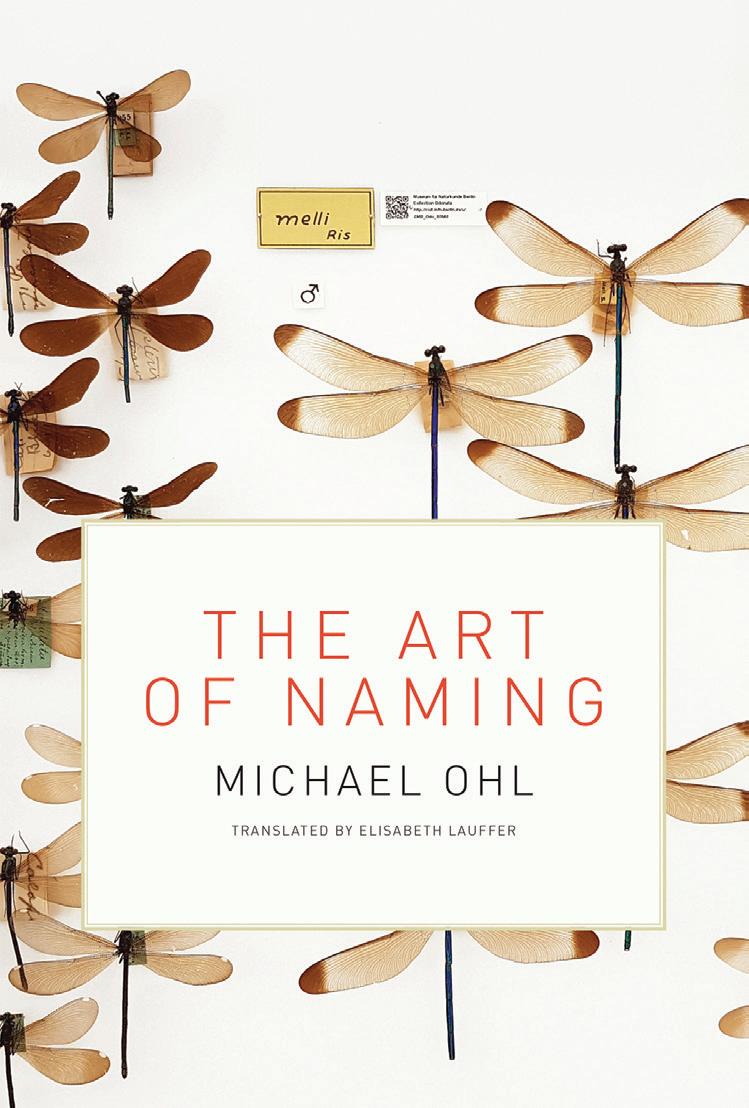
Tyrannosaurus rex Homo sapiens Heteropoda davidbowie. Behind each act of scientific naming is a story. In this entertaining and illuminating book, Michael Ohl considers scientific naming as a joyful and creative act. There are about 1.8 million discovered and named plant and animal species, and millions more still to be discovered. Naming is the necessary next step after discovery; it is through the naming of species that we perceive and understand nature. Ohl explains the process, with examples, anecdotes, and a wildly varied cast of characters. He describes the rules for scientific naming; the vernacular isn’t adequate. These rules—in standard binomial nomenclature, the generic name followed by specific name—go back to Linnaeus; but they are nevertheless open to idiosyncrasy and individual expression. A lizard is designated Barbaturex morrisoni (in honor of the Doors’ Jim Morrison, the Lizard King); a member of the horsefly family Scaptia beyonceae. Ohl, a specialist in “winged things that sting,” confesses that among the many wasp species he has named is Ampulex dementor, after the dementors in the Harry Potter novels. Scientific names have also been deployed by scientists to insult other scientists, to make political statements, and as expressions of romantic love: “I shall name this beetle after my beloved wife.”
The Art of Naming takes us on a surprising and fascinating journey, in the footsteps of the discoverers of species and the authors of names, into the nooks and crannies and drawers and cabinets of museums, and through the natural world of named and not-yet-named species.

From Tyrannosaurus rex to Heteropoda davidbowie : scientific naming as a joyful and creative act.
April 6 x 9, 320 pp. 61 illus.
$29.95T/£24.95 cloth 978-0-262-03776-1
Left: Boxes containing paraffin blocks with reproductive organs of monotremes (platypus and echidnas) and marsupials (kangaroos, possums, and related) for histological sectioning. Museum für Naturkunde Berlin, M. Ohl photo.
Right: A starfish specimen ( Paulia horrida Gray, 1840). Museum für Naturkunde Berlin, M. Ohl photo.
 Michael Ohl is a biologist at the Natural History Museum of Berlin and an Associate Professor at Humboldt University in Berlin.
Michael Ohl is a biologist at the Natural History Museum of Berlin and an Associate Professor at Humboldt University in Berlin.
TRADE 1 MITPRESS.MIT.EDU | SPRING 2018 science
An engaging and unabashedly opinionated examination of what translation is and isn’t. April 5 3/8 x 8, 232 pp.
$22.95T/£18.95 cloth 978-0-262-03799-0
Sympathy for the Traitor
A Translation Manifesto
Mark Polizzotti
For some, translation is the poor cousin of literature, a necessary evil if not an outright travesty—summed up by the old Italian play on words, traduttore, traditore (translator, traitor). For others, translation is the royal road to cross-cultural understanding and literary enrichment. In this nuanced and provocative study, Mark Polizzotti attempts to reframe the debate along more fruitful lines. Eschewing both these easy polarities and the increasingly abstract discourse of translation theory, he brings the main questions into clearer focus: What is the ultimate goal of a translation? What does it mean to label a rendering “faithful”? (Faithful to what?) Is something inevitably lost in translation, and can something also be gained? Does translation matter, and if so, why? Unashamedly opinionated, both a manual and a manifesto, his book invites us to sympathize with the translator not as a “traitor” but as the author’s creative partner. Polizzotti, himself a translator of authors ranging from Patrick Modiano to Gustave Flaubert, explores what translation is and what it isn’t, and how it does or doesn’t work. Translation, he writes, “skirts the boundaries between art and craft, originality and replication, altruism and commerce, genius and hack work.” In Sympathy for the Traitor, he shows us how to read not only translations but also the act of translation itself, treating it not as a problem to be solved but as an achievement to be celebrated—something, as Goethe put it, “impossible, necessary, and important.”
Mark Polizzotti has translated more than fifty books, including works by Patrick Modiano, Gustave Flaubert, Raymond Roussel, Marguerite Duras, and Paul Virilio. Publisher and Editor-in-Chief at the Metropolitan Museum of Art, he is also the author of Revolution of the Mind: The Life of André Breton and other books.

TRADE 2 SPRING 2018 | MITPRESS.MIT.EDU
literature | linguistics
The Deep Learning Revolution
Terrence J. Sejnowski
The deep learning revolution has brought us driverless cars, the greatly improved Google Translate, fluent conversations with Siri and Alexa, and enormus profits from automated trading on the New York Stock Exchange. Deep learning networks can play poker better than professional poker players and defeat a world champion at Go. In this book, Terry Sejnowski explains how deep learning went from being an arcane academic field to a disruptive technology in the information economy.

Sejnowski played an important role in the founding of deep learning, as one of a small group of researchers in the 1980s who challenged the prevailing logic-and-symbol based version of AI. The new version of AI Sejnowski and others developed, which became deep learning, is fueled instead by data. Deep networks learn from data in the same way that babies experience the world, starting with fresh eyes and gradually acquiring the skills needed to navigate novel environments. Learning algorithms extract information from raw data; information can be used to create knowledge; knowledge underlies understanding; understanding leads to wisdom. Someday a driverless car will know the road better than you do and drive with more skill; a deep learning network will diagnose your illness; a personal cognitive assistant will augment your puny human brain. It took nature many millions of years to evolve human intelligence; AI is on a trajectory measured in decades. Sejnowski prepares us for a deep learning future.
Terrence J. Sejnowski holds the Francis Crick Chair at the Salk Institute for Biological Studies and is a Distinguished Professor at the University of California, San Diego. He was a member of the advisory committee for the Obama administration’s BRAIN initiative and is President of the Neural Information Processing (NIPS) Foundation. He has published twelve books, including (with Patricia Churchland) The Computational Brain (25th Anniversary Edition, MIT Press).
How deep learning—from Google Translate to driverless cars to personal cognitive assistants—is changing our lives and transforming every sector of the economy.
June 6 x 9, 256 pp. 134 illus.
$27.95T/£22.95 cloth 978-0-262-03803-4
TRADE 3 MITPRESS.MIT.EDU | SPRING 2018 science
The election of Donald Trump and the great disruption in the news and social media. April 6 x 9, 248 pp.
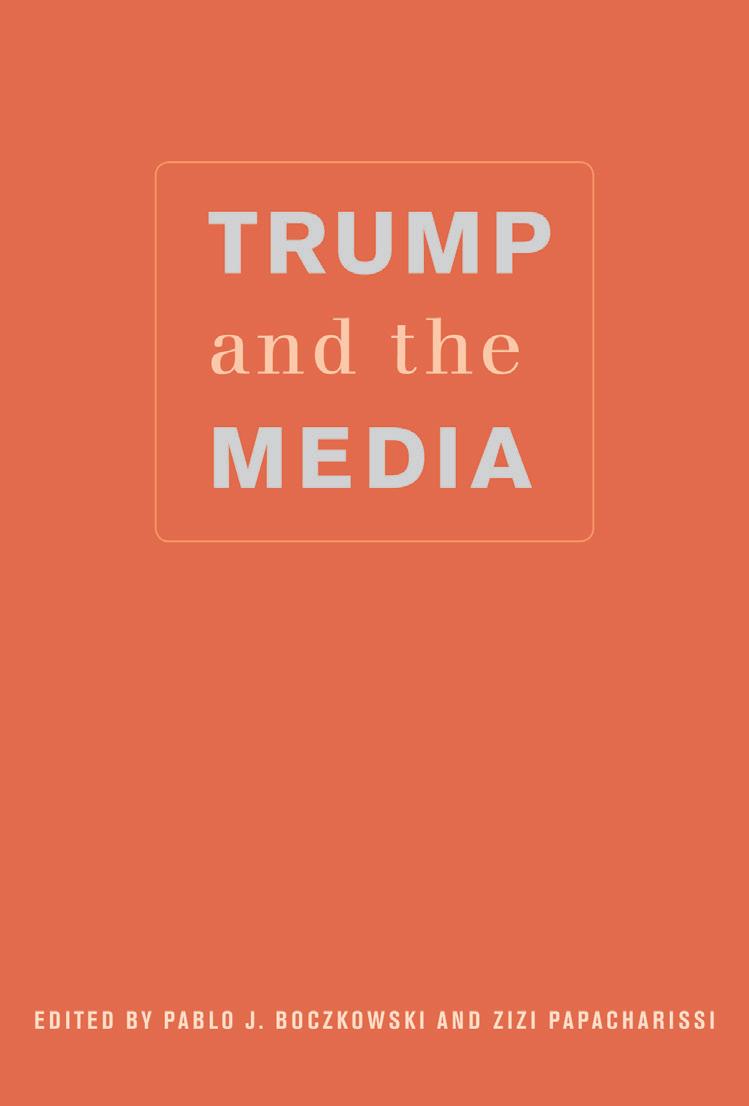
$19.95T/£14.95 paper 978-0-262-03796-9
Trump and the Media
edited by Pablo J. Boczkowski and Zizi Papacharissi
Donald Trump’s election as the 45th President of the United States came as something of a surprise—to many analysts, journalists, and voters. The New York Times’s The Upshot gave Hillary Clinton an 85 percent chance of winning the White House even as the returns began to come in. What happened? And what role did the news and social media play in the election? In Trump and the Media, journalism and technology experts grapple with these questions in a series of short, thought-provoking essays. Considering the disruption of the media landscape, the disconnect between many voters and the established news outlets, the emergence of fake news and “alternative facts,” and Trump’s own use of social media, these essays provide a window onto broader transformations in the relationship between information and politics in the twenty-first century.
The contributors find historical roots to current events in Cold War notions of us versus them, trace the genealogy of the assault on facts, and chart the collapse of traditional news gatekeepers. They consider such topics as Trump’s tweets (diagnosed by one writer as “Twitterosis”) and the constant media exposure given to Trump during the campaign. They propose photojournalists as visual fact checkers (“lessons of the paparazzi”) and debate whether Trump’s administration is authoritarian or just authoritarian-like. Finally, they consider future strategies for the news and social media to improve the quality of democratic life.
Pablo J. Boczkowski is Professor in the Department of Communication Studies at Northwestern University. He is the author of Digitizing the News: Innovation in Online Newspapers, coauthor of The News Gap: When the Information Preferences of the Media and the Public Diverge, and coeditor of Remaking the News: Essays on the Future of Journalism Scholarship in the Digital Age (all published by the MIT Press). Zizi Papacharissi is Professor and Head of the Communication Department and Professor of Political Science at the University of Illinois at Chicago. She is the author and editor of nine books, including A Private Sphere: Democracy in a Digital Age, Affective Publics: Sentiment, Technology and Politics, and the Networked Self series.
Contributors
Mike Ananny, Chris W. Anderson, Rodney Benson, Pablo J. Boczkowski, danah boyd, Robyn Caplan, Michael X. Delli Carpini, Josh Cowls, Susan J. Douglas, Keith N. Hampton, Dave Karpf, Daniel Kreiss, Seth C. Lewis, Zoey Lichtenheld, Andrew L. Mendelson, Gina Neff, Zizi Papacharissi, Katy E. Pearce, Victor Pickard, Sue Robinson, Adrienne Russell, Ralph Schroeder, Michael Schudson, Julia Sonnevend, Keren Tenenboim-Weinblatt, Tina Tucker, Fred Turner, Nikki Usher, Karin Wahl-Jorgensen, Silvio Waisbord, Barbie Zelizer
TRADE 4 SPRING 2018 | MITPRESS.MIT.EDU media
| politics
Science Not Silence
Voices from the March for Science Movement edited
by Stephanie Fine Sasse and Lucky Tran
In January 2017, an idea on social media launched the global March for Science movement. In a few short months, more than 600 cities, 250 partners, and countless volunteers banded together to organize a historical event that drew people of all backgrounds, interests, and political leanings. On April 22, 2017, more than one million marchers worldwide took to the streets to stand up for the importance of science in society and their own lives—and each of them has a story to tell. Through signs, artwork, stories, and photographs, Science Not Silence shares some of the voices from the March for Science movement.

From Antarctica to the North Pole, from under the sea to the tops of mountains, whether alone or alongside thousands, people marched for science. A citizen scientist with advanced ALS spent countless hours creating an avatar using technology that tracks his eye movements so that he could give a speech. Couples carrying babies born using in vitro fertilization dressed them in shirts that said “Made By Science.” The former U.S. Chief Data Scientist spoke about what really makes America great. Activists championed the ways science should serve marginalized communities. Artists created stunning signs, patients marched with the doctors who saved them, and scientists marched with the community that supports them. Every story is a call to action.
The march was just the beginning. Now the real work begins. Science Not Silence celebrates the success of the movement, amplifies the passion and creativity of its supporters, and reminds everyone how important it is to keep marching.

Stephanie Fine Sasse is a writer, researcher, and experience designer. She directs lifelong learning and science-centered social change initiatives and was a lead organizer of the March for Science–San Francisco. Lucky Tran, who holds a PhD in molecular biology, is a science communicator based at Columbia University and served on the March for Science steering committee.
Signs, artwork, stories, and photographs from the March for Science Movement and community.

April 8 x 9, 176 pp. 300 illus., color throughout $14.95T/£12.95 paper 978-0-262-03810-2
Photographs of the Washington, D.C., March for Science by Kisha Bari. From Science Not Silence
TRADE 5 MITPRESS.MIT.EDU | SPRING 2018
science
Crucial texts, many available in English for the first time, written before and during the Bolshevik Revolution by the radical biopolitical utopianists of Russian Cosmism. March 6 x 9, 256 pp. 1 illus. $27.95T/£22.95 cloth 978-0-262-03743-3
art | Russia studies
Russian Cosmism
edited by Boris Groys
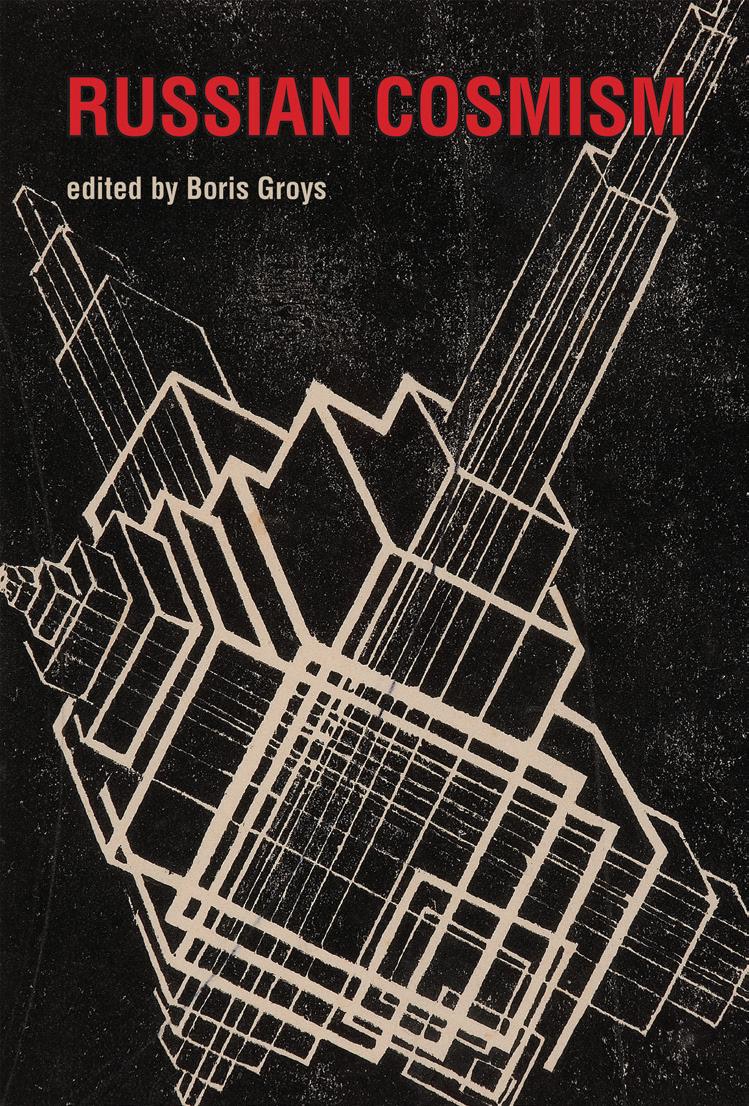
Cosmism emerged in Russia before the October Revolution and developed though the 1920s and 1930s; like Marxism and the European avant-garde, two other movements that shared this intellectual moment, Russian Cosmism rejected the contemplative for the transformative, aiming to create not merely new art or philosophy but a new world. Cosmism went the furthest in its visions of transformation, calling for the end of death, the resuscitation of the dead, and free movement in cosmic space. This volume collects crucial texts, many available in English for the first time, by the radical biopolitical utopianists of Russian Cosmism. Cosmism was developed by the Russian philosopher Nikolai Fedorov in the late nineteenth century; he believed that humans had an ethical obligation not only to care for the sick but to cure death using science and technology; outer space was the territory of both immortal life and infinite resources. After the revolution, a new generation pursued Fedorov’s vision. Cosmist ideas inspired visual artists, poets, filmmakers, theater directors, novelists (Tolstoy and Dostoevsky read Fedorov’s writings), architects, and composers, and influenced Soviet politics and technology. In the 1930s, Stalin quashed Cosmism, jailing or executing many members of the movement. Today, when the philosophical imagination has again become entangled with scientific and technological imagination, the works of the Russian Cosmists seem newly relevant.
Boris Groys is Professor of Russian and Slavic Studies at New York University, Senior Research Fellow at the Academy of Design in Karlsruhe, Germany, and Professor at the European Graduate School in Saas Fee, Switzerland. He is the author of Art Power, History Becomes Form: Moscow Conceptualism (both published by the MIT Press), and other books.
Contributors
Alexander Bogdanov, Alexander Chizhevsky, Nikolai Fedorov, Boris Groys, Valerian Muravyev, Alexander Svyatogor, Konstantin Tsiolkovsky, Anton Vidokle, Brian Kuan Wood
TRADE 6 SPRING 2018 | MITPRESS.MIT.EDU
Chaos and Awe
Painting for the 21st Century edited by Mark W. Scala foreword by Susan H. Edwards essays by Media Farzin, Simon
Morley, and Matthew Ritchie
In an age of global instability, the threat of chaos looms. Or is the threat more spectral than real? The fear of chaos may simply be our response to living in a world controlled by powerful forces beyond our understanding. Chaos and Awe demonstrates the aptness and relevance of painting as a medium for expressing the uncertainty of our era. It presents more than fifty paintings, by an international array of contemporary artists, that induce sensations of disturbance, curiosity, and expansiveness—the new sublime, derived not from the unfathomable mystery of nature but from the hidden and often insidious forces of culture. Essays by art historians and “painters who write” such as Matthew Ritchie offer context and illumination.
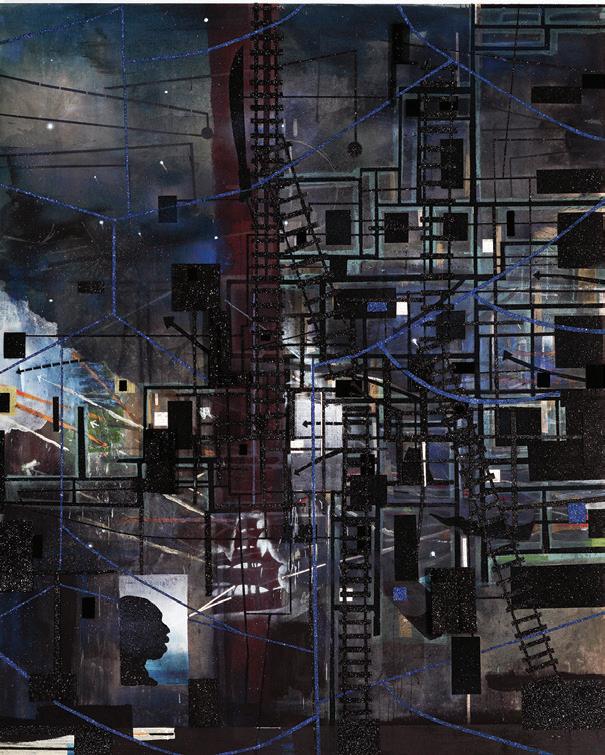
Chaos and Awe, which accompanies a major exhibition at the Frist Center for the Visual Arts in Nashville, shows that painting’s capacity to represent the liminal space between the real and the virtual allows it to portray the shifting ground of today’s social imaginary. With suggestions of fragmentation, instability, and murkiness, these paintings enclose what seems to be (as Simon Morley writes in his essay) “wholly unenclosable.”
More than fifty paintings, reproduced in color, and essays explore the aptness and relevance of painting in an era of uncertainty. March 8 x 10, 160 pp. 76 color illus. $30.00T/£24.95 paper 978-0-262-53497-0

EXHIBITION
Frist Center for the Visual Arts, Nashville, Tennessee June 22–September 16, 2018
 Mark W. Scala is Chief Curator at the Frist Center for the Visual Arts in Nashville.
Mark W. Scala is Chief Curator at the Frist Center for the Visual Arts in Nashville.
TRADE 7 MITPRESS.MIT.EDU | SPRING 2018
art
Ahmed Alsoudani. Birds, 2015. Acrylic, charcoal, and colored pencil on canvas, 82 x 52 in. Courtesy of the artist and Marlborough Contemporary. © Ahmed Alsoudani
Radcliffe Bailey. EW, SN, 2011. Acrylic, glitter, and velvet on canvas, 144 x 96 x 8 in. High Museum of Art. © Radcliffe Bailey, courtesy of the artist and Jack Shainman Gallery, New York
Imagining a future in which humans fundamentally reshape the natural world using nanotechnology, synthetic biology, de-extinction, and climate engineering. March 6 x 9, 208 pp.
$25.95T/£20.95 cloth 978-0-262-03761-7
science
The Synthetic Age
Outdesigning Evolution, Resurrecting Species, and Reengineering Our World Christopher J. Preston

We have all heard that there are no longer any places left on Earth untouched by humans. The significance of this goes beyond statistics documenting melting glaciers and shrinking species counts. It signals a new geological epoch. In The Synthetic Age, Christopher Preston argues that what is most startling about this coming epoch is not only how much impact humans have had but, more important, how much deliberate shaping they will start to do. Emerging technologies promise to give us the power to take over some of Nature’s most basic operations. It is not just that we are exiting the Holocene and entering the Anthropocene; it is that we are leaving behind the time in which planetary change is just the unintended consequence of unbridled industrialism. A world designed by engineers and technicians means the birth of the planet’s first Synthetic Age.
Preston describes a range of technologies that will reconfigure Earth’s very metabolism: nanotechnologies that can restructure natural forms of matter; “molecular manufacturing” that offers unlimited repurposing; synthetic biology’s potential to build, not just read, a genome; “biological mini-machines” that can outdesign evolution; the relocation and resurrection of species; and climate engineering attempts to manage solar radiation by synthesizing a volcanic haze, cool surface temperatures by increasing the brightness of clouds, and remove carbon from the atmosphere with artificial trees that capture carbon from the breeze.
What does it mean when humans shift from being caretakers of the Earth to being shapers of it? And in whom should we trust to decide the contours of our synthetic future? These questions are too important to be left to the engineers.
Christopher J. Preston is Professor of Philosophy and a Research Fellow in the Mansfield Center’s Program on Ethics and Public Affairs at the University of Montana.
TRADE 8 SPRING 2018 | MITPRESS.MIT.EDU
digital culture
Artificial Unintelligence

How Computers Misunderstand the World
Meredith Broussard
In Artificial Unintelligence, Meredith Broussard argues that our collective enthusiasm for applying computer technology to every aspect of life has resulted in a tremendous amount of poorly designed systems. We are so eager to do everything digitally—hiring, driving, paying bills, even choosing romantic partners—that we have stopped demanding that our technology actually work. Broussard, a software developer and journalist, reminds us that there are fundamental limits to what we can (and should) do with technology. With this book, she offers a guide to understanding the inner workings and outer limits of technology—and issues a warning that we should never assume that computers always get things right.
Making a case against technochauvinism—the belief that technology is always the solution—Broussard argues that it’s just not true that social problems would inevitably retreat before a digitally enabled Utopia. To prove her point, she undertakes a series of adventures in computer programming. She goes for an alarming ride in a driverless car, concluding “the cyborg future is not coming any time soon”; uses artificial intelligence to investigate why students can’t pass standardized tests; deploys machine learning to predict which passengers survived the Titanic disaster; and attempts to repair the U.S. campaign finance system by building AI software. If we understand the limits of what we can do with technology, Broussard tells us, we can make better choices about what we should do with it to make the world better for everyone.
Meredith Broussard is an Assistant Professor in the Arthur L. Carter Journalism Institute at New York University. A former features editor at the Philadelphia Inquirer and software developer at AT&T Bell Labs and the MIT Media Lab, she has written articles and essays for the Atlantic, Harper’s, Slate, the Washington Post, and other publications.
A guide to understanding the inner workings and outer limits of technology and why we should never assume that computers always get it right.
May 6 x 9, 240 pp. 11 illus.
$24.95T/£19.95 cloth 978-0-262-03800-3
TRADE 9 MITPRESS.MIT.EDU | SPRING 2018
An expert on business strategy offers a pragmatic take on how businesses of all sizes balance the competing demands of profitability and employment with sustainability. March 6 x 9, 528 pp. 23 illus.
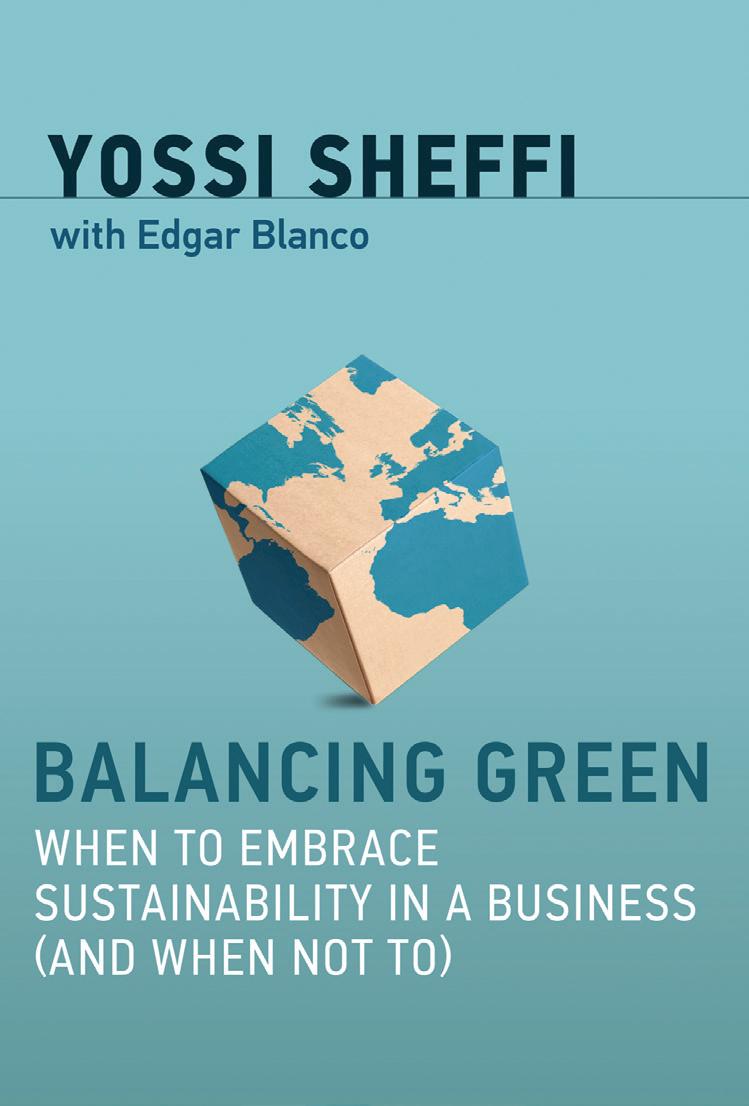
$29.95T/£24.95 cloth 978-0-262-03772-3
business | management
Balancing Green
When to Embrace Sustainability in a Business (and When Not To)
Yossi Sheffi with Edgar Blanco
The demands and stresses on companies only grow as executives face a multitude of competing business goals. Their stakeholders are interested in corporate profits, jobs, business growth, and environmental sustainability. In this book, business strategy expert Yossi Sheffi offers a pragmatic take on how businesses of all sizes—from Coca Cola and Siemens to Dr. Bronner’s Magical Soaps and Patagonia—navigate these competing goals. Drawing on extensive interviews with more than 250 executives, Sheffi examines the challenges, solutions, and implications of balancing traditional business goals with sustainability.
Sheffi, author of the widely read The Resilient Enterprise, argues that business executives’ personal opinions on environmental sustainability are irrelevant. The business merits of environmental sustainability are based on the fact that even the most ardent climate change skeptics in the C-suite face natural resource costs, public relations problems, regulatory burdens, and a green consumer segment. Sheffi presents three basic business rationales for corporate sustainability efforts: cutting costs, reducing risk, and achieving growth.
For companies, sustainability is not a simple case of “profits versus planet” but is instead a more subtle issue of (some) people versus (other) people—those looking for jobs and inexpensive goods versus others who seek a pristine environment. This book aims to help companies satisfy these conflicting motivations for both economic growth and environmental sustainability.
Yossi Sheffi is Elisha Gray II Professor of Engineering Systems at MIT and Director of the MIT Center for Transportation and Logistics. He has worked with leading manufacturers and logistics service providers around the world on operations and strategy issues and is the author of three award-winning books: The Resilient Enterprise: Overcoming Vulnerability for Competitive Advantage, Logistics Clusters: Delivering Value and Driving Growth, and The Power of Resilience: How the Best Companies Manage the Unexpected, all published by the MIT Press.
TRADE 10 SPRING 2018 | MITPRESS.MIT.EDU
Big Is Beautiful
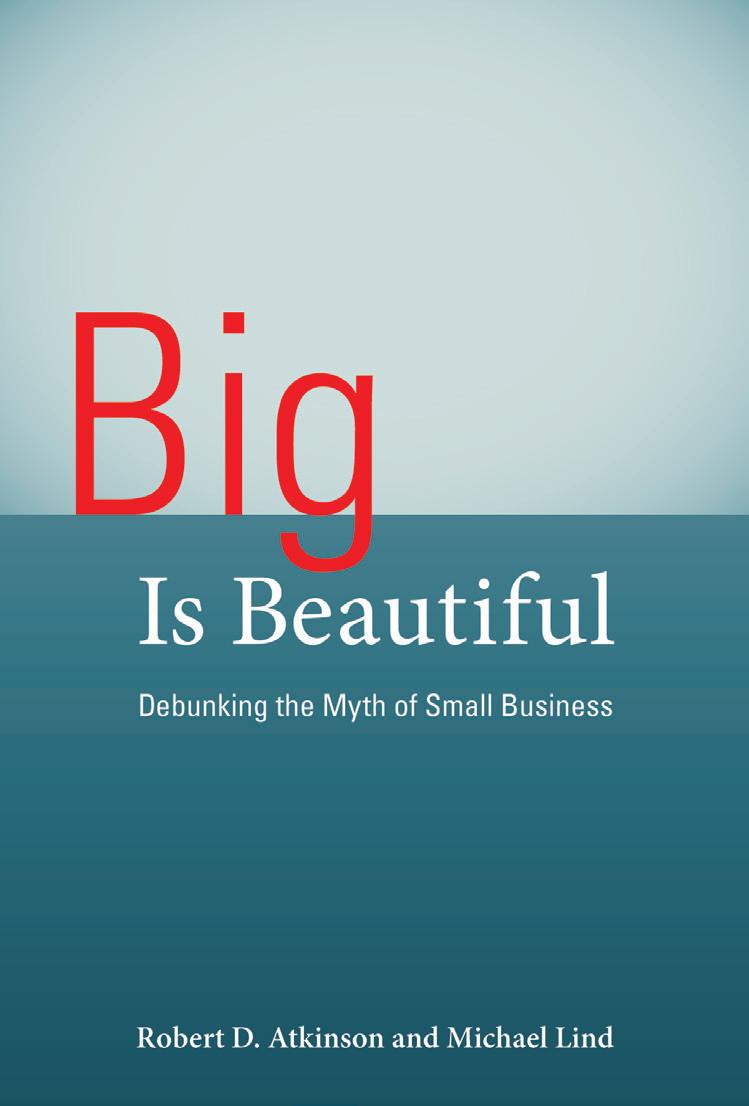
Debunking the Myth of Small Business
Robert D. Atkinson
and Michael Lind
In this provocative book, Robert Atkinson and Michael Lind argue that small business is not, as is widely claimed, the basis of American prosperity. Small business is not responsible for most of the country’s job creation and innovation. American democracy does not depend on the existence of brave bands of self-employed citizens. Small businesses are not systematically discriminated against by government policy makers. Rather, Atkinson and Lind argue, small businesses are not the font of jobs because most small businesses fail. The only kind of small firm that contributes to technological innovation is the technological start-up, and its success depends on scaling up. The idea that self-employed citizens are the foundation of democracy is a relic of Jeffersonian dreams of an agrarian society. And governments, motivated by a confused mix of populist and free market ideology, in fact go out of their way to promote small business. Every modern president has sung the praises of small business, and every modern president, according to Atkinson and Lind, has been wrong.
Pointing to the advantages of scale for job creation, productivity, innovation, and virtually all other economic benefits, Atkinson and Lind argue for a “size neutral” policy approach in both the United States and around the world that would encourage growth rather than enshrine an anachronism. If we overthrow the “small is beautiful” ideology, we will be able to recognize large firms as the engines of progress and prosperity that they are.
Robert D. Atkinson is Founder and President of the Information Technology and Innovation Foundation, a Washington, D.C. think tank, and coauthor of Innovation Economics: The Race for Global Advantage Michael Lind is a Visiting Professor at the Lyndon B. Johnson School of Public Affairs of the University of Texas. He is the author of numerous books on politics and public policy, including Land of Promise: An Economic History of the United States He is a columnist for Salon and writes frequently for the New York Times and the Financial Times
Why small business is not the basis of American prosperity, not the foundation of American democracy, and not the champion of job creation.
April 6 x 9, 320 pp. 9 illus.
$29.95T/£24.95 cloth 978-0-262-03770-9
TRADE 11 MITPRESS.MIT.EDU | SPRING 2018
business | economics
A panoramic view of gay rights, gay life, and the gay experience around the world. May 6 x 9, 296 pp.
$27.95T/£22.95 cloth 978-0-262-03781-5
Global Gay
How Gay Culture Is Changing the World
Frédéric Martel translated by Patsy Baudoin foreword by Michael Bronski
In Global Gay, Frédéric Martel visits more than fifty countries and documents a revolution underway around the world: the globalization of LGBT rights. From Saudi Arabia to South Africa, from Amsterdam to Tel Aviv, from Singapore to the United States, activists, culture warriors, and ordinary people are part of a movement. Martel interviews the proprietor of a “gay-friendly” café in Amman, Jordan; a Cuban-American television journalist in Fort Lauderdale, Florida; a South African jurist who worked with Nelson Mandela to enshrine gay rights in the country’s constitution; an American lawyer who worked on the campaign for marriage equality; an Egyptian man who fled his country after escaping a raid on a gay club; and many others. He tells us that in China, homosexuality is neither prohibited nor permitted, and that much Chinese gay life takes place on social media; that in Iran, because of the strict separation of the sexes, it seems almost easier to be gay than heterosexual; and that Raul Castro’s daughter, a gay rights icon in Cuba, expressed her lingering anti-American sentiments by calling for Pride celebrations in May rather than June. Ten countries maintain the death penalty for homosexuals. “Homophobia is what Arab governments give to Islamists to keep them calm,” one activist tells Martel.
Martel finds that although the “gay American way of life” has created a global template for gay activism and culture, each country offers distinctly local variations. And around the world, the status of gay rights has become a measure of a country’s democracy and modernity.
Global Gay has been adapted into an award-winning television documentary. This English edition has been thoroughly revised and updated.
Frédéric Martel, a researcher at Sciences-Po Paris and ZHdK Zurich, is the author of nine books, the host and producer of the French radio show Soft Power, and foreign affairs columnist at Slate.fr.
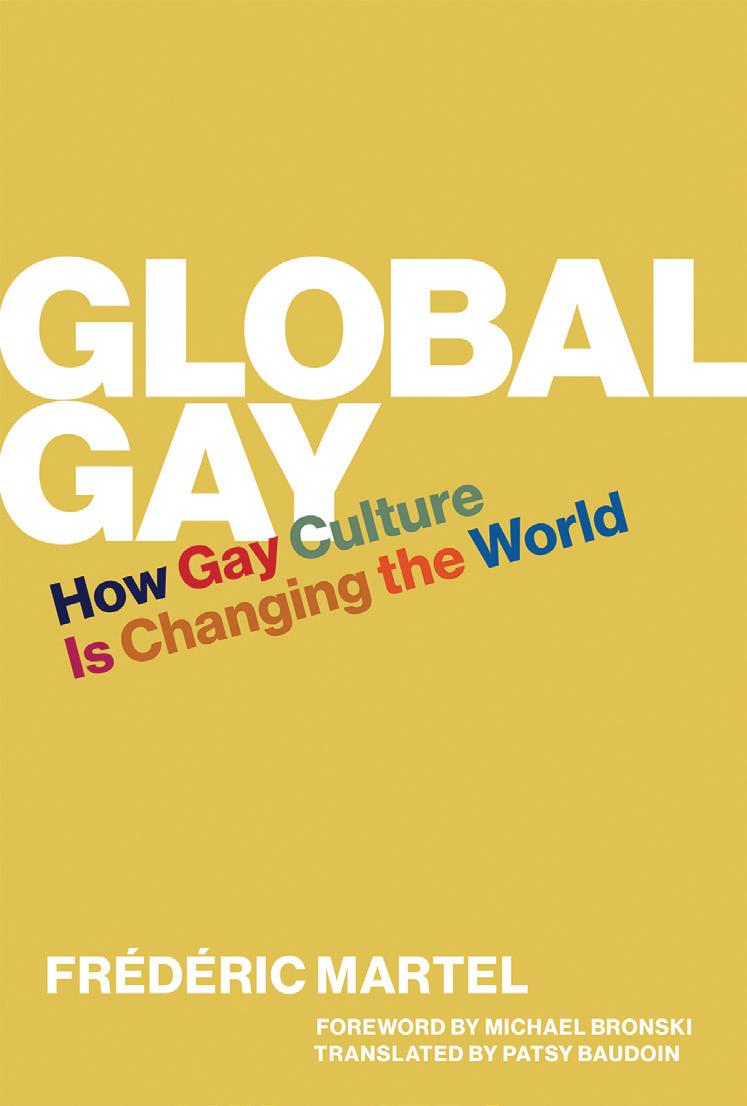
TRADE 12 SPRING 2018 | MITPRESS.MIT.EDU
gay studies
political theory | cultural studies
The Walls Have the Floor
Mural Journal, May ’68 edited by Julien Besançon translated by Henry Vale foreword by Tom McDonough afterword by Whitney Phillips

Graffiti itself became a form of freedom. —Julien Besançon, The Walls Have the Floor
Fifty years ago, in 1968, barricades were erected in the streets of Paris for the first time since the Paris Commune of nearly one hundred years before. The events of May 1968 began with student protests against the Vietnam War and American imperialism, expanded to rebellion over student living conditions and resistance to capitalist consumerism. An uprising at the Sorbonne was followed by wildcat strikes across France, uniting students and workers and bringing the country’s economy to a halt. There have been many accounts of these events. This book tells the story in a different way, through the graffiti inscribed by protestors as they protested.
The graffiti collected here is by turns poetic, punning, hopeful, sarcastic, and crude. It quotes poets as often as it does political thinkers. Many wrote “I have nothing to write,” signaling not their naiveté but their desire to participate. Other anonymous declarations included “Prohibiting prohibited”; “The dream is reality”; “The walls have ears. Your ears have walls”; “Exaggeration is the beginning of invention”; “Comrades, you’re nitpicking”; “You don’t beg for the right to live, you take it”; and “I came/I saw/I believed.” A meeting is called at the Grand Amphitheater of the Sorbonne: “Agenda: the worldwide revolution.” This was interactive, participatory politics before Twitter and Facebook.
Although the revolution of May 1968 didn’t topple the government (Charles de Gaulle fled the country, only to return; in June, his party won a resounding electoral mandate), it made history. In The Walls Have the Floor, Julien Besançon collected traces of this history before the walls were painted over, and published this collection in July 1968 even as the paint was drying. Read today, the graffiti of 1968 captures, in a way no conventional history can, the defining spontaneity of the events.
Julian Besançon (1932–2017) was a radio, television, and newspaper journalist who covered the May 1968 uprising.
The graffiti of the French student and worker uprising of May 1968, capturing participatory politics in action.
April 7 x 4 1/2, 184 pp. $14.95T/£12.95 paper 978-0-262-03802-7
TRADE 13 MITPRESS.MIT.EDU | SPRING 2018
How forty years of research on thirty neurons in the stomach of a lobster has yielded valuable insights for the study of the human brain. May 6 x 9, 280 pp. 12 color plates, 29 b&w illus., $27.95T/£22.95 cloth 978-0-262-03778-5
Lessons from the Lobster
Eve Marder’s Work in Neuroscience
Charlotte Nassim
Neuroscientist Eve Marder has spent forty years studying thirty neurons in the stomach of a lobster. Her focus on this tiny network of cells has yielded valuable insights into the much more complex workings of the human brain; she has become a leading voice in neuroscience. In Lessons from the Lobster, Charlotte Nassim describes Marder’s work and its significance accessibly and engagingly, tracing the evolution of a supremely gifted scientist’s ideas.

From the lobster’s digestion to human thought is very big leap indeed. Our brains selectively recruit networks from about ninety billion available neurons; the connections are extremely complex. Nevertheless, as Nassim explains, Marder’s study of a microscopic knot of stomatogastric neurons in lobsters and crabs, a small network with a countable number of neurons, has laid vital foundations for current brain research projects.
Marder’s approach is as intuitive as it is analytic, but always firmly anchored to data. Every scrap of information is a pointer for Marder; her discoveries depend on her own creative thinking as much as her laboratory’s findings. Nassim describes Marder’s important findings on neuromodulation, the secrets of neuronal networks, and homeostasis. Her recognition of the importance of animal-to-animal variability has influenced research methods everywhere.
Marder has run her laboratory at Brandeis University since 1978. She was President of the Society for Neuroscience in 2008 and she is the recipient of numerous awards, including the 2016 Kavli Award in Neuroscience and the 2013 Gruber Prize in Neuroscience. Research that reaches the headlines often depends on technical fireworks, and especially on spectacular images. Marder’s work seldom fits that pattern, but this book demonstrates that a brilliant scientist working carefully and thoughtfully can produce groundbreaking results.
Charlotte Nassim is an independent scholar and writer based in London.
TRADE 14 SPRING 2018 | MITPRESS.MIT.EDU
neuroscience | biography
psychology | linguistics
Translating Happiness

A Cross-Cultural Lexicon of Well-Being
Tim Lomas
Western psychology is rooted in the philosophies and epistemologies of Western culture. But what of concepts and insights from outside this frame of reference? Certain terms not easily translatable into English— for example, nirvāṇa (from Sanskrit), or agápē (from Classical Greek), or turangawaewae (from Māori)—are rich with meaning but largely unavailable to English-speaking students and seekers of well-being. In this book, Tim Lomas argues that engaging with “untranslatable” terms related to well-being can enrich not only our understanding but also our experience. We can use these words, Lomas suggests, to understand and express feelings and experiences that were previously inexpressible.
Lomas examines 400 words from 80 languages, arranges them thematically, and develops a theoretical framework that highlights the varied dimensions of well-being and traces the connections between them. He identifies three basic dimensions of well-being—feelings, relationships, and personal development—and then explores each in turn through untranslatable words. Ânanda, for example, usually translated as bliss, can have spiritual associations in Buddhist and Hindu contexts; kefi in Greek expresses an intense emotional state—often made more intense by alcohol. The Japanese concept of koi no yokan means a premonition or presentiment of love, capturing the elusive and vertiginous feeling of being about to fall for someone, imbued with melancholy and uncertainty; the Yiddish term mensch has been borrowed from its Judaic and religious connotations to describe an all-around good human being; and Finnish offers sisu—inner determination in the face of adversity.
Expanding the lexicon of well-being in this way showcases the richness of cultural diversity while reminding us powerfully of our common humanity. Lomas’s website, www.drtimlomas.com/lexicography, allows interested readers to contribute their own words and interpretations.
Tim Lomas is a Lecturer in Positive Psychology in the School of Psychology at the University of East London.
How embracing untranslatable terms for well-being—from the Finnish sisu to the Yiddish mensch —can enrich our emotional understanding and experience.
April 6 x 9, 240 pp. 11 illus. $29.95T/£24.95 cloth 978-0-262-03748-8
TRADE 15 MITPRESS.MIT.EDU | SPRING 2018
A frontline account of how to fight corruption, from Nigeria’s former finance minister Ngozi Okonjo-Iweala. April 6 x 9, 176 pp.

$29.95T/£24.95 cloth 978-0-262-03801-0
Also available
Reforming the Unreformable Lessons from Nigeria Ngozi Okonjo-Iweala
$15.95T/£13.95 paper 978-0-262-52687-6
economics | Africa studies
Fighting Corruption Is Dangerous
The Story Behind the Headlines Ngozi Okonjo-Iweala
In Fighting Corruption Is Dangerous, Ngozi Okonjo-Iweala has written a primer for those working to root out corruption and disrupt vested interests. Drawing on her experience as Nigeria’s finance minister and that of her team, she describes dangers, pitfalls, and successes in fighting corruption. She provides practical lessons learned and tells how anti-corruption advocates need to equip themselves. Okonjo-Iweala details the numerous ways in which corruption can divert resources away from development, rewarding the unscrupulous and depriving poor people of services.
Okonjo-Iweala discovered just how dangerous fighting corruption could be when her 83-year-old mother was kidnapped in 2012 by forces who objected to some of Okonjo-Iweala’s efforts at reform—in particular a crackdown on fraudulent claims for oil subsidy payments, a huge drain on the country’s finances. The kidnappers’ first demand was that Okonjo-Iweala resign from her position on live television and leave the country. Okonjo-Iweala did not resign, her mother escaped, and the program of economic reforms continued. “Telling my story is risky,” Okonjo-Iweala writes. “But not telling it is also dangerous.” Her book ultimately leaves us with hope, showing that victories are possible in the fight against corruption.
Ngozi Okonjo-Iweala was Nigeria’s Minister of Finance from 2003 to 2006 and from 2011 to 2015, and Foreign Minister in 2006. She was Managing Director of the World Bank from 2007 to 2011, overseeing South Asia, Europe, Central Asia, and Africa, and is currently Senior Adviser at Lazard and Board Chair of Gavi, the Vaccine Alliance. She is the author of Reforming the Unreformable: Lessons from Nigeria (MIT Press).

TRADE 16 SPRING 2018 | MITPRESS.MIT.EDU
We Now Disrupt This Broadcast
How Cable Transformed Television and the Internet Revolutionized It All
Amanda D. Lotz
Cable television channels were once the backwater of American television, programming recent and not-so-recent movies and reruns of network shows. Then came La Femme Nikita, OZ, The Sopranos, Mad Men, Game of Thrones, and The Walking Dead. And then, just as “prestige cable” became a category, came House of Cards and Netflix, Hulu, Amazon Video, and other Internet distributors of television content. What happened? In We Now Disrupt This Broadcast, Amanda Lotz chronicles the collision of new technologies, changing business strategies, and innovative storytelling that produced an era termed “peak TV.”
Lotz explains that changes in the business of television expanded the creative possibilities of television. She describes the costly infrastructure rebuilding undertaken by cable service providers in the late 1990s and the struggles of cable channels to produce (and pay for) original, scripted programming in order to stand out from the competition. These new programs defied television conventions and made viewers adjust their expectations of what television could be. Le Femme Nikita offered cable’s first antihero, Mad Men cost more than advertisers paid, The Walking Dead became the first mass cable hit, and Game of Thrones was the first global television blockbuster. Internet streaming didn’t kill cable, Lotz tells us. Rather, it revolutionized how we watch television. Cable and network television quickly established their own streaming portals. Meanwhile, cable service providers had quietly transformed themselves into Internet providers, able to profit from both prestige cable and streaming services. Far from being dead, television continues to transform.
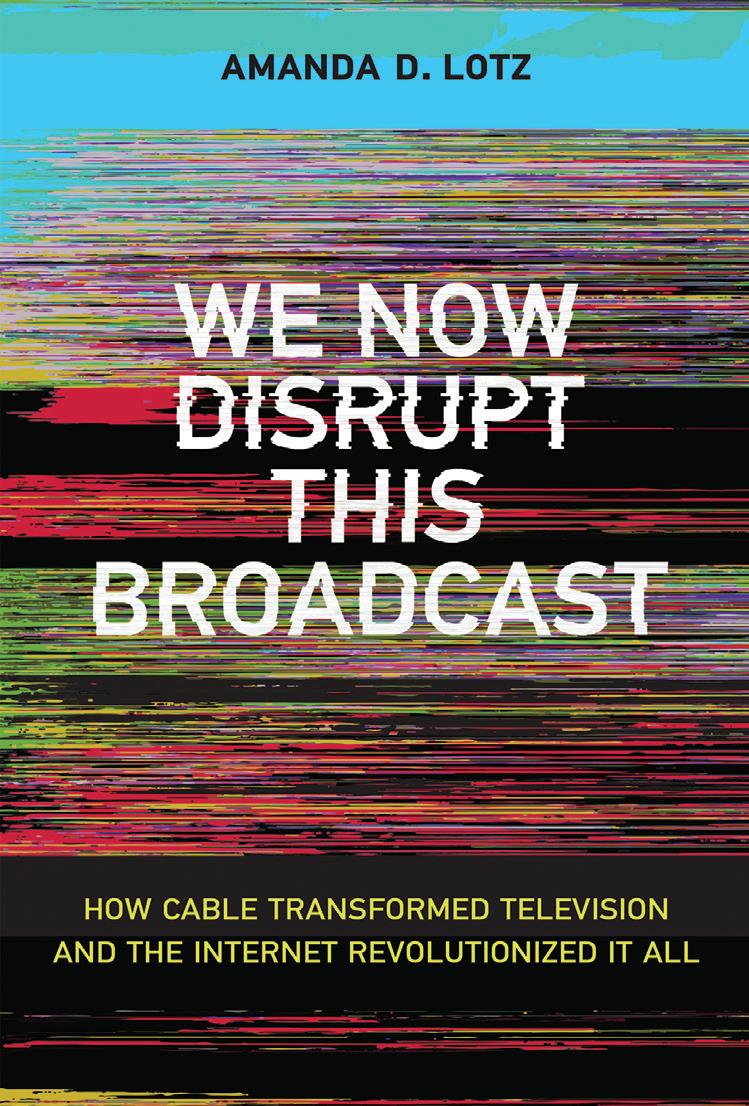
Amanda D. Lotz is Professor of Media Studies at the University of Michigan and a Fellow at the Peabody Media Center. She is the author of The Television Will Be Revolutionized, the coauthor of Understanding Media Industries and Television Studies, and the editor of Beyond Prime Time: Programming in the Post-Network Era
The collision of new technologies, changing business strategies, and innovative storytelling that produced a new golden age of TV.
April 6 x 9, 272 pp. 5 illus.
$27.95T/£22.95 cloth 978-0-262-03767-9
TRADE 17 MITPRESS.MIT.EDU | SPRING 2018 media
business
|
How solar could anchor a clean-energy transition through transformative innovation—creative financing, revolutionary technologies, and flexible energy systems. March 6 x 9, 376 pp. 46 illus.

$29.95T/£24.95 cloth 978-0-262-03768-6 A Council on Foreign Relations Book
Taming the Sun
Innovations to Harness Solar Energy and Power the Planet
Varun Sivaram
Solar energy, once a niche application for a limited market, has become the cheapest and fastest-growing power source on earth. What’s more, its potential is nearly limitless—every hour the sun beams down more energy than the world uses in a year. But in Taming the Sun, energy expert Varun Sivaram warns that the world is not yet quipped to harness erratic sunshine to meet most of its energy needs. And if solar’s current surge peters out, prospects for replacing fossil fuels and averting catastrophic climate change will dim.
Innovation can brighten those prospects, Sivaram tells us. Financial innovation is already enticing deep-pocketed investors to fund solar projects around the world, from the sunniest deserts to the poorest villages. Technological innovation could replace today’s solar panels with coatings as cheap as paint and employ artificial photosynthesis to store intermittent sunshine as convenient fuels. And systemic innovation could add flexibility to the world’s power grids and other energy systems so they can channel the sun’s unreliable energy dependably.
Unleashing all this innovation will require visionary public policy: funding researchers developing next-generation solar technologies, refashioning energy systems and economic markets, and putting together a diverse clean energy portfolio. Although solar can’t power the planet by itself, it can be the centerpiece of a global clean energy revolution.
Varun Sivaram is the Philip D. Reed Fellow for Science and Technology at the Council on Foreign Relations. He teaches “Clean Energy Innovation” at Georgetown University, is a Fellow at Columbia University’s Center for Global Energy Policy, and serves on Stanford University’s energy and environment boards. He has advised both the mayor of Los Angeles and the governor of New York on energy. He holds a PhD in condensed matter physics from Oxford University, where he was a Rhodes Scholar.
TRADE 18 SPRING 2018 | MITPRESS.MIT.EDU
energy
Global Warming and the Sweetness of Life
A Tar Sands Tale
Matt Hern and Am Johal with Joe Sacco
Confounded by global warming and in search of an affirmative politics that links ecology with social change, Matt Hern and Am Johal set off on a series of road trips to the tar sands of northern Alberta—perhaps the world’s largest industrial site, dedicated to the dirty work of extracting oil from Alberta’s vast reserves. Traveling from culturally liberal, selfconsciously “green” Vancouver, and aware that our well-meaning performances of recycling and climate-justice marching are accompanied by constant driving, flying, heating, and fossil-fuel consumption, Hern and Johal want to talk to people whose lives and fortunes depend on or are imperiled by extraction. They are seeking new definitions of ecology built on a renovated politics of land. Traveling with them is their friend Joe Sacco—infamous journalist and cartoonist, teller of complex stories from Gaza to Paris—who contributes illustrations and insights and a chapter-length comic about the contradictions of life in an oil town. Seamlessly combining travelogue, sophisticated political analysis, and ecological theory, speaking both to local residents and to leading scholars, the authors propose a new understanding of ecology that links the domination of the other-than-human world to the domination of humans by humans. They argue that any definition of ecology has to start with decolonization and that confronting global warming requires a politics that speaks to a different way of being in the world—a reconstituted understanding of the sweetness of life.

Matt Hern is a codirector of 2+10 Industries, teaches at multiple universities, and lectures widely. He is the author of What a City Is For: Remaking the Politics of Displacement (MIT Press) and other books. Am Johal is Director of Simon Fraser University’s Vancity Office of Community Engagement and the author of Ecological Metapolitics: Badiou and the Anthropocene Joe Sacco is a cartoonist and the author of Palestine, Safe Area Gorazde, The Great War, and other books.
Seeking new definitions of ecology in the tar sands of northern Alberta and searching for the sweetness of life in the face of planetary crises. March 6 x 9, 224 pp. 24 b&w illus., 6 color illus., 10-page color comic $19.95T/£14.95 paper 978-0-262-03764-8
TRADE 19 MITPRESS.MIT.EDU | SPRING 2018
environment
A book about ecology without information dumping, guilt inducing, or preaching to the choir. March 5 3/8 x 8, 216 pp. $24.95T cloth 978-0-262-03804-1
For sale in USA only
philosophy | environment
Being Ecological
Timothy Morton
Don’t care about ecology? You think you don’t, but you might all the same. Don’t read ecology books? This book is for you.

Ecology books can be confusing information dumps that are out of date by the time they hit you. Slapping you upside the head to make you feel bad. Grabbing you by the lapels while yelling disturbing facts. Handwringing in agony about “What are we going to do?” This book has none of that. Being Ecological doesn’t preach to the eco-choir. It’s for you—even, if you’re not in the choir, even if you have no idea what choirs are. You might already be ecological.
After establishing the approach of the book (no facts allowed!), Morton draws on Kant and Heidegger to help us understand living in an age of mass extinction caused by global warming. He considers the object of ecological awareness and ecological thinking: the biosphere and its interconnections. He discusses what sorts of actions count as ecological—starting a revolution? going to the garden center to smell the plants? And finally, in “Not a Grand Tour of Ecological Thought,” he explores a variety of current styles of being ecological—a range of overlapping orientations rather than preformatted self-labeling. Caught up in the us-versus-them (or you-versus-everything else) urgency of ecological crisis, Morton suggests, it’s easy to forget that you are a symbiotic being entangled with other symbiotic beings. Isn’t that being ecological?
Timothy Morton is Rita Shea Guffey Chair in English at Rice University. He is the author of Dark Ecology: For a Logic of Future Coexistence; Nothing: Three Inquiries in Buddhism (with Marcus Boon and Eric Cazdyn); Hyperobjects: Philosophy and Ecology after the End of the World; and other books.
TRADE 20 SPRING 2018 | MITPRESS.MIT.EDU
literary studies
The Book
Amaranth Borsuk
What is the book in a digital age? Is it a physical object containing pages encased in covers? Is it a portable device that gives us access to entire libraries? The codex, the book as bound paper sheets, emerged around 150 CE. It was preceded by clay tablets and papyrus scrolls. Are those books? In this volume in the MIT Press Essential Knowledge series, Amaranth Borsuk considers the history of the book, the future of the book, and the idea of the book. Tracing the interrelationship of form and content in the book’s development, she bridges book history, book arts, and electronic literature to expand our definition of an object we thought we knew intimately.
Contrary to the many reports of its death (which has been blamed at various times on newspapers, television, and e-readers), the book is alive. Despite nostalgic paeans to the codex and its printed pages, Borsuk reminds us, the term “book” commonly refers to both medium and content. And the medium has proved to be malleable. Rather than pinning our notion of the book to a single form, Borsuk argues, we should remember its long history of transformation. Considering the book as object, content, idea, and interface, she shows that the physical form of the book has always been the site of experimentation and play. Rather than creating a false dichotomy between print and digital media, we should appreciate their continuities.
Amaranth Borsuk is Assistant Professor in the School of Interdisciplinary Arts and Sciences at the University of Washington Bothell, where she also teaches in the MFA in Creative Writing and Poetics. She is the author of Between Page and Screen, a digital pop-up book of poetry, and other hybrid print/digital books.

The book as object, as content, as idea, as interface. April 5 x 7, 328 pp. 21 illus.
$15.95T/£11.95 paper 978-0-262-53541-0
The MIT Press Essential Knowledge series
21 MITPRESS.MIT.EDU | SPRING 2018
TRADE THE MIT PRESS ESSENTIAL KNOWLEDGE SERIES
How we arrived in a post-truth era, when “alternative facts” replace actual facts, and feelings have more weight than evidence. March 5 x 7, 224 pp.
$15.95T/£11.95 paper 978-0-262-53504-5
The MIT Press Essential Knowledge series
philosophy | current events
Post-Truth
Lee
C. McIntyre
Are we living in a post-truth world, where “alternative facts” replace actual facts, and feelings have more weight than evidence? How did we get here? In this volume in the MIT Press Essential Knowledge series, Lee McIntyre traces the development of the post-truth phenomenon from science denial through the rise of “fake news,” from our psychological blind spots to the public’s retreat into “information silos.”
What, exactly, is post-truth? Is it wishful thinking, political spin, mass delusion, bold-faced lying? McIntyre analyzes recent examples— claims about inauguration crowd size, crime statistics, and the popular vote—and finds that post-truth is an assertion of ideological supremacy by which its practitioners try to compel someone to believe something regardless of the evidence. Yet post-truth didn’t begin with the 2016 election; the denial of scientific facts about smoking, evolution, vaccines, and climate change offered a road map for more widespread fact denial. Add to this the wired-in cognitive biases that make us feel that our conclusions are based on good reasoning even when they are not, the decline of traditional media and the rise of social media, and the emergence of fake news as a political tool, and we have the ideal conditions for posttruth. McIntyre also argues provocatively that the right wing borrowed from postmodernism—specifically, the idea that there is no such thing as objective truth—in its attacks on science and facts.
McIntyre argues that we can fight post-truth, and that the first step in fighting post-truth is to understand it.
Lee C. McIntyre is a Research Fellow at the Center for Philosophy and History of Science at Boston University and an Instructor in Ethics at Harvard Extension School. He is the author of Dark Ages: The Case for a Science of Human Behavior (MIT Press).

22 SPRING 2018 | MITPRESS.MIT.EDU
TRADE THE MIT PRESS ESSENTIAL KNOWLEDGE SERIES
Synesthesia
Richard E. Cytowic
One in twenty-three people carry the genes for synesthesia. Not a disorder but a neurological trait—like perfect pitch—synesthesia creates vividly felt cross-sensory couplings. A synesthete might hear a voice and at the same time see it as a color or shape, taste its distinctive flavor, or feel it as a physical touch. In this volume in the MIT Press Essential Knowledge series, Richard Cytowic, the expert who returned synesthesia to mainstream science after decades of oblivion, offers a concise, accessible primer on this fascinating human experience.
Cytowic explains that synesthesia’s most frequent manifestation is seeing days of the week as colored, followed by sensing letters, numerals, and punctuation marks in different hues even when printed in black. Other manifestations include tasting food in shapes, seeing music in moving colors, and mapping numbers and other sequences spatially. One synesthete declares, “Chocolate smells pink and sparkly”; another invents a dish (chicken, vanilla ice cream, and orange juice concentrate) that tastes intensely blue. Cytowic, who in the 1980s revived scientific interest in synesthesia, sees it now understood as a spectrum, an umbrella term that covers five clusters of outwardly felt couplings that can occur via several pathways. Yet synesthetic or not, each brain uniquely filters what it perceives. Cytowic reminds us that each individual’s perspective on the world is thoroughly subjective.
Richard E. Cytowic, M.D., MFA, a pioneering researcher in synesthesia, is Professor of Neurology at George Washington University. He is the author of Synesthesia: A Union of the Senses, The Man Who Tasted Shapes, The Neurological Side of Neuropsychology and (with David M. Eagleman) the Montaigne Medal–winner Wednesday Is Indigo Blue: Discovering the Brain of Synesthesia, all published by the MIT Press.
An accessible, concise primer on the neurological trait of synesthesia—vividly felt sensory couplings—by a founder of the field. March 5 X 7, 224 pp. 14 color illus., 21 b&w illus. $15.95T/£11.95 paper 978-0-262-53509-0
The MIT Press Essential Knowledge series

23 MITPRESS.MIT.EDU | SPRING 2018
TRADE THE MIT PRESS ESSENTIAL KNOWLEDGE SERIES
neuroscience
A concise introduction to the emerging field of data science, explaining its evolution, relation to machine learning, current uses, data infrastructure issues, and ethical challenges. May 5 x 7, 280 pp. 18 illus. $15.95T/£11.95 paper 978-0-262-53543-4 The MIT Press Essential Knowledge series
computer science
Data Science
John D. Kelleher and Brendan Tierney
The goal of data science is to improve decision making through the analysis of data. Today data science determines the ads we see online, the books and movies that are recommended to us online, which emails are filtered into our spam folders, and even how much we pay for health insurance. This volume in the MIT Press Essential Knowledge series offers a concise introduction to the emerging field of data science, explaining its evolution, current uses, data infrastructure issues, and ethical challenges.

It has never been easier for organizations to gather, store, and process data. Use of data science is driven by the rise of big data and social media, the development of high-performance computing, and the emergence of such powerful methods for data analysis and modeling as deep learning. Data science encompasses a set of principles, problem definitions, algorithms, and processes for extracting non-obvious and useful patterns from large datasets. It is closely related to the fields of data mining and machine learning, but broader in scope. This book offers a brief history of the field, introduces fundamental data concepts, and describes the stages in a data science project. It considers data infrastructure and the challenges posed by integrating data from multiple sources, introduces the basics of machine learning, and discusses how to link machine learning expertise with real-world problems. The book also reviews ethical and legal issues, developments in data regulation, and computational approaches to preserving privacy. Finally, it considers the future impact of data science and offers principles for success in data science projects.
John D. Kelleher is a Professor of Computer Science and the Academic Leader of the Information, Communication, and Entertainment Research Institute at the Dublin Institute of Technology. Brendan Tierney is a Lecturer in the School of Computing at the Dublin Institute of Technology.
24 SPRING 2018 | MITPRESS.MIT.EDU
TRADE THE MIT PRESS ESSENTIAL KNOWLEDGE SERIES
The Future
Nick Montfort
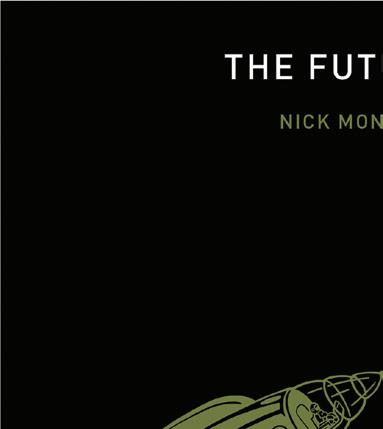
$15.95T/£11.95 paper 978-0-262-53481-9
Machine Translation
Thierry Poibeau $15.95T/£11.95 paper 978-0-262-53421-5


Information and Society

Michael Buckland
$15.95T/£11.95 paper 978-0-262-53338-6
Robots
John Jordan
$15.95T/£11.95 paper 978-0-262-52950-1
Machine Learning Ethem Alpaydin

$15.95T/£11.95 paper 978-0-262-52951-8
The Mind–Body Problem Jonathan Westphal

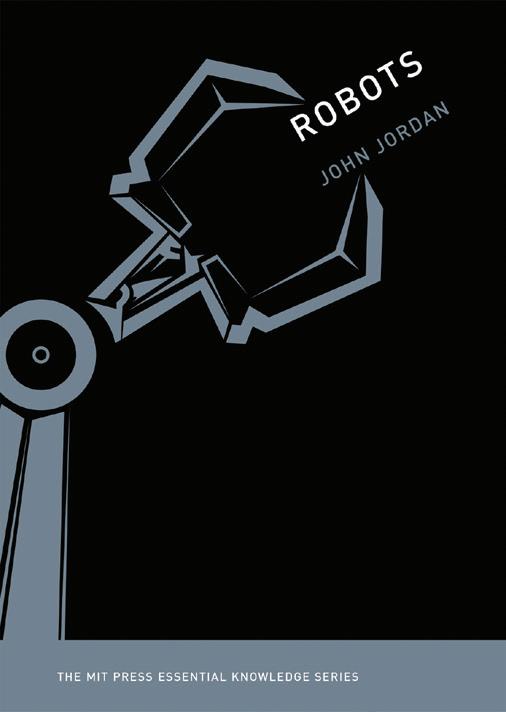

$15.95T/£11.95 paper 978-0-262-52956-3
Neuroplasticity Moheb Costandi $15.95T/£11.95 paper 978-0-262-52933-4

Self-Tracking
Gina Neff and Dawn Nafus

$15.95T/£11.95 paper 978-0-262-52912-9
Cloud Computing Nayan Ruparelia
$15.95T/£11.95 paper 978-0-262-52909-9

TRADE 25 MITPRESS.MIT.EDU | SPRING 2018
THE MIT PRESS ESSENTIAL KNOWLEDGE SERIES
Advice on how companies can succeed in the new digital business environment. March 5 3/8 x 8, 224 pp. 5 illus.
$19.95T/£14.95 paper 978-0-262-53498-7
The Digital Future of Management series
business | technology
How to Go Digital
Practical Wisdom to Help Drive Your Organization’s Digital Transformation

MIT Sloan Management Review
The most important skills a leader needs to succeed in a digital environment are not technical in nature but managerial—strategic vision, forward-looking perspective, change-oriented mindset. A company’s digital transformation does not involve abandoning widget-making for app developing or pursuing “disruption” at the cost of stability. Rather, it is about adopting business processes and practices that position organizations to compete effectively in the digital environment. More important than technology implementation are strategy, talent management, organizational structure, and leadership aligned for the digital world. How to Go Digital offers advice from management experts on how to steer your company into the digital future.
The book will put you on the right strategic path, with articles from MIT Sloan Management Review on developing a digital strategy, reframing growth for a digital world, monetizing data, and generating sustainable value from social media. Talent acquisition and retention are addressed, with articles on HR analytics, data translators, and enabling employees to become brand ambassadors outside of the office. Operational makeovers are discussed in terms of sales, services, new technologies, and innovation.
Contributors
Allan Alter, Stephen J. Andriole, Bart Baesens, Gloria Barczak, Cynthia M. Beath, Alpheus Bingham, Didier Bonnet, Chris Brady, Joseph Byrum, Marina Candi, Manuel Cebrian, Marie-Cécile Cervellon, Simon Chadwick, Sophie De Winne, Mike Forde, Gerald C. Kane, Rahul Kapoor, David Kiron, Thomas Klueter, Mary C. Lacity, Rikard Lindgren, Pamela Lirio, Tucker J. Marion, Lars Mathiassen, Pete Maulik, Paul Michelman, Narendra Mulani, Pierre Nanterme, Doug Palmer, Alex “Sandy” Pentland, Anh Nguyen Phillips, Frank T. Piller, Iyad Rahwan, Deborah L. Roberts, Jeanne W. Ross, Ina M. Sebastian, Luc Sels, James E. Short, Fredrik Svahn, Steve Todd, Leslie P. Willcocks, H. James Wilson, Barbara H. Wixom
Books in the Digital Future of Management series draw from the print and web pages of MIT Sloan Management Review to deliver expert insights and sharply tuned advice on navigating the unprecedented challenges of the digital world. These books are essential reading for executives from the world’s leading source of ideas on how technology is transforming the practice of management.
TRADE 26 SPRING 2018 | MITPRESS.MIT.EDU
business | technology
What the Digital Future Holds
20 Groundbreaking Essays on How Technology Is Reshaping the Practice of Management

MIT Sloan Management Review
Digital technology has profoundly affected the ways that businesses design and produce goods, manage internal communication, and connect with customers. But the next phase of the digital revolution raises a new set of questions about the relationship between technology and the practice of management. Managers in the digital era must consider how big data can inform hiring decisions, whether new communication technologies are empowering workers or unleashing organizational chaos, what role algorithms will play in corporate strategy, and even how to give performance feedback to a robot. This collection of short, pithy essays from MIT Sloan Management Review, written by both practitioners and academic experts, explores technology’s foundational impact on management.
Much of the conversation around these topics centers on the evolving relationship between humans and cognitive technologies, and the essays reflect this—considering, for example, not only how to manage a bot but how cognitive systems will enhance business decision making, how AI delivers value, and the ethics of algorithms.
Contributors
Ajay Agrawal, Robert D. Austin, David H. Autor, Andrew Burgert, Paul R. Daugherty, Thomas H. Davenport, R. Edward Freeman, Joshua S. Gans, Avi Goldfarb, Lynda Gratton, Reid Hoffman, Bala Iyer, Gerald C. Kane, Frieda Klotz, Rita Gunther McGrath, Paul Michelman, Andrew W. Moore, Nicola Morini-Bianzino, Tim O’Reilly, Bidhan L. Parmar, Ginni Rometty, Bernd Schmitt, Alex Tapscott, Don Tapscott, Monideepa Tarafdar, Catherine J. Turco, George Westerman, H. James Wilson, Andrew S. Winston
The relationship between management and digital technology: experts present a new agenda for the practice of management.
March 5 3/8 x 8, 144 pp. 1 illus.
$19.95T/£14.95 paper 978-0-262-53499-4
The Digital Future of Management series
TRADE 27 MITPRESS.MIT.EDU | SPRING 2018
A thirteen-year-old girl wakes up in a future where human emotions are extinct and people rely on personal-assistant robots to navigate daily life.

April 6 x 9, 232 pp.
$19.95T/£14.95 paper 978-0-262-03777-8
science fiction
The Vestigial Heart
A Novel of the Robot Age Carme Torras
Imagine a future in which many human emotions are extinct, and “emotional masseuses” try to help people recover those lost sensations. Individuals rely on personal-assistant robots to navigate daily life. Students are taught not to think but to employ search programs. Companies protect their intellectual property by erasing the memory of their employees. And then imagine what it would feel like to be a sweet, smart thirteen-year-old girl from the twenty-first century who wakes from a cryogenically induced sleep into this strange world. This is the compelling story told by Carme Torras in this prize-winning science fiction novel. We meet Celia, brought back to life when a cure is found for her formerly terminal disease, and Lu, Celia’s adoptive mother, protective but mystified by her new daughter. There is Leo, a bioengineer, who is developing a “creativity prosthesis” to augment humans’ atrophied capacities, and the eccentric robotics mogul Dr. Craft. And there is Silvana, an emotional masseuse who reads old books to research the power of emotion. Silvana sees Celia as a living, breathing example of the emotions and feelings that are now out of reach for most people.
Torras, a prominent roboticist, weaves provocative ethical issues into her story. What kind of robots do we want when robot companions become as common as personal computers are now? Is it the responsibility of researchers to design robots that make the human mind evolve in a certain way? An appendix provides readers with a list of ethics questions raised by the book.
Torras, a leading researcher in robotics and artificial intelligence, is Research Professor at the Institut de Robòtica i Informàtica Industrial (CSICUPC) in Barcelona and editor of IEEE Transactions on Robotics. A member of the Catalan Society for Science Fiction and Fantasy, she is the author of four novels.
Carme
TRADE 28 SPRING 2018 | MITPRESS.MIT.EDU
science fiction
Twelve Tomorrows
edited by Wade Roush
In this book, new and established voices in science fiction come together to offer original stories of the future. Ken Liu writes about a virtual currency that hijacks our empathy; Elizabeth Bear shows us a smart home tricked into kidnapping its owner; Clifford V. Johnson presents, in a graphic novella, the story of a computer scientist seeing a new side of the AIs she has invented; and J. M. Ledgard describes a 28,000-year-old AI who meditates on the nature of loneliness. We encounter metal-melting viruses, vegetable-based heart transplants, search-and-rescue drones, and semi-automated sailing ships. Sometimes hilarious, sometimes frightening, and always relevant, Twelve Tomorrows offers compelling visions of potential futures.
Originally launched in 2011 by MIT Technology Review, the Twelve Tomorrows series explores the future implications of emerging technologies through the lens of fiction. Featuring a diverse collection of authors, characters, and stories rooted in contemporary real-world science, each volume in the series offers conceivable and inclusive stories of the future, celebrating and continuing the genre of “hard” science fiction pioneered by authors such as Isaac Asimov, Arthur C. Clarke, and Robert Heinlein. Twelve Tomorrows is the first volume of the series to be published in partnership with the MIT Press.

Wade Roush is the producer and host of Soonish, an independent podcast about the future. He was acting director of MIT’s Knight Science Journalism program, and has also served as chief correspondent and San Francisco editor for Xconomy, senior editor and San Francisco bureau chief at MIT Technology Review, and Boston bureau reporter for Science. He holds a PhD in the history and social study of science and technology from MIT.
Contributors
Elizabeth Bear, SL Huang, Clifford V. Johnson, J. M. Ledgard, Liu Cixin, Ken Liu, Paul McAuley, Nnedi Okorafor, Malka Older, Sarah Pinsker, Jason Pontin, Mark Pontin, Alastair Reynolds
Twelve visions of the future—by turns hilarious, frightening, and relevant— from new and established voices in science fiction.
June 7 x 10, 248 pp. 20 color illus., 2 b&w illus. $19.95T/£14.95 paper 978-0-262-53542-7
Twelve Tomorrows series
TRADE 29 MITPRESS.MIT.EDU | SPRING 2018
Essays, research, and art projects that formulate a Tidalectic worldview, addressing our most threatened ecosystem: the oceans. March 6 11/16 x 9 7/16, 288 pp. 40 color illus.
$34.95T/£27.95 cloth 978-0-262-03809-6 Copublished with TBA21-Academy, Vienna, Austria
art | environment
Tidalectics
Imagining an Oceanic Worldview through Art and Science

edited by Stefanie Hessler essay by Francesca von Habsburg foreword by Markus Reymann
The oceans cover two-thirds of the planet, shaping human history and culture, providing a home to countless species. Yet we, as mostly landdwelling humans, often fail to grasp the importance of these vast bodies of water. Climate change destabilizes notions of land-based embeddedness, collapses tropes of time and space, and turns our future more oceanic. Tidalectics imagines an oceanic worldview, with essays, research, and artists’ projects that present a different way of engaging with our hydrosphere. Unbound by land-based modes of thinking and living, the essays and research in Tidalectics reflect the rhythmic fluidity of water.
Tidalectics emerges from the Thyssen-Bornesmisza Art Contemporary (TBA21)-Academy, the only Western arts organization entirely dedicated to work on climate change and the oceans. In 2016, TBA21-Academy became the first cultural organization to gain UN observer status at the International Seabed Authority Assembly. The book presents newly commissioned work from a range of disciplines and often-neglected perspectives, alongside classic “anchor texts” by such writers as Rachel Carson. The contributors include an anthropologist from Fiji, a Norwegian scholar who specializes in maritime legal history, the author of the first comparative history of Caribbean and Pacific Island literatures, and a poet from Barbados who coined the term “tidalectics” as a play on “dialectics.” The art projects documented in the book form part of an exhibition curated by the volume’s editor, and include a video of the infinite whites, blues, and grays of Antarctica; a collection of oceanic smells from the Caribbean and Pacific coasts of Costa Rica; and a quartz submersible capsule designed to communicate with cetaceans. Tidalectics provides a unique collection of the strongest voices in oceanic thinking, bridging arts, oceanography, history, law, and environmental studies.
Stefanie Hessler is Curator at TBA21-Academy in Vienna and Art Theory Guest Curator at the Royal Institute of Art, Stockholm.
Contributors include Nabil Ahmed, Tamatoa Bambridge, Ute Meta Bauer, Kamau Brathwaite, Guigone Camus, Rachel Carson, Cynthia Chou, Paul D’Arcy, Elizabeth DeLoughrey, Keller Easterling, Epeli Hau’ofa, Eva Hayward, Stefan Helmreich, Chus Martínez, SaSandor Mulsow, Astrida Neimanis, Kimberley Peters, Elizabeth Povinelli, Markus Reymann, Tora Skodvin, Philip Steinberg, Khal Torabully, Davor Vidas, Francesca von Habsburg, Susanne M. Winterling
Artists surveyed include Atif Akin, Darren Almond, Julian Charrière, Em’kal Eyongakpa, Tue Greenfort, Ariel Guzik, Newell Harry, Alexander Lee, Eduardo Navarro, Sissel Tolaas, Janaina Tschäpe & David Gruber, Jana Winderen, Susanne M. Winterling
TRADE 30 SPRING 2018 | MITPRESS.MIT.EDU
The Adventure
 Giorgio Agamben translated by Lorenzo Chiesa
Giorgio Agamben translated by Lorenzo Chiesa
An ancient legend identifies Demon, Chance, Love, and Necessity as the four gods who preside over the birth of every human being. We must all pay tribute to these deities and should not try to elude or dupe them. To accept them, Giorgio Agamben suggests, is to live one’s life as an adventure—not in the trivial sense of the term, with lightness and disenchantment, but with the understanding that adventure, as a specific way of being, is the most profound experience in our human existence. In this pithy, poetic, and compelling book, Agamben maps a journey from poems of chivalry to philosophy, from Yvain to Hegel, from Beatrice to Heidegger. The four gods of legend are joined at the end by a goddess, the most elusive and mysterious of all: Elpis, Hope. In Greek mythology, Hope remains in Pandora’s box, not because it postpones its fulfillment to an invisible beyond but because somehow it has always been already satisfied. Here, Agamben presents Hope as the ultimate gift of the human adventure on Earth.
Giorgio Agamben is one of the leading figures in Italian philosophy. He is the author of Homo Sacer: Sovereign Power and Bare Life; Remnants of Auschwitz: The Witness and the Archive; Profanations; The Signature of All Things: On Method (the last three published by Zone Books), and other books. Lorenzo Chiesa is Director of the Genoa School of Humanities and the author of Subjectivity and Otherness: A Philosophical Reading of Lacan and The NotTwo: Logic and God in Lacan, both published by the MIT Press.
Agamben charts a journey that ranges from poems of chivalry to philosophy, from Yvain to Hegel, from Beatrice to Heidegger.
March 4 x 6, 104 pp. $12.95T/£10.95 cloth 978-0-262-03759-4
Also available from Zone Books
Remnants of Auschwitz
The Witness and the Archive Giorgio Agamben $21.95T/£17.95 paper 978-1-890951-17-7
Profanations

Giorgio Agamben 18.95T/£14.95 paper 978-1-890951-83-2
The Signature of All Things On Method
Giorgio Agamben $25.95T/£20.95 cloth 978-1-890951-98-6
TRADE 31 MITPRESS.MIT.EDU | SPRING 2018
philosophy
Ancient history, midcentury modernism, Cinemascope, humanism and monumentality, totalitarianism and democracy: transformations in American culture and architecture.
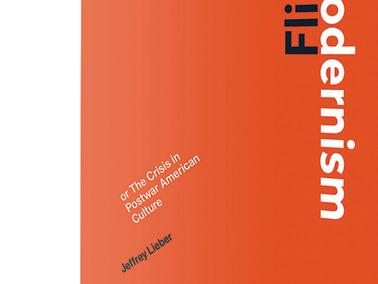

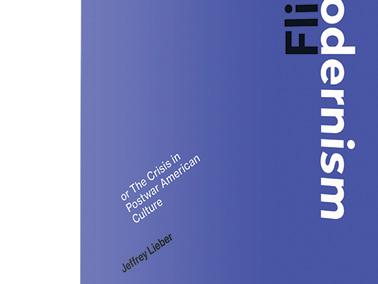

March 6 x 9, 304 pp. 21 color illus., 19 b&w illus.

$34.95T/£27.95 cloth 978-0-262-03749-5


architecture | cultural studies



Flintstone Modernism


or The Crisis in Postwar American Culture
Jeffrey Lieber
In Flintstone Modernism, Jeffrey Lieber investigates transformations in postwar American architecture and culture. He considers sword-and-sandal films of the 1950s and 1960s—including forgotten gems such as Land of the Pharaohs, Helen of Troy, and The Egyptian—and their protean, ideologically charged representations of totalitarianism and democracy. He connects Cinemascope and other widescreen technologies to the architectural “glass curtain wall,” arguing that both represented the all-encompassing eye of American Enterprise. Lieber reminds us that until recently midcentury modern American architecture was reviled by architectural historians but celebrated by design enthusiasts, just as sword-and-sandal epics are alternately hailed as “cult classics” or derided as “camp.”



Lieber’s argument is absorbing, exuberant, and comprehensive. Following Hannah Arendt, who looked for analogies in the classical past in order to understand midcentury’s cultural crisis, Lieber terms the postwar reckoning of ancient civilizations and modern ideals “Flintstone modernism.” He examines, among other things, Sigfried Giedion’s call for a “new monumentality” and its relevance to “new humanism” and Henry Luce’s “Western culture project.” In new assessments of the major architects of the period, Lieber uncovers the cultural and political fantasies that animated and impinged on their work, offering surprising insights into Gordon Bunshaft’s commonsense classicism; Eero Saarinen’s architectural narratives of ersatz empire and Marcel Breuer’s mania for Egyptian monoliths; and Edward Durell Stone’s romantic “flights of fancy” and Philip Johnson’s “wicked” brand of cynical cultural and sociopolitical critique.
Deftly moving among architecture, film, philosophy, and politics, Lieber illuminates the artifice that resulted from the conjunction of high style and mass-cultural values in postwar America.
Jeffrey Lieber is a historian of art and architecture. He has taught at Harvard University, the New School, and the University of California, Santa Cruz.
TRADE 32 SPRING 2018 | MITPRESS.MIT.EDU
Drawing on Architecture
The Object of Lines, 1970–1990
Jordan Kauffman
Prior to the 1970s, buildings were commonly understood to be the goal of architectural practice; architectural drawings were seen simply as a means to an end. But, just as the boundaries of architecture itself were shifting at the end of the twentieth century, the perception of architectural drawings was also shifting; they began to be seen as autonomous objects outside the process of building. In Drawing on Architecture, Jordan Kauffman offers an account of how architectural drawings—promoted by a network of galleries and collectors, exhibitions and events— emerged as aesthetic objects and ultimately attained status as important cultural and historical artifacts, and how this was both emblematic of changes in architecture and a catalyst for these changes.
Kauffman traces moments of critical importance to the evolution of the perception of architectural drawings, beginning with exhibitions that featured architectural drawings displayed in ways that did not elucidate buildings but treated them as meaningful objects in their own right. When architectural drawings were seen as having intrinsic value, they became collectible, and Kauffman chronicles early collectors, galleries, and sales. He discusses three key exhibitions at the Leo Castelli Gallery in New York; other galleries around the world that specialized in architectural drawings; the founding of architecture museums that understood and collected drawings as important cultural and historical artifacts; and the effect of the new significance of architectural drawings on architecture and architectural history.
Drawing on interviews with more than forty people directly involved with the events described and on extensive archival research, Kauffman shows how architectural drawings became the driving force in architectural debate in an era of change.

Jordan Kauffman is a Professor of Architectural History and a Research Affiliate at MIT. He has taught at MIT, Tufts University, Brandeis University, and the Architectural Association, London.
How architectural drawings emerged as aesthetic objects, promoted by a network of galleries, collectors, and institutions, and how this changed the understanding of architecture.
April 7 x 9, 336 pp. 57 color illus., 44 b&w illus.
$34.95T/£27.95 cloth 978-0-262-03737-2
TRADE 33 MITPRESS.MIT.EDU | SPRING 2018
architecture
On Accident
Episodes in Architecture and Landscape Edward Eigen foreword by Reinhold Martin
This collection by “architectural history’s most beguiling essayist” (as Reinhold Martin calls the author in the book’s foreword) illuminates the unfamiliar, the arcane, the obscure—phenomena largely missing from architectural and landscape history. These essays by Edward Eigen do not walk in a straight line, but roam across uncertain territory, discovering sunken forests, unclassifiable islands, inflammable skies, unvisited shores, plagiarized tabernacles. Taken together, these texts offer a group portrait of how certain things fall apart.

We read about the statistical investigation of lightning strikes in France by the author-astronomer Camille Flammarion, which leads Eigen to reflect also on Foucault, Hamlet, and the role of the anecdote in architectural history. We learn about, among other things, Olmsted’s role in transforming landscape gardening into landscape architecture; the connections among hedging, hedge funds, the High Line, and GPS bandwidth; timber-frame roofs and (spider) web-based learning; the archives of the Houses of Parliament through flood and fire; and what the 1898 disappearance and reappearance of the Trenton, New Jersey architect William W. Slack might tell us about the conflict between “the migratory impulse” and “love of home.”
Eigen compares his essays to the “gathering up of seeds that fell by the wayside.” The seedlings that result create in the reader’s imagination a dazzling display of the particular, the contingent, the incidental, and the singular, all in search of a narrative.
5
$26.95T/£21.95
978-0-262-53484-0 Writing Architecture series TRADE 34 SPRING 2018 | MITPRESS.MIT.EDU architecture
Edward Eigen is Associate Professor of History of Architecture and Landscape Architecture at the Harvard Graduate School of Design and Associate Editor of Studies in the History of Gardens and Designed Landscapes. His writing has appeared in Cabinet, Pamphlet, Grey Room, and other publications.
Engaging essays that roam across uncertain territory, in search of sunken forests, unclassifiable islands, inflammable skies, plagiarized tabernacles, and other phenomena missing from architectural history. March
3/8 x 8, 408 pp. 65 illus.
paper
art | curatorial studies
Deaccessioning and Its Discontents
A Critical History
Martin Gammon
Museums often stir controversy when they deaccession works—formally remove objects from permanent collections—with some critics accusing them of betraying civic virtue and the public trust. In fact, Martin Gammon argues in Deaccessioning and Its Discontents, deaccession has been an essential component of the museum experiment for centuries. Gammon offers the first critical history of deaccessioning by museums from the seventeenth to the twenty-first century, and exposes the hyperbolic extremes of “deaccession denial”—the assumption that deaccession is always wrong—and “deaccession apology”—when museums attempt to blame the object for its removal—as symptoms of the same misunderstanding of the role of deaccessions in proper museum practice. He chronicles a series of deaccession events in Britain and the United States that range from the disastrous to the beneficial, and proposes a typology of principles to guide future deaccessions.

Gammon describes the liquidation of the British Royal Collections after Charles I’s execution—when masterworks were used as barter to pay the king’s unpaid bills—as establishing a precedent for future deaccessions. He recounts, among other episodes, U.S. Civil War veterans who tried to reclaim their severed limbs from museum displays; the 1972 “Hoving affair,” when the Metropolitan Museum of Art sold a number of works to pay for a Velázquez portrait; and Brandeis University’s decision (later reversed) to close its Rose Art Museum and sell its entire collection of contemporary art. An epilogue provides the first extensive listing of notable deaccessions since the seventeenth century. Gammon ultimately argues that vibrant museums must evolve, embracing change, loss, and reinvention.
Martin Gammon, formerly Managing Director of Museum Services in North America for Bonhams Auctioneers, is a founder of the Pergamon Art Group, which advises museums and private collections on bequests and collection management. He appears regularly as an appraiser on the PBS series Antiques Roadshow.
The first history of the deaccession of objects from museum collections that defends deaccession as an essential component of museum practice.
May 7 x 10, 480 pp. 56 color illus., 8 b&w illus. $44.95T/£37.95 cloth 978-0-262-03758-7
TRADE 35 MITPRESS.MIT.EDU | SPRING 2018
Both institutional critique and reference work, documenting the intersection of politics (in the form of political donations) and art museums. April 8 1/2 x 11, 1,000 pp. 240 graphs $125.00T/£104.95 paper 978-0-262-53545-8
Published by Westreich Wagner Publications with the CCA Wattis Institute for Contemporary Arts and the MIT Press
2016
in Museums, Money, and Politics
Andrea Fraser
foreword by Jamie Stevens
2016 in Museums, Money, and Politics examines the intersection of electoral politics and private-nonprofit art institutions in the United States at a pivotal historical moment. In a massive volume that is both institutional critique and reference work, the artist Andrea Fraser documents the reported political contributions made by trustees of more than 100 art museums, representing every state in the nation, in the 2016 election cycle. With campaigning that featured attacks on vulnerable populations, the vilification of the media and “cultural elites,” and calls to curtail civil rights and liberties, the 2016 election cycle transformed national politics. It was also the most expensive election in American history, with over $6.4 billion raised for presidential and congressional races combined. More than half of this money came from just a few hundred people— many of whom also support cultural institutions and serve on their boards.
2016 is organized like a telephone book. Contribution data is laid out in dense, color-coded tables alphabetically by name of donor. With this data filling approximately 1,000 pages, the book offers a material representation of the interface between cultural philanthropy and campaign finance in America. It also provides an unparalleled resource for exploring the politics of the museum world. 2016 includes a foreword by Jamie Stevens, the former curator and head of programs at CCA Wattis Institute for Contemporary Arts in San Francisco, who traces the book’s development; an introduction by Andrea Fraser elaborating on the links connecting cultural philanthropy, campaign finance, and plutocracy; an appendix on each museum represented; and an appendix on post-election contributions. A final appendix includes template letters drafted by Fraser addressed to museum trustees, in which she argues that supporting the arts must involve more than giving donations to museums; it must also include defending the values, social structures, and political institutions of an open, tolerant, just, and equitable society.
Andrea Fraser is an artist and Professor of Art at the University of California, Los Angeles. She is the author of Museum Highlights: The Writings of Andrea Fraser, published by the MIT Press.

TRADE 36 SPRING 2018 | MITPRESS.MIT.EDU art
art | film studies
Toward Fewer Images
The Work of Alexander Kluge Philipp
Ekardt
Alexander Kluge (born 1932) is a German filmmaker, author, television producer, theorist, and digital entrepreneur. Since 1960, he has made fourteen feature films and twenty short films and has written more than thirty books—including three with Marxist philosopher Oskar Negt. His television production company has released more than 3,000 features, in which Kluge converses with real or fictional experts or creates thematic montages. He also maintains a website on which he reassembles segments from his film and television work. To call Kluge “prolific” would be an understatement. This is the first English-language monograph devoted to the full scope of Kluge’s work, from his appearance on the cultural scene in the 1960s to his contributions to New German Cinema in the 1970s and early 1980s to his recent collaborations with such artists as Gerhard Richter.
In Toward Fewer Images, Philipp Ekardt offers both close analyses of Kluge’s individual works and sustained investigations of his overarching (and perpetual) production. Ekardt discusses Kluge’s image theory and practice as developed across different media, and considers how, in relation to this theory, Kluge returns to, varies, expands, and modifies the practice of montage, including its recent manifestations in digital media —noting Kluge’s counterintuitive claim that creating montages results in fewer images. Kluge’s production, Ekardt argues, allows us to imagine a model of authorship and artistic production that does not rely on an accumulation of individual works over time but rather on a permanent activity of (temporalized) reworking and redifferentiation.
Philipp Ekardt is affiliated with the University of London’s School of Advanced Study/The Warburg Institute. An authority on Walter Benjamin and Alexander Kluge, he is a former Editor-in Chief of Texte zur Kunst, his work has appeared in such journals as October and Poetica and in exhibition catalogs for Tate St. Ives, Mumok Vienna, Museum Ludwig Cologne, and Museum für Moderne Kunst Frankfurt.
The first English-language monograph devoted to the full oeuvre of Alexander Kluge, the prolific German filmmaker, television producer, digital entrepreneur, author, thinker, and public intellectual.

June 7 x 9, 400 pp. 212 photographs $45.00T/£37.95 cloth 978-0-262-03797-6
An October Book
TRADE 37 MITPRESS.MIT.EDU | SPRING 2018
An exploration of the interaction of aesthetics and politics in Bertolt Brecht’s “photoepigrams.”
March 7 x 9, 280 pp. 49 illus.
$34.95T/£27.95 cloth 978-0-262-03787-7
RIC Books
Copublished with Ryerson Image Centre, Toronto
The Eye of History
When Images Take Positions
Georges Didi-Huberman translated by Shane
 Lillis
Lillis
From 1938 to 1955, Bertolt Brecht created montages of images and text, filling his working journal (Arbeitsjournal) and his idiosyncratic atlas of images, War Primer, with war photographs clipped from magazines and adding his own epigrammatic commentary. In this book, Georges Didi-Huberman explores the interaction of politics and aesthetics in these creations, explaining how they became the means for Brecht, a wandering poet in exile, to “take a position” about the Nazi war in Europe. Illustrated with pages from the Arbeitsjournal and War Primer and contextual images including Raoul Hausmann’s poem-posters and Walter Benjamin’s drawings, The Eye of History offers a new view of important but little-known works by Brecht. Didi-Huberman shows that Brecht took positions without taking sides; he used these montages to challenge the viewpoints of the press and propose other readings, to offer a stylistic and political response to the inescapable visibility of historical events enabled by the photographic medium. Brecht’s montages disrupt and scrutinize this visibility by juxtaposing representations of war found in magazines with his own epigrams—a “documentary lyricism” that dismounts and remounts modern history. The montages created meaningful disorder, exposing the truth by disorganizing—a process Didi-Huberman calls a “dialectic of the monteur.” These works are examples of “the eyes of history”—when seeing may simultaneously deepen and critique historical knowledge. The montages, Didi-Huberman argues, are Brecht’s most Benjaminian works.
Georges Didi-Huberman, a philosopher and art historian based in Paris, teaches at the École des Hautes Études en Sciences Sociales. Recipient of the 2015 Adorno Prize, he is the author of more than forty books, including Invention of Hysteria: Charcot and the Photographic Iconography of the Salpêtrière and Bark, both published by the MIT Press, and Images in Spite of All and The Surviving Image
TRADE 38 SPRING 2018 | MITPRESS.MIT.EDU art
| philosophy
The Dash—The Other Side of Absolute Knowing
 Rebecca Comay and Frank Ruda
Rebecca Comay and Frank Ruda
This book sets out from a counterintuitive premise: the “mystical shell” of Hegel’s system proves to be its most “rational kernel.” Hegel’s radicalism is located precisely at the point where his thought seems to regress most. Most current readings try to update Hegel’s thought by pruning back his grandiose claims to “absolute knowing.” Comay and Ruda invert this deflationary gesture by inflating what seems to be most trivial: the absolute is grasped only in the minutiae of its most mundane appearances. Reading Hegel without presupposition, without eliminating anything in advance or making any decision about what is essential and what is inessential, what is living and what is dead, they explore his presentation of the absolute to the letter.
The Dash is organized around a pair of seemingly innocuous details. Hegel punctuates strangely. He ends the Phenomenology of Spirit with a dash, and he begins the Science of Logic with a dash. This distinctive punctuation reveals an ambiguity at the heart of absolute knowing. The dash combines hesitation and acceleration. Its orientation is simultaneously retrospective and prospective. It both holds back and propels. It severs and connects. It demurs and insists. It interrupts and prolongs. It generates nonsequiturs and produces explanations. It leads in all directions: continuation, deviation, meaningless termination. This challenges every cliché about the Hegelian dialectic as a machine of uninterrupted teleological progress. The dialectical movement is, rather, structured by intermittency, interruption, hesitation, blockage, abruption, and random, unpredictable change—a rhythm that displays all the vicissitudes of the Freudian drive.
An argument that what is usually dismissed as the “mystical shell” of Hegel’s thought—the concept of absolute knowledge—is actually its most “rational kernel.”
May 6 x 9, 176 pp. $23.95T/£19.95 paper 978-0-262-53535-9
Short Circuits series, edited by Mladen Dolar, Alenka Zupan č i č , and Slavoj Žižek
Rebecca Comay is Professor of Philosophy and Comparative Literature at the University of Toronto. Frank Ruda is Senior Lecturer in Philosophy at the University of Dundee.
TRADE 39 MITPRESS.MIT.EDU | SPRING 2018
philosophy
One of today’s most widely read philosophers considers the shift in violence from visible to invisible, from negativity to excess of positivity.
April 4 1/2 x 7, 240 pp.
$19.95T/£14.95 paper 978-0-262-53495-6
Untimely Meditations series
Also available in this series
The Agony of Eros
Byung-Chul Han $12.95T/£9.50 paper 978-0-262-53337-9
In the Swarm

Digital Prospects
Byung-Chul Han $13.95T/£9.50 paper 978-0-262-53336-2
Shanzhai Deconstruction in Chinese

Byung-Chul Han $14.95T/£12.95 paper 978-0-262-53436-9
philosophy
Topology of Violence
Byung-Chul Han translated by Amanda DeMarco


Some things never disappear—violence, for example. Violence is ubiquitous and incessant but protean, varying its outward form according to the social constellation at hand. In Topology of Violence, the philosopher
Byung-Chul Han considers the shift in violence from the visible to the invisible, from the frontal to the viral to the self-inflicted, from brute force to mediated force, from the real to the virtual. Violence, Han tells us, has gone from the negative—explosive, massive, and martial—to the positive, wielded without enmity or domination. This, he says, creates the false impression that violence has disappeared. Anonymized, desubjectified, systemic, violence conceals itself because it has become one with society.
Han first investigates the macro-physical manifestations of violence, which take the form of negativity—developing from the tension between self and other, interior and exterior, friend and enemy. These manifestations include the archaic violence of sacrifice and blood, the mythical violence of jealous and vengeful gods, the deadly violence of the sovereign, the merciless violence of torture, the bloodless violence of the gas chamber, the viral violence of terrorism, and the verbal violence of hurtful language. He then examines the violence of positivity—the expression of an excess of positivity—which manifests itself as over-achievement, over-production, over-communication, hyper-attention, and hyperactivity. The violence of positivity, Han warns, could be even more disastrous than that of negativity. Infection, invasion, and infiltration have given way to infarction.
Byung-Chul Han, born in Seoul, is Professor of Philosophy and Cultural Studies at the Universität der Künste Berlin (UdK). One of the most widely read philosophers in Europe, he is the author of more than twenty books, including three previous volumes in the MIT Press Untimely Meditations series, In the Swarm: Digital Prospects, The Agony of Eros, and Shanzai: Deconstruction in Chinese
TRADE 40 SPRING 2018 | MITPRESS.MIT.EDU
The Radical Fool of Capitalism
On Jeremy Bentham, the Panopticon, and the Auto-Icon Christian Welzbacher translated by Elisabeth Lauffer
Jeremy Bentham (1748–1832) is best remembered today as the founder of utilitarianism (a philosophy infamously abused by the Victorians) and the conceiver of the Panopticon, the circular prison house in which all prisoners could be seen by an unseen observer—later seized upon by Michel Foucault as the apotheosis of the neoliberal control society. In this volume in the Untimely Meditation series, Christian Welzbacher offers a new interpretation of Bentham, arguing that his “radical foolery” (paraphrasing Goethe’s characterization of Bentham) actually embodied a social ethics that was new for its time and demands proper historical contextualization rather than retroactive analysis from the vantage point of late capitalism. Welzbacher provides just such an analysis, offering an account of the two great utilitarian projects that occupied Bentham all his life: the Panopticon and the Auto-Icon.
Welzbacher rescues the Panopticon from the misapprehensions of Foucault, Orwell, and Lacan, arguing that Bentham saw the Panopticon as a pedagogical instrument incorporating the tenets of reason; construction and function, plan and influence, architecture and politics are brought into alignment. Bentham extolled the discovery in words that could easily be ascribed to Le Corbusier, Bruno Taut, or any other modernist architect. The Auto-Icon expressed Bentham’s theories that the dead should benefit later generations; these theories were effectively sealed when Bentham decided to have his body preserved and put on display. (It can be seen today in a cabinet at University College London.) He also donated his inner organs to science—a practice outlawed at the time—and posthumously stage-managed his own ceremonial autopsy.
Welzbacher reveals a Bentham who raised questions that feel familiar and current, invoking topoi that would come to define the modern era and that reverberate to this day.
Christian Welzbacher is a German art historian, journalist, and translator.

A fresh interpretation of Jeremy Bentham, finding that his “radical foolery” embodied a social ethics that was revolutionary for its time.
April 4 1/2 x 7, 200 pp. 73 illus.
$19.95T/£14.95 paper 978-0-262-53549-6
Untimely Meditations series
Also available in this series
The Terror of Evidence Marcus Steinweg

$17.95T/£13.95 paper 978-0-262-53343-0
On Hitler’s Mein Kampf
The Poetics of National Socialism Albrecht Koschorke $13.95T/£9.50 paper 978-0-262-53333-1
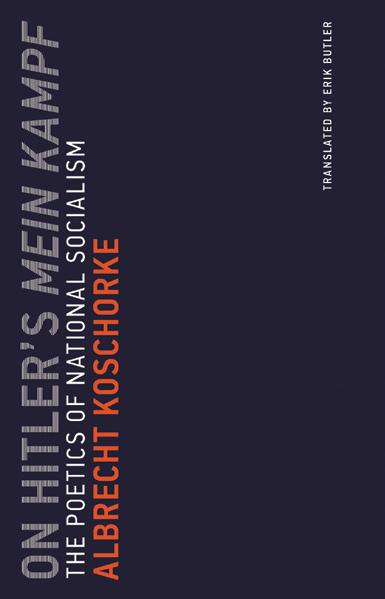
TRADE 41 MITPRESS.MIT.EDU | SPRING 2018
philosophy
The first anthology to investigate what contemporary notions of practice mean for art, tracing their development and speculating on where this leads.

March 5 3/4 x 8 1/4, 240 pp.
$24.95T paper 978-0-262-53539-7
Documents of Contemporary Art series
Copublished with Whitechapel Gallery, London Not for sale in the UK and Europe
Also available in this series
Destruction edited by Sven Spieker
$24.95T paper 978-0-262-53434-5
Work edited by Friederike Sigler $24.95T paper 978-0-262-53433-8
Practice
edited by Marcus Boon and Gabriel Levine
“Practice” is one of the key words of contemporary art, used in contexts ranging from artists’ descriptions of their practice to curatorial practice, from social practice to practice-based research. This is the first anthology to investigate what contemporary notions of practice mean for art, tracing their development and speculating on where this leads.


Reframing of the question of practice offers new ways of reading the history of art and of evaluating particular forms of practice-based art. Once used to denote “doing,” as distinct from thinking and making, today the term can convey associations of political action (praxis), professional activity, discipline, or rehearsal, and signal a shift away from the self-enclosed artwork or medium to open-ended actions, series, processes, and projects. Although the turn to practice might promise freedom from finality or eventfulness, it also reflects the neoliberal pressures to train oneself, to perform, and to rehearse a marketable set of skills. This book offers an indispensible guide to the art history and theoretical framework of art-as-practice, clarifying the complex issues at stake in thinking about and enacting practice.
Marcus Boon is Professor of English at York University, Toronto. His books include In Praise of Copying. Gabriel Levine is a researcher, musician, and interdisciplinary artist whose writing has been published in TOPIA, PUBLIC, and the Journal of Curatorial Studies
Artists surveyed include Arakawa, Rebecca Belmore, AA Bronson, Judy Chicago, Lygia Clark, Andrea Fraser, Madeline Gins, Tehching Hsieh, Mary Kelly, Henri Michaux, Linda M. Montano, Pauline Oliveros, Yoko Ono, Adrian Piper, Raivo Puusemp, Rammellzee, Gerhard Richter, Miriam Schapiro, Carolee Schneemann, Gregory Sholette, Aliza Shvarts, Situationist International, Jonas Staal, Stelarc, Fiona Tan, Min Tanaka, Nadezhda Tolokonnikova, Cecilia Vicuña
Writers include Kathy Acker, Giorgio Agamben, Louis Althusser, Hannah Arendt, Alain Badiou, Lauren Berlant, Gregg Bordowitz, Pierre Bourdieu, Julia Bryan-Wilson, Judith Butler, Jennifer Doyle, Okwui Enwezor, Saidiya V. Hartman, Maulana Karenga, Julia Kristeva, Saba Mahmood, Viktor Misiano, Fred Moten, Paul B. Preciado, Lane Relyea, Suely Rolnik, Peter Sloterdijk, Isabelle Stengers, Winnie Won Yin Wong
42 SPRING 2018 | MITPRESS.MIT.EDU art TRADE
Glenn Ligon

Untitled (I Am a Man)

Gregg Bordowitz
The iconic work Untitled (I Am a Man) (1988) by the influential contemporary American artist Glenn Ligon is a quotation, an appropriated text turned into an artifact. The National Gallery of Art in Washington presents the work as a “representation—a signifier—of the actual signs carried by 1,300 striking African American sanitation workers in Memphis, made famous by Ernest Withers’ 1968 photographs.” In this illustrated study of the work, Gregg Bordowitz takes the National Gallery’s presentation as his starting point, considering the museum’s juxtaposition of Untitled (I Am a Man) and the ca. 1935 sculpture, Schoolteacher, by William Edmondson, and the relation of the two terms, “markers” and “signs.”
After closely examining the canvas itself, its textures, brushwork, and structure, Bordowitz presents a theoretical framework that draws on the work of American philosopher Charles Sanders Peirce and his theory of Firstness, Secondness, and Thirdness. He makes a case for Thirdness as a function, operation, or law of meaning-making, not limited by the gender, sexuality, age, ethnicity, race, class, or personal history of the viewer. Bordowitz goes on to examine Ligon’s work in terms of the representation of self, race, and gender, focusing on three series: Profile Series (1990–91), Narratives, and Runaways (both 1993). He cites such historical figures as Sojourner Truth and her famous 1851 speech, “Ain’t I a Woman?” as well as references ranging from Bo Diddley’s 1955 song, “I’m a Man” to the cultural theories of Stuart Hall.
Gregg Bordowitz is an artist, writer, and Director of the Low Residency MFA Program at the School of the Art Institute of Chicago. Recipient of the 2006 Frank Jewitt Mather Award from the College Art Association, he is the author of The AIDS Crisis Is Ridiculous and Other Writings, 1986–2003 (MIT Press) and General Idea: Imagevirus (Afterall Books/MIT Press).
An illustrated examination of Glenn Ligon’s iconic Untitled (I Am a Man) (1988)— a quotation, an appropriated text turned into an artifact.
March 6 x 8 1/2, 112 pp. 24 color illus.
$19.95T/£14.95 paper 978-1-84638-192-8
One Work series Distributed for Afterall Books, London
Also in this series
David Hammons Bliz-aard Ball Sale

Elena Filipovic
$19.95T/£14.95 paper 978-1-84638-186-7
Sigmar Polke Girlfriends
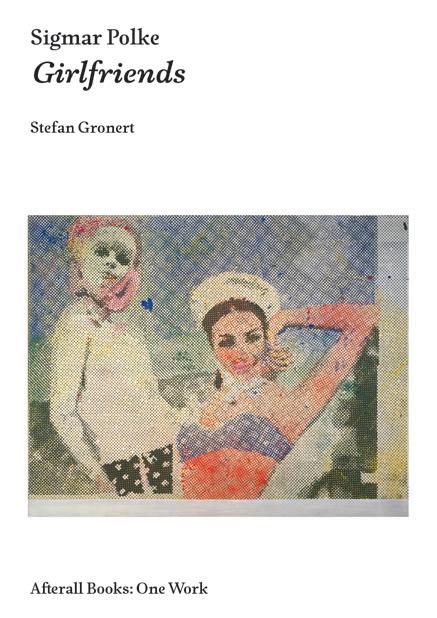
Stefan Gronert
$19.95T/£14.95 paper 978-1-84638-182-9
43 MITPRESS.MIT.EDU | SPRING 2018 art DISTRIBUTED BY THE MIT PRESS
The extraordinary shift in conduct and orientation —among companies, governments, and individuals—generated by financialization.
April 6 x 8, 192 pp.
$25.95T/£20.95 cloth 978-1-942130-12-3
Near Futures series Distributed for Zone Books

Also in this series
Undoing the Demos

Neoliberalism’s Stealth Revolution
Wendy Brown
$18.95T/£14.95 paper 978-1-93-540854-3
Family Values

Between Neoliberalism and the New Social Conservatism
Melinda Cooper
$29.95T/£24.95 cloth 978-1-935408-84-0
political philosophy
Rated Agency
Investee Politics in a Speculative Age
Michel Feher
translated
by Gregory Elliott
The hegemony of finance compels a new orientation for everyone and everything: companies care more about the moods of their shareholders than about longstanding commercial success; governments subordinate citizen welfare to appeasing creditors; and individuals are concerned less with immediate income from labor than with appreciation of their capital goods, skills, connections, and reputations. In this book, in clear and compelling prose, Michel Feher explains the extraordinary shift in conduct and orientation generated by financialization.
That firms, states, and people depend more on their ratings than on the product of their activities also changes how capitalism is resisted. For activists, the focus of grievances shifts from the extraction of profit to the conditions under which financial institutions allocate credit. While the exploitation of employees by their employers has hardly been curbed, the power of investors to select investees—to decide who and what is deemed creditworthy—has become a new site of social struggle. Above all, Feher articulates the new political resistances and aspirations that investees draw from their rated agency.
Michel Feher, a Belgian philosopher, is the author of Powerless by Design: The Age of the International Community and the editor of Nongovernmental Politics and Europe at a Crossroads, among other titles. Founder of Cette France-là, a monitoring group on French immigration policy, Feher is also a founding editor of Zone Books.
Portfolio Society On the Capitalist Mode of Prediction
Ivan Ascher
$25.95T/£20.95 cloth 978-1-935408-74-1
44 SPRING 2018 | MITPRESS.MIT.EDU
DISTRIBUTED BY THE MIT PRESS ZONE BOOKS
Centerbook
The Center for Advanced Visual Studies and the Evolution of Art-Science-Technology at MIT
Elizabeth Goldring and Ellen Sebring foreword by John Durant afterword by Gediminas Urbonas
In 1967, in a time of student unrest, the Massachusetts Institute of Technology did the unexpected: it established the first academic center for research and collaboration in art, science, and technology. The Center for Advanced Visual Studies (CAVS) brought artists to the MIT campus with radical expressions of a rapidly evolving technological era.
The brainchild of founding director György Kepes, CAVS sought to repair the distance between practitioners of art and engineering within the halls of MIT. “The scientist may be an extra brain to the artist, and the engineer may be an extra arm to the artist, whereas the artist can be an extra eye to the scientist and engineer,” said longtime director Otto Piene in the Leacock/Rubin film on Centerbeam. As a breeder of new art forms and future-oriented artistic education, CAVS became a pioneering model for the art, technology, and media labs that proliferated worldwide.
This first comprehensive history of CAVS presents an inside view, told through personal accounts, exhibit documentation, and groundbreaking artwork. The book chronicles, in vivid visual narrative and testimony by those who were there, the birth and flowering of a unique research node dedicated to multiple interactions of art, science, technology, and environment.
Includes commentaries and reflections from Joan Brigham, Keiko Prince, and Peter Weibel.
Elizabeth Goldring, a poet and media artist, is a former CAVS Fellow and director of the CAVS Vision Group. Also at CAVS (MIT’s Center for Advanced Visual Studies), Goldring was Exhibits and Projects Director, Senior Fellow, Acting Director, and Lecturer in MIT’s Architecture Department. Ellen Sebring is a media artist and theorist. Currently a postdoctoral fellow at Duke University, she was a Research Fellow at CAVS and, from 2002 to 2012, was Creative Director of MIT’s Visualizing Cultures project.
Artists surveyed include György Kepes, Otto Piene, Nam June Paik, Charlotte Moorman, Stan VanDerBeek, Harriet Casdin-Silver, Lowry Burgess, Joe Davis.
The first comprehensive history of MIT’s Center for Advanced Visual Studies (CAVS), told through personal accounts and groundbreaking artwork. May 9 x 11, 350 pp. 300 color illus., 50 b&w illus. $45.00S/£37.95 cloth 978-0-9981170-5-8
Distributed for SA + P Press
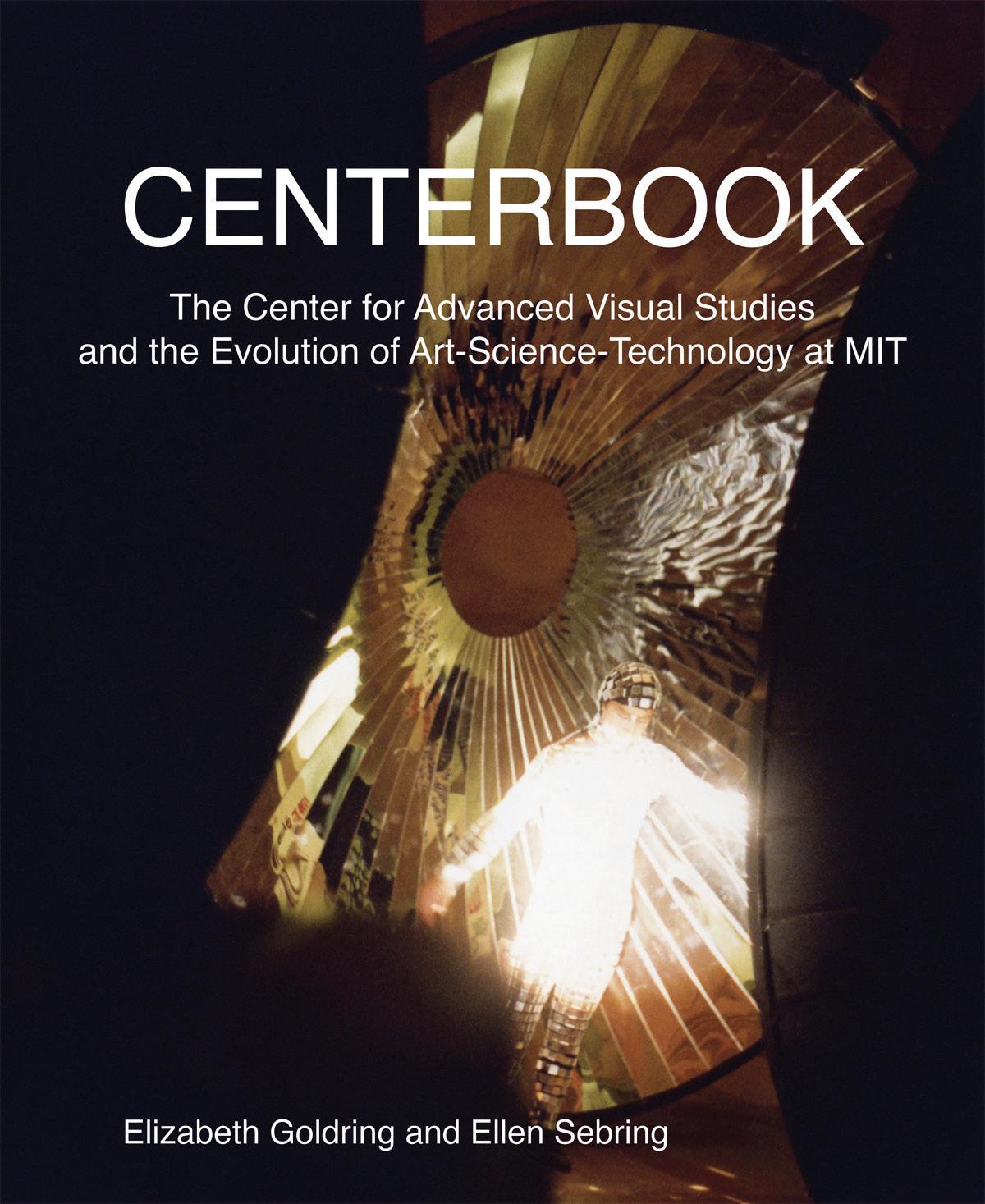
45 MITPRESS.MIT.EDU | SPRING 2018 art | architecture SA + P PRESS DISTRIBUTED BY THE MIT PRESS
An examination of the reactionary, individualist, cynical, and belligerent shift in global politics to the right, implemented both by the right and the establishment left.
March
4 1/2 x 7, 176 pp.
$14.95T/£12.95 paper 978-1-63590-016-3
Intervention series Distributed for Semiotext(e)


Also available from Semiotext(e)
Returning to Reims
Didier Eribon
$17.95T/£14.95 paper 978-1-58435-123-8
Governing by Debt Maurizio Lazzarato $14.95T/£12.95 paper 978-1-58435-163-4

political theory | cultural studies
How the World Swung to the Right

Fifty Years of Counterrevolutions
François
Cusset translated by Noura Wedell
Systemic, euphemized, insidious and structural violence has increased. It is now objectively measurable by the gulf in revenues, by subjective malaise, or by the menace of ecological apocalypse, and also by their constant exacerbation. —from How the World Swung to the Right
Despite a few zones of active resistance—the alter-globalization movement, the Chiapas uprisings, the Arab springs, and the recent resistance to racialized police brutality and environmental and genocidal warfare in the United States—the last half-century has been witness to an undeniable global shift to the right. How the World Swung to the Right provides a comprehensive overview of this reactionary, individualist, cynical, and belligerent shift, which often has been cloaked in the guise of entertainment and good intentions. The counterrevolutions began with a first phase of deregulation and ideological counter-attacks, and the fall of the so-called “real” communisms. The 1990s inaugurated a global biopolitical turn and the financialization of the economy; the 2000s hammered in neoliberal gains through the alliance of ultraliberalism with neoconservatism. These policies were implemented, surprisingly, not only by the right but often by the establishment left. Cusset argues that in the face of this betrayal, conflict is the one thing we can still salvage from the notion of the “left.” What we need today, he contends, are new sites of conflict that multiply the causes of struggle and the sites of mobilization, linking socioeconomic struggle with questions of identity and the urgency of ecology.
François Cusset is Professor of American Studies at the University of ParisOuest Nanterre, a writer and intellectual historian. A specialist in contemporary intellectual and political history, he is the author of French Theory: How Foucault, Derrida, Deleuze, & Co Transformed the Intellectual Life of the United States and The Inverted Gaze: Queering the French Literary Classics in America
46 SPRING 2018 | MITPRESS.MIT.EDU
DISTRIBUTED BY THE MIT PRESS
Gore Capitalism
Sayak Valencia translated by John Pluecker
“Death
—from Gore Capitalism
Written by the Tijuana activist intellectual Sayak Valencia, Gore Capitalism is a crucial essay that posits a decolonial, feminist philosophical approach to the outbreak of violence in Mexico and, more broadly, across the global regions of the Third World. Valencia argues that violence itself has become a product within hyper-consumerist neoliberal capitalism, and that tortured and mutilated bodies have become commodities to be traded and utilized for profit in an age of impunity and governmental austerity.

In a lucid and transgressive voice, Valencia unravels the workings of the politics of death in the context of contemporary networks of hyperconsumption, the ups and downs of capital markets, drug trafficking, narcopower, and the impunity of the neoliberal state. She looks at the global rise of authoritarian governments, the erosion of civil society, the increasing violence against women, the deterioration of human rights, and the transformation of certain cities and regions into depopulated, ghostly settings for war. She offers a trenchant critique of masculinity and gender constructions in Mexico, linking their misogynist force to the booming trade in violence.
This book is essential reading for anyone seeking to analyze the new landscapes of war. It provides novel categories that allow us to deconstruct what is happening, while proposing vital epistemological tools developed in the convulsive Third World border space of Tijuana.
Sayak Valencia is a transfeminist philosopher, essayist, and performance artist, with a doctorate from the Universidad Complutense de Madrid. She is a Professor and Researcher at the Department of Cultural Studies at El Colegio de la Frontera Norte.
An analysis of contemporary violence as the new commodity of today’s hyper-consumerist stage of capitalism.
June 4 1/2 x 7, 352 pp. $16.95T/£14.95 paper 978-1-63590-012-5
Intervention series Distributed for Semiotext(e)

Also available from Semiotext(e)
The Femicide Machine

Sergio González Rodriguez $12.95T/£10.95 paper 978-1-58435-110-8
The Iguala 43
Sergio González Rodriguez $13.95T/£11.95 paper 978-1-58435-197-9

has become the most profitable business in existence.”
47 MITPRESS.MIT.EDU | SPRING 2018
DISTRIBUTED BY THE MIT PRESS
political theory | cultural studies
Audio journals that document Wojnarowicz’s turbulent attempts to understand his anxieties and passions, and tracking his thoughts as they develop in real time. March 5 3/8 x 8, 240 pp. 20 illus.
$16.95T/£14.95 paper 978-1-63590-017-0
Native Agents series Distributed for Semiotext(e)

Also available from Semiotext(e)
David Wojnarowicz edited by Sylvère Lotringer and Giancarlo Ambrosino
$29.95T/£24.95 cloth 978-1-58435-035-4
I’m Very into You Kathy Acker and McKenzie Wark $13.95T/£11.95 paper 978-1-58435-164-1

art | cultural studies
The Weight of the Earth
The David Wojnarowicz Audio Journals
David
Wojnarowicz edited by Lisa Darms and David O’Neill introduction by David Velasco
In these moments I hate language. I hate what words are like, I hate the idea of putting these preformed gestures on the tip of my tongue, or through my lips, or through the inside of my mouth, forming sounds to approximate something that’s like a cyclone, or something that’s like a flood, or something that’s like a weather system that’s out of control, that’s dangerous, or alarming. . . . It just seems like sounds that have been uttered back and forth maybe now over centuries. And it always boils down to the same meaning within those sounds, unless you’re more intense uttering them, or you precede them or accompany them with certain forms of violence. —from The Weight of the Earth
Artist, writer, and activist David Wojnarowicz (1954–1992) was an important figure in the downtown New York art scene. His art was preoccupied with sex, death, violence, and the limitations of language. At the height of the AIDS epidemic, Wojnarowicz began keeping audio journals, returning to a practice he’d begun in his youth. The Weight of the Earth presents transcripts of these tapes, documenting Wojnarowicz’s turbulent attempts to understand his anxieties and passions, and tracking his thoughts as they develop in real time.
In these taped diaries, Wojnarowicz talks about his frustrations with the art world, recounts his dreams, and describes his rage, fear, and confusion about his HIV diagnosis. Primarily spanning the years 1987–1989, recorded as Wojnarowicz took solitary road trips around the United States or ruminated in his New York loft, the audio journals are an intimate and affecting record of an artist facing death. By turns despairing, funny, exalted, and angry, this volume covers a period largely missing from Wojnarowicz’s written journals, providing us with an essential new record of a singular American voice.

writer, AIDS activist, and one of the most
David Wojnarowicz was a painter,
filmmaker, photographer,
prominent figures in the New York art world of the 1980s. Lisa Darms is Senior Archivist at the Fales Library & Special Collections at NYU, and founder of the Fales Riot Grrrl Collection. David O’Neill is a writer and the Managing Editor of Bookforum
48 SPRING 2018 | MITPRESS.MIT.EDU
DISTRIBUTED BY THE MIT PRESS
Break.up A Novel in Essays
Joanna Walsh
So I didn’t call you: instead I posted a new avatar of myself without my habitual dark glasses. I have learned: an image, any image, is a blind. All avatars give different information, illusions of contact called Telepresence, none of them the real thing. You texted me, 3 am, from some station. . . As though it made any difference. But it did.
—from Break.up
In this “novel in essays,” Joanna Walsh simultaneously flees and pursues an ambiguous partner in an affair conducted mostly online. Traversing Europe, she awaits emails and texts and PMs, awash in her dreams, offering succinct meditations on connection and communication. If Marguerite Duras situated the telephone as the twentieth century’s preferred hopeless form of connection, Walsh pinpoints the nodal points of a “romance” within today’s mesh of electronic communication.

As Deborah Levy observed recently, “Joanna Walsh is fast becoming one of our most important writers.” Her 2015 book Hotel, an investigation of transience conducted through hotel reviews, was described by The Paris Review as “a slim, sharp meditation on hotels and desires. [Walsh is] funny throughout, even as she documents the dissolution of her marriage and the peculiar brand of alienation on offer in lavish places.”
Joanna Walsh’s work has appeared in Granta, Narrative, The Stinging Fly, and Guernica, among other publications. She is the author of Fractals, a collection; the non-fiction work Hotel; Grow a Pair; her most recent collection, Vertigo, which was shortlisted for the Edge Hill Short Story Prize; and the digitally groundbreaking novella Seed.
Praise for Joanna Walsh
“Walsh’s writing has intellectual rigor and bags of formal bravery.”
The Financial Times
“Hotel feels like something you want to endlessly quote: sharp, knowing, casually erudite. . . there is power and an affecting gravitas in what Walsh does with detail.”
Sydney Review of Books

“Walsh is a sublimely elegant writer. . . artful and intelligent.”
—The New Statesman
A novel in essays that locates a “romance” within the mesh of electronic communication.
May 6 x 9, 272 pp. 30 illus.
$16.95T paper 978-1-63590-014-9
Native Agents series Distributed for Semiotext(e) For sale in North America only
Also in this series
Torpor new edition Chris Kraus
$15.95T/£13.95 paper 978-1-58435-165-8

49 MITPRESS.MIT.EDU | SPRING 2018
DISTRIBUTED BY THE MIT PRESS
literature
A novel that is a meditation on friendship, love, obsession, power, and abuse, by turns hyperrealist and phantasmagoric, recalling the work of Sade and Bataille. March 6 x 9, 288 pp.
$24.95T/£19.95 cloth 978-1-63590-005-7
Native Agents series Distributed for Semiotext(e)

Also in this series
Atlantic Island Tony Duvert

$17.95T/£14.95 paper 978-1-58435-177-1
fiction
Now the Night Begins
Alain Guiraudie
translated by Jeffrey Zuckerman
And he leaves. I’m not happy, I’m pretty upset at myself, I wasn’t satisfied with him but I wouldn’t have been any better without him. I sit on the couch and think. I’m not actually thinking, it’s already been thought, I have to call Grampa. . . I need to hear his voice. I miss him. —from Now the Night Begins
At the tail end of summer vacation, Gilles Heurtebise drifts between lazy afternoons, swimming, cruising the shores of a nearby lake, and absentmindedly hooking up with old lovers. He has yet to achieve material or romantic stability. He is forty, facing a precarious future with unformed fears and regrets. The one thing that seems solid is Grampa, the ninetyyear-old patriarch of a family Gilles has befriended. Gilles grows obsessed by the old man, and a strange sexual bond grows between the two. When the police get involved, and Gilles is witness to a murder, the banality of interhuman violence is brought to a paroxysmal climax.
The winner of France’s prestigious Prix Sade, Now the Night Begins is a meditation on friendship, love, power, and abuse in a world where social relations have radically disintegrated. Interwoven with swaths of Occitan, the language of troubadours and love, and by turns hyperrealist and phantasmagoric, the novel recalls Georges Bataille’s dark surrealism and the unvarnished violence of Bret Easton Ellis. It proves Alain Guiraudie’s status as the preeminent writer of the vulnerability underlying our contemporary malaise.
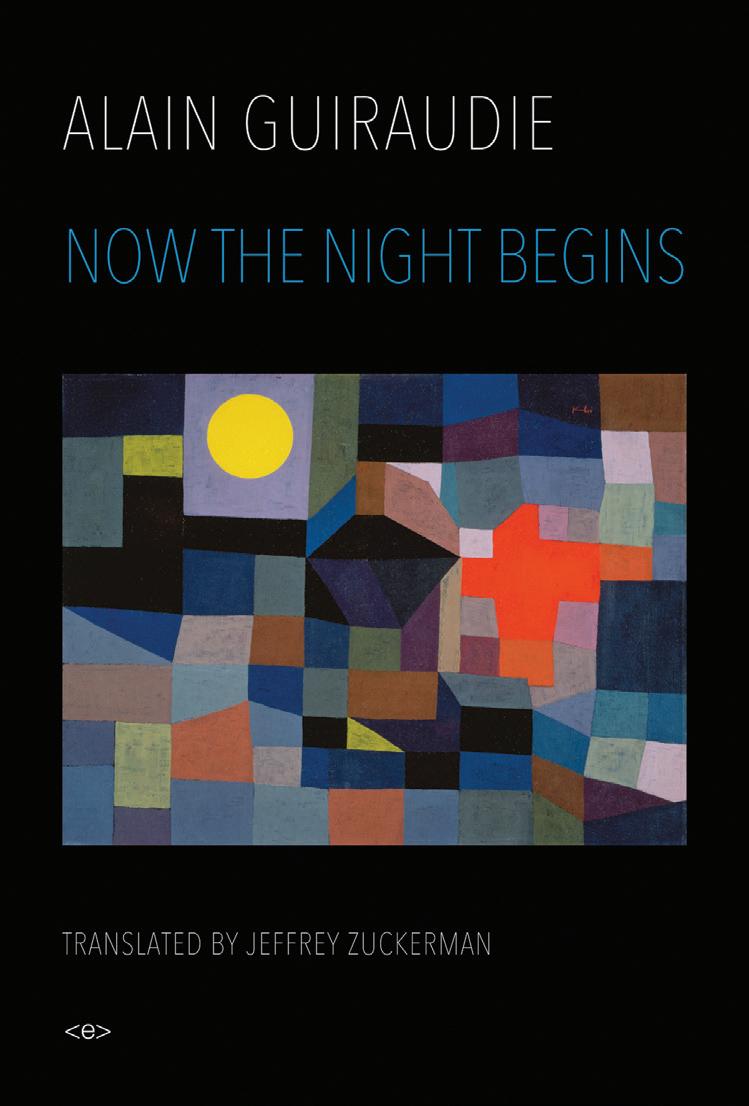
Alain Guiraudie is a French film director, screenwriter, and novelist. His films include Staying Vertical (2016), Stranger by the Lake (2013), and The King of Escape (2009).
“The genial perversity of Alain Guiraudie’s Now the Night Begins is something rare and fascinatingly energized, a metaphysical and moral slapstick that points to the arbitrariness of all authority and the fluidity of all desires. In its way, the most elegant, certainly the most hilarious brief for anarchy that anyone has written in a long time.”
—Gary Indiana
“Raw, sexual, and scatological, Alain Guiraudie’s novel evokes Sade and Bataille.”
—Elisabeth Philippe
50 SPRING 2018 | MITPRESS.MIT.EDU
DISTRIBUTED BY THE MIT PRESS
Dusty Pink
Jean-Jacques Schuhl translated by Jeffrey Zuckerman
finally there are the rolling stones who call for all these at the same time among them and around them: the policeman, the cross-dresser, the dancer, Frankenstein, the dandy, the robot —from Dusty Pink
Written with the hope of achieving a “dreary distant banality,” JeanJacques Schuhl’s first novel is a subjective stroll through an underground, glamorous Paris, a city that slips into the background but never disappears, hovering on the verge of its own suppression. An elegiac and luminous cut-up, Dusty Pink brings together race wire results, editions of France-Soir, the lyrics to well-known British songs, scripts from famous old films, pharmaceutical leaflets, fashion ads, and strips and scraps of culture in which the avant-garde and academicism blur in an overview of the cultural scene. This world of atmospheres, portraits, and dazzling associations of ideas creates a plane of shimmering surfaces.
Published in French in 1972, Jean-Jacques Schuhl’s Dusty Pink became a cult classic. This is its first translation.

Cult author Jean-Jacques Shuhl won the Prix Goncourt in 2000 for his novel Ingrid Caven, which sold over 235,000 copies in France. It was his first book since Dusty Pink was published in 1972.
A cult classic in France, the fi rst translation of a novel that captures a subjective stroll through an underground, glamorous Paris.
March 5 3/8 x 8, 128 pp.
$14.95T/£12.95 paper 978-1-63590-013-2
Native Agents series Distributed for Semiotext(e)

Also available from Semiotext(e) Fantomas Versus the Multinational Vampires
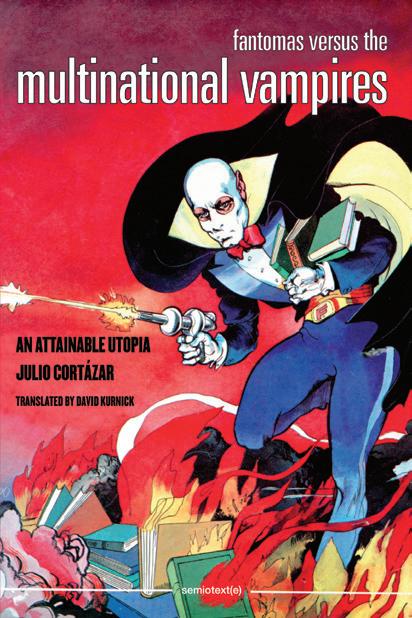
An Attainable Utopia Julio Cortázar
$14.95T/£12.95 paper 978-1-58435-134-4
51 MITPRESS.MIT.EDU | SPRING 2018 fiction DISTRIBUTED BY THE MIT PRESS
A novel that captures the glancing intersections of a loose group of artists and lawyers, restaurateurs, philosophers, winemakers, and boxers.
March 5 /8 x 8, 120 pp.
$14.95T/£12.95 paper 978-1-63590-015-6
Native Agents series Distributed for Semiotext(e)

Also in this series
Nicola, Milan

Lodovico Pignatti Morano
$14.95T/£12.95 paper 978-1-58435-128-3
Surveys Natasha Stagg $15.95T/£13.95 paper 978-1-58435-178-8

literature
Vzszhhzz
Jeanne
Graff
Composed between destinations, in cafes, museums, airplanes, and bars over three years, Jeanne Graff’s Vzszhhzz captures the glancing intersections of a loose group of artists and lawyers, restaurateurs, philosophers, wine-makers, and boxers whose lives are conducted almost entirely in languages not their own. A loose chronicle masquerading as a novel, Vszhhzz—like Michelle Bernstein’s All The King’s Horses, the Bernadette Corporation’s Reena Spaulings, and Natasha Stagg’s Surveys—couches sharp observations in a laconic and ambient style. By not saying too much, Vzszhhzz says everything about the vicissitudes of a creative and transient life.

Writer and curator Jeanne Graff was born in Lausanne, Switzerland and lives in New York. She’s a columnist for May Revue (Paris), works in a vineyard, and teaches art school in Geneva at HEAD. In 2014, Graff founded 186f Kepler, an art space without walls. She has organized numerous international exhibitions, and performs with her band Solar Lice. Graff recently completed a writing residency at Villa Noailles in Hyeres, France.
“There’s an art of writing amidst the energies and languages of others, and Graff’s ear for existential specificity finds momentum in even the most glancing encounters. Always on the move, Graff’s phototropic texts incline toward human heat, hallucinating characters upon contact.”
—John Kelsey
52 SPRING 2018 | MITPRESS.MIT.EDU
DISTRIBUTED BY THE MIT PRESS
occult | sound studies
High Static, Dead Lines

Sonic Spectres and the Object Hereafter
Kristen Gallerneaux
Trees rigged up to the wireless radio heavens. A fax machine used to decode the language of hurricanes. A broadcast ghost that hijacked a television station to terrorize a city. A failed computer factory in the desert with a slap-back echo resounding into ruin.
In High Static, Dead Lines, media historian and artist Kristen Gallerneaux weaves a literary mix tape that explores the entwined boundaries between sound, material culture, landscape, and esoteric belief. Essays and fictocritical interludes are arranged to evoke a network of ley lines for the “sonic spectre” to travel through—a hypothetical presence that manifests itself as an invisible layer of noise alongside the conventional histories of technological artifacts.
The objects and stories within span from the mid-nineteenth century to the present day, touching upon military, communications, and cultural history. A connective thread is the recurring presence of sound—audible, self-generative, and remembered—charting the contentious sonic histories of paranormal culture.
Kristen Gallerneaux is a writer, folklorist, and artist. She has published on topics as diverse as mathematics in midcentury design, the visual history of telepathy research, the world’s first mouse pad, and car audio bass battles in Miami. She is also Curator of Communications and Information Technology at the Henry Ford Museum in Dearborn, Michigan, where she continues to build upon one of the largest historic technology collections in North America.
A literary mix tape that explores the entwined boundaries between sound, material culture, landscape and esoteric belief. May 5 13/16 x 8 1/4, 264 pp. 24 illus.
$21.95T/£16.95 paper 978-1-907222-66-5
Distributed for Strange Attractor Press
53 MITPRESS.MIT.EDU | SPRING 2018
STRANGE ATTRACTOR PRESS DISTRIBUTED BY THE MIT PRESS
The life of escape artist, fortune-teller, author and raconteur “Ironfoot Jack,” aka Jack Rudolph Neave (1881–1959), the self-styled “King of the Bohemians” in London’s Soho. April 5 x 7 5/16, 264 pp. 16 illus.
$21.95T/£16.95 paper 978-1-907222-65-8 Distributed for Strange Attractor Press
studies | biography
The Surrender of Silence
The Memoir of Ironfoot Jack, King of the Bohemians edited by Colin Stanley introduction by Phil Baker

I became acquainted with gipsies, with show people, with buskers, with people who entertained the public by performing in the city, on fair grounds and market places. . . and with a variety of ‘fiddles’—that is, some dubious methods of obtaining the means of life. I became a member of this fraternity.
—from The Surrender of Silence
Escape artist, fortune-teller, author, and raconteur “Ironfoot Jack,” aka Jack Rudolph Neave (1881–1959), the self-styled “King of the Bohemians,” was a well-known Soho character in pre- and postwar London. His rich and enthralling story of a lifestyle now gone forever was dictated as his portrait was being painted by the artist Timothy Whidborne in 1956. It was then entrusted to a Soho acquaintance, the author Colin Wilson whose first book, The Outsider, had been a success that same year. Despite his efforts, Wilson failed to find a publisher and, after his death, the manuscript was discovered among his papers by his bibliographer Colin Stanley, who assembled the text, which is accompanied by a contextual introduction by cultural historian Phil Baker.
Jack wrote that The Surrender of Silence was “the outcome of years of struggle to survive; of solving the problem of existence by various and curious methods. . . Most of the people I am talking about led a precarious life and obtained their livelihood from day to day. . . . They worked to live; they did not live to work.”
This Strange Attractor Press edition is the first publication of this legendary work.
Colin Stanley is an author and the editor of Colin Wilson Studies
54 SPRING 2018 | MITPRESS.MIT.EDU
STRANGE ATTRACTOR PRESS DISTRIBUTED BY THE MIT PRESS
cultural
photography | cultural studies
The Honoured Dead
London Cemeteries in Old Photographs
Brian Parsons
Since they were established in the 1830s, London’s great cemeteries have inspired countless artists and photographers to record their quiet beauty and solemn majesty.
Not just resting places for the city’s honoured dead, they also serve as great repositories of social, architectural, and geographic history, reflecting our changing attitudes to the great inevitable.
Featuring over 170 images, along with comprehensive notes, The Honoured Dead presents a rarely seen collection of archival postcards, drawings, and photographs gathered over many years by author and former funeral director Brian Parsons.

As well as the celebrated “Magnificent Seven” necropolises—Highgate, Kensal Green, West Norwood, Abney Park, Nunhead, Brompton, and Tower Hamlets—the book also documents cemeteries and burial sites throughout Greater London and its environs, some of them now themselves buried by time.
Providing a unique perspective on London’s past, and its shifting visual representation, The Honoured Dead is a collection to be remembered with flowers.
A rarely seen collection of archival postcards, drawings, and photographs documenting London’s great cemeteries.
August 7 x 8 1/2, 240 pp. 178 color and b&w illus. $30.00T/£25.00 paper 978-1-907222-64-1
Distributed for Strange Attractor Press
Brian Parsons is the author of The Undertaker at Work (Strange Attractor Press) and London Cemeteries: An Illustrated Guide and Gazetteer (with Hugh Meller).
55 MITPRESS.MIT.EDU | SPRING 2018
STRANGE ATTRACTOR PRESS DISTRIBUTED BY THE MIT PRESS
Writings that shed new light on one of the most gifted, if reclusive, poets of the fin-de-siècle. June 5 5/16 x 8 1/4, 256 pp. 8 illus. $21.95T/£16.95 paper 978-1-907222-62-7 Distributed for Strange Attractor Press
Incurable
The Haunted Writings of Lionel Johnson, the Decadent Era’s Dark Angel edited by Nina Antonia

A lost poet of the decadent era, Lionel Johnson is the shadow man of the 1890s, an enigma “pale as wasted golden hair.” History has all but forgotten Johnson, except as a footnote to the lives of more celebrated characters like W. B. Yeats and Oscar Wilde.
Johnson should have been one of the great poets of the age but was already drinking eau-de-cologne for kicks while a teenager at Winchester College. His attraction to absinthe damaged his fragile health and cast him forever into a waking dream of haunted rooms and spectral poetry. A habitual insomniac, he haunted medieval burial grounds after dark, jotting down the epitaphs of the gone-too-young, as if anticipating his own early demise at the age of 35—falling from a bar stool in a Fleet Street pub.
It was rumored that Johnson performed “strange religious rites” in his rooms at Oxford and experimented with hashish in the company of fellow poet Ernest Dowson. Moving to London, he fell in with Simeon Solomon, Oscar Wilde, and Aubrey Beardsley, and would contribute to the leading decadent publications of the day, including The Chameleon, The Yellow Book, and The Savoy.
Like a glimmering of a votive candle in one of Johnson’s dream churches, Incurable sheds new light on one of the most gifted, if reclusive, poets of the fin-de-siècle. Containing a detailed biography, illustrations, rare and unusual material including previously unseen letters, poetry, and essays, Incurable pays tribute to this enchanting and eccentric poet while providing fresh insight into an era that continues to fascinate.
Nina Antonia is an English music journalist, author, and former singer. She has written articles and books about Johnny Thunders, the New York Dolls, and The Only Ones, as well as a memoir of glam star Brett Smiley.
56 SPRING 2018 | MITPRESS.MIT.EDU
STRANGE ATTRACTOR PRESS DISTRIBUTED BY THE MIT PRESS
literature
cultural studies
Scottish Lost Boys
Kirsten Norrie
In grunge and tartan, sideshow and magic lantern, Scottish Lost Boys presents Scotland as place and Scotland as idea in the imaginative flights, artistic struggles, and untimely deaths of a singular skeleton leaf clan.

Clan mythologists James McPherson and the Sobieski Stuart brothers; childhood scalping-survivor Robert McGee; fashion suicide Alexander McQueen; wolf-hunter Ernest Thompson Seton; film actor Jon Whiteley and director Bill Douglas; Aleister Crowley, conjuring spirits on the banks of Loch Ness; “Wizards of the North” Michael Scot, Sir Walter Scott, and John Henry Anderson; fantasy novelist George MacDonald: all these brilliant boys, wrapped in tartans of the imagination, encountered lostness as a betrayal of self or misguided acts of misadventure that fueled their art and identities.
These Scottish Lost Boys are Wild West protagonists, 1700s literary stars, shadow skin cutters, and cinematic murderers, all interwoven with J. M. Barrie’s themes of lostness, immortality, and myth within a Scottish context—the afterlife of fairy, skin, and shadow.
Kirsten Norrie is the author of The Last Wolf of Scotland and The Nine of Diamonds: Surroial Mordantless. Her writing has appeared in publications including Magma, ASLS New Writing Scotland, The Scotsman, Test Centre Magazine, Art Monthly, Performance Research, and By Our Selves. She also performs regularly and has recorded five albums as MacGillivray.
The imaginative flights, artistic struggles, and untimely deaths of some brilliant Scots, from Sir Walter Scott to Alexander McQueen.
June 5 13/16x 8 1/4, 296 pp. 35 illus.
$21.95T/£16.95 paper 978-1-907222-59-7
Distributed for Strange Attractor Press
57 MITPRESS.MIT.EDU | SPRING 2018
STRANGE ATTRACTOR PRESS DISTRIBUTED BY THE MIT PRESS
An anthology of conversations and essays, memories and commentary from the heyday of British pop music writing. May 6 x 9, 312 pp. $21.95T/£16.95 paper 978-1-907222-63-4 Distributed for Strange Attractor Press
A Hidden Landscape Once a Week
The Unruly Curiosity of the British Music Press from the ‘60s to the ‘80s. . . by those who made it happen edited by Mark Sinker
In its heyday, from the 1960s to the 1980s, the UK music press was the forging ground for a new critical culture, where readers could encounter anything from comics and cult films to new musical forms and radical underground politics. It created an off-mainstream collective cultural commons improvised through a networked subculture of rival weeklies, monthlies, and fanzines, including such titles as NME, Melody Maker, Sounds, Record Mirror, Black Echoes, Black Music, Let It Rock, Street Life, Zigzag, and Smash Hits
This anthology of conversations and essays, memories and commentary explores how this uncharted space first came about, who put it together, what it achieved, and where it went. Along the way, it unearths the many surprising worlds explored by this network of young anarchists, dreamers, and agitators who dared to take pop culture seriously, and considers what remains of their critical legacy.
Contributors include writers and editors, illustrators, and photographers, among them Valerie Wilmer, Charles Shaar Murray, Richard Williams, Penny Reel, Jonh Ingham, Jon Savage, Cynthia Rose, Paul Morley, David Toop, Bob Stanley, Barney Hoskyns, Jonathon Green, Simon Frith, Paul Gilroy, and many others.
With cover and illustrations by legendary comics artist Savage Pencil. Mark Sinker is a music writer, journalist, and former editor of The Wire magazine.

58 SPRING 2018 | MITPRESS.MIT.EDU
STRANGE ATTRACTOR PRESS DISTRIBUTED BY THE MIT PRESS
music
cultural studies
Strange Attractor Journal Five
edited by Mark Pilkington and Jamie Sutcliffe
After seven years of silence, the acclaimed Strange Attractor Journal returns with a characteristically eclectic collection of high weirdness from the margins of culture. Covering previously uncharted regions of history, anthropology, art, literature, architecture, science, and magic since 2004, each Journal has presented new and unprecedented research into areas that scholarship has all too often ignored.
Featuring essays from academics, artists, enthusiasts, and sorcerers, Journal Five explores matters including the folklore of foghorns; the occult origins of the dissident surrealist secret society the Acéphale; the pleasures of heathen falconry; the dark cosmological mysteries of Bremen’s Haus Atlantis; a provisional taxonomy of animals with human faces; a twentieth-century crucifixion on Hampstead Heath, and an unpublished horror script by David MacGillivray and Ken Hollings.

Journal Five sees Strange Attractor continuing in its mission to celebrate unpopular culture. Join us.
Praise for previous Strange Attractor Journals
“One of the most weirdly beautiful, beautifully weird magazines of the past hundred-odd years. It smacks far more of the late nineteenth century than the early twenty-first, and for anyone who has so much as the mildest penchant for the odd, it is a rare delight.”
The Independent “Sublimely odd and beautifully designed.”
The Guardian
“Eccentric scholarship, weird journalism and obsessive research. There’s nothing else like it.”
—
The Independent on Sunday
The return of the Strange Attractor Journal , offering a characteristically eclectic collection of high weirdness from the margins of culture.
August 5 13/16 x 8 1/4, 320 pp. 40 illus.
$21.95T/£16.95 paper 978-1-907222-52-8
Distributed for Strange Attractor Press
Mark Pilkington and Jamie Sutcliffe operate Strange Attractor Press.
59 MITPRESS.MIT.EDU | SPRING 2018
STRANGE ATTRACTOR PRESS DISTRIBUTED BY THE MIT PRESS
An illustrated history of the evolution of British women’s cycle wear. April 7 x 9, 264 pp. 105 illus $29.95T/£24.95 cloth 978-1-906897-75-8 Distributed for Goldsmiths Press
studies | history of technology
Bikes and Bloomers

Victorian Women Inventors and Their Extraordinary Cycle Wear
Kat Jungnickel
The bicycle in Victorian Britain is often celebrated as a vehicle of women’s liberation. Less noted is another critical technology with which women forged new and mobile public lives—cycle wear. This illustrated history of women’s cycle wear from Goldsmiths Press brings together Victorian engineering and radical feminist invention to supply a missing chapter in the history of feminism.
Despite its benefits, cycling was a material and ideological minefield for women. Conventional fashions were unworkable, with skirts catching in wheels and tangling in pedals. Yet wearing “rational” cycle wear could provoke verbal and sometimes physical abuse from those threatened by newly mobile women. Seeking a solution, pioneering women not only imagined, made, and wore radical new forms of cycle wear but also patented their inventive designs. The most remarkable of these were convertible costumes that enabled wearers to transform ordinary clothing into cycle wear.
Drawing on in-depth archival research and inventive practice, Kat Jungnickel brings to life in rich detail the little-known stories of six inventors of the 1890s. Alice Bygrave, a dressmaker of Brixton, registered four patents for a skirt with a dual pulley system built into its seams. Julia Gill, a court dressmaker of Haverstock Hill, patented a skirt that drew material up the waist using a mechanism of rings or eyelets. Mary and Sarah Pease, sisters from York, patented a skirt that could be quickly converted into a fashionable high-collar cape. Henrietta Müller, a women’s rights activist of Maidenhead, patented a three-part cycling suit with a concealed system of loops and buttons to elevate the skirt. And Mary Ann Ward, a gentlewoman of Bristol, patented the “Hyde Park Safety Skirt,” which gathered fabric at intervals using a series of side buttons on the skirt. Their unique contributions to cycling’s past continue to shape urban life for contemporary mobile women.
Kat Jungnickel is a Senior Lecturer in the Sociology department of Goldsmiths, University of London.
60 SPRING 2018 | MITPRESS.MIT.EDU
DISTRIBUTED BY THE MIT PRESS GOLDSMITHS PRESS
women’s
economics | cultural studies
Economic Science Fictions
edited by William Davies
From the libertarian economics of Ayn Rand to Aldous Huxley’s consumerist dystopias, economics and science fiction have often orbited each other. In Economic Science Fictions, editor William Davies has deliberately merged the two worlds, asking how we might harness the power of the utopian imagination to revitalize economic thinking.

Rooted in the sense that our current economic reality is no longer credible or viable, this collection treats our economy as a series of fictions and science fiction as a means of anticipating different economic futures. It asks how science fiction can motivate new approaches to economics and provides surprising new syntheses, merging social science with fiction, design with politics, scholarship with experimental forms.
With an opening chapter from Ha-Joon Chang as well as theory, short stories, and reflections on design, this book from Goldsmiths Press challenges and changes the notion that economics and science fiction are worlds apart. The result is a wealth of fresh and unusual perspectives for anyone who believes the economy is too important to be left solely to economists.
Contributors
AUDINT, Khairani Barokka, Carina Brand, Ha-Joon Chang, Miriam Cherry, William Davies, Mark Fisher, Dan Gavshon-Brady and James Pockson, Owen Hatherley, Laura Horn, Tim Jackson, Mark Johnson, Bastien Kerspern, Nora O Murchú, Tobias Revell et al., Judy Thorne, Sherryl Vint, Joseph Walton, Brian Willems
An innovative new anthology exploring how science fiction can motivate new approaches to economics.
April 5 3/8 x 8, 312 pp. 17 illus.
$29.95T/£24.95 cloth 978-1-906897-68-0
PERC Papers series Distributed for Goldsmiths Press
William Davies is Reader in Political Economy and Codirector of PERC at Goldsmiths, University of London.
61 MITPRESS.MIT.EDU | SPRING 2018
GOLDSMITHS PRESS DISTRIBUTED BY THE MIT PRESS
A guide to the nature, purpose, and place of public service television within a multi-platform, multichannel ecology. April 7 x 9, 356 pp. 4 illus.

$35.00S/£27.95 cloth 978-1-906897-71-0
Distributed for Goldsmiths Press
A Future for Public Service Television
edited by Des Freedman and Vana Goblot
Television is on the verge of both decline and rebirth. Vast technological change has brought about financial uncertainty as well as new creative possibilities for producers, distributors, and viewers. This volume from Goldsmiths Press examines not only the unexpected resilience of TV as cultural pastime and aesthetic practice but also the prospects for public service television in a digital, multichannel ecology.
The proliferation of platforms from Amazon and Netflix to YouTube and the vlogosphere means intense competition for audiences traditionally dominated by legacy broadcasters. Public service broadcasters— whether the BBC, the German ARD, or the Canadian Broadcasting Corporation—are particularly vulnerable to this volatility. Born in the more stable political and cultural conditions of the twentieth century, they face a range of pressures on their revenue, their remits, and indeed their very futures. This book reflects on the issues raised in Lord Puttnam’s 2016 Public Service TV Inquiry Report, with contributions from leading broadcasters, academics, and regulators. With resonance for students, professionals, and consumers with a stake in British media, it serves both as historical record and as a look at the future of television in an on-demand age.
Des Freedman is Professor of Media and Communications at Goldsmiths, University of London. He is project lead for the Inquiry into a Future for Public Service Television. Vana Goblot teaches media and communications at Goldsmiths, University of London, and is a research associate on the Inquiry.
Contributors include Tess Alps, Patrick Barwise, James Bennett, Georgie Born, Natasha Cox, Gunn Enli, Des Freedman, Vana Goblot, David Hendy, Jennifer Holt, Amanda D. Lotz, Sarita Malik, Matthew Powers, Lord Puttnam, Trine Syvertsen, Jon Thoday, Mark Thompson
62 SPRING 2018 | MITPRESS.MIT.EDU
DISTRIBUTED BY THE MIT PRESS GOLDSMITHS PRESS
media studies
Sonic Agency
Sound and Emergent Forms of Resistance
Brandon LaBelle
In a world dominated by the visual, could contemporary resistances be auditory? This timely and important book from Goldsmiths Press highlights sound’s invisible, disruptive, and affective qualities and asks whether the unseen nature of sound can support a political transformation. In Sonic Agency, Brandon LaBelle sets out to engage contemporary social and political crises by way of sonic thought and imagination. He divides sound’s functions into four figures of resistance—the invisible, the overheard, the itinerant, and the weak—and argues for their role in creating alternative “unlikely publics” in which to foster mutuality and dissent. He highlights existing sonic cultures and social initiatives that utilize or deploy sound and listening to address conflict, and points to their work as models for a wider movement. He considers issues of disappearance and hidden culture, nonviolence and noise, creole poetics, and networked life, aiming to unsettle traditional notions of the “space of appearance” as the condition for political action and survival.

By examining the experience of listening and being heard, LaBelle illuminates a path from the fringes toward hope, citizenship, and vibrancy. In a current climate that has left many feeling they have lost their voices, it may be sound itself that restores it to them.
Brandon LaBelle is Professor in New Media in the Faculty of Fine Art, Music and Design at the University of Bergen. He is the author of Lexicon of the Mouth: Poetics and Politics of Voice and the Oral Imaginary, Diary of an Imaginary Egyptian, Acoustic Territories: Sound Culture and Everyday Life, and Background Noise: Perspectives on Sound Art.
A timely exploration of whether sound and listening can be the basis of political change.
February 6 x 9, 224 pp. $30.00S/£24.95 cloth 978-1-906897-51-2
Distributed for Goldsmiths Press
63 MITPRESS.MIT.EDU | SPRING 2018
GOLDSMITHS PRESS DISTRIBUTED BY THE MIT PRESS
sound studies
A sophisticated critical take on contemporary game culture that reconsiders the boundaries between gamers and games.
April 6 x 9, 160 pp.
Future Gaming
Creative Interventions in Video Game Culture
Paolo Ruffino
This book is not about the future of video games. It is not an attempt to predict the moods of the market, the changing profile of gamers, the benevolence or malevolence of the medium. This book is about those predictions. It is about the ways in which the past, present, and future notions of games are narrated and negotiated by a small group of producers, journalists, and gamers, and about how invested these narrators are in telling the story of tomorrow.
This new title from Goldsmiths Press by Paulo Ruffino suggests the story could be told another way. Considering game culture, from the gamification of self-improvement to GamerGate’s sexism and violence, Ruffino lays out an alternative, creative mode of thinking about the medium: a sophisticated critical take that blurs the distinctions among studying, playing, making, and living with video games. Offering a series of stories that provide alternative narratives of digital gaming, Ruffino aims to encourage all of us who study and play (with) games to raise ethical questions, both about our own role in shaping the objects of research, and about our involvement in the discourses we produce as gamers and scholars. For researchers and students seeking a fresh approach to game studies, and for anyone with an interest in breaking open the current locked-box discourse, Future Gaming offers a radical lens with which to view the future.

$30.00S/£24.95
Distributed for
Press 64 SPRING 2018 | MITPRESS.MIT.EDU
Paolo Ruffino is a Lecturer in Media Studies at The University of Lincoln. DISTRIBUTED BY THE MIT PRESS GOLDSMITHS PRESS
cloth 978-1-906897-55-0 Future Media series
Goldsmiths
game studies
literature
Global Dystopias
edited by Junot Díaz
As the recent success of Margaret Atwood’s novel-turned-television hit The Handmaid’s Tale shows us, dystopia is more than minatory fantasy; it offers a critical lens upon the present. “It is not only a kind of vocabulary and idiom,” says bestselling author and volume editor Junot Díaz. “It is a useful arena in which to begin to think about who we are becoming.”
Bringing together some of the most prominent writers of science fiction and introducing fresh talent, this collection of stories, essays, and interviews explores global dystopias in apocalyptic landscapes and tech futures, in robot sentience and forever war. Global Dystopias engages the familiar horrors of George Orwell’s 1984 alongside new work by China Miéville, Tananarive Due, and Maria Dahvana Headley. In “Don’t Press Charges, and I Won’t Sue,” award-winning writer Charlie Jane Anders uses popularized stigmas toward transgender people to create a not-sodistant future in which conversion therapy is not only normalized, but funded by the government. Henry Farrell surveys the work of dystopian forebear Philip K. Dick and argues that distinctions between the present and the possible future aren’t always that clear. Contributors also include Margaret Atwood, and award-winning speculative writer Nalo Hopkinson.
In the era of Trump, resurgent populism, and climate denial, this collection poses vital questions about politics and civic responsibility and subjectivity itself. If we have, as Díaz says, reached peak dystopia, then Global Dystopias might just be the handbook we need to survive it.

Junot Díaz is the author of the Pulitzer Prize-winning novelThe Brief Wondrous Life of Oscar Wao and the short story collections Drown and This Is How You Lose Her. Associate Professor in the Writing and Humanistic Studies Program at MIT, he is fiction editor of Boston Review
Contributors
Charlie Jane Anders, Margaret Atwood, Tananarive Due, Maria Dahvana Headley, Nalo Hopkinson, Maureen McHugh, China Miéville, Jordy Rosenberg
Stories, essays, and interviews explore dystopias and their lessons for the present.
Available 6 5/8 x 10 1/4, 208 pp.
$19.95T/£14.95 paper 978-1-946511-04-1
Distributed for Boston Review

65 MITPRESS.MIT.EDU | SPRING 2018
DISTRIBUTED BY THE MIT PRESS
American history | African-American studies
Fifty Years Since MLK
edited by Brandon Terry
poetry | environment
What Nature
edited by Timothy Donnelly, BK Fischer, and Stefania Heim
Martin Luther King’s legacy for today’s activists.
Since his assassination on April 4, 1968, Martin Luther King’s legacy has influenced generations of activism. Edited and with a lead essay by Brandon Terry, Fifty Years Since MLK explores what this legacy can and cannot do for activism in the present.
King spent the months leading up to his death organizing demonstrations against the Vietnam War and planning the Poor People’s Campaign, a “multiracial army of the poor” that would march on Washington in pursuit of economic justice. Thus the spring of 1968 represented a hopeful, albeit chaotic set of possibilities; King, along with countless other activists, offered both ethical and strategic solutions to the complex problems of war, racism, and economic inequality. With a critical eye on both past and present, this collection of essays explores that moment of promise, and how, in the fifty years since King’s death, historical forces have shaped what we claim as a usable past in fighting the injustices of our time.
Brandon Terry is Assistant Professor of African and African American Studies and Social Studies at Harvard University.
February 6 5/8 x 10 1/4, 144 pp.
$16.00T/£13.95 paper 978-1-946511-06-5
Distributed for Boston Review
Poetry and critical essays that grapple with the intersection of natural and cultural crises.
In an age of record-breaking superstorms and environmental degradation, What Nature seeks—through poetry and critical essays—to make sense of how we interact with and are influenced by nature. This collection includes new work from such acclaimed poets as Natalie Diaz, winner of the Pablo Neruda Prize for Poetry, and Pulitzer Prize winner Jorie Graham, whose poetry often explores the consequences of global warming by creating overgrown, apocalyptic futures.
Shifting its focus from what has already been lost to what lies ahead, What Nature rejects the sentimentality of traditional nature poetry. Instead, its texts expose and resist the global iniquities that create large-scale human suffering, a world where climate change disproportionately affects the poorest communities. The intersection of natural and cultural crises—like Standing Rock’s fight against the Dakota Access Pipeline and the water crisis in Flint, Michigan—are confronted head on. These poems, lyric essays, and hybrid works grapple with political unrest, refugeeism, and resource exploitation, transforming the genre of ecopoetics.
Timothy Donnelly is Poetry Editor at Boston Review and Assistant Professor at Columbia University. His poems have appeared in Conduit, Denver Quarterly, Fence, The Paris Review, Ploughshares, TriQuarterly, Verse, Volt and elsewhere. BK Fischer is a Poetry Editor at Boston Review. She is the author of a novel-in-verse, Mutiny Gallery, winner of the 2011 T. S. Eliot Prize from Truman State University Press, and St. Rage’s Vault, which won the 2012 Washington Prize from The Word Works. Stefania Heim is a Poetry Editor at Boston Review. Her poems have appeared in publications including Harp and Altar, La Petite Zine, The Literary Review, and A Public Space.
Contributors include Natalie Diaz, Mark Doty, and Jorie Graham
March 6 5/8 x 10 1/4, 128, pp. $16.00T/£13.95 paper 978-1-946511-05-8
Distributed for Boston Review

SPRING 2018 | MITPRESS.MIT.EDU
66 DISTRIBUTED BY THE MIT PRESS
“The kind of books we’re all looking for to make sense of the current political and cultural moment. In fact, Naomi Klein just sent a note saying ‘Boston Review is so good right now.’ I really recommend you give these a try.” —Carole Horne, Harvard Book Store
Poems for Political Disaster edited by Timothy Donnelly, BK Fischer, Stefania Heim, Matt Lord foreword by Juan Felipe Herrera $12.00T/£9.95 paper 978-1-946511-01-0

Race Capitalism Justice Walter Johnson, Robin D. G. Kelley $16.00T/£13.95 paper 978-1-946511-00-3


Work Inequality Basic Income Brishen Rogers, Philippe van Parijs, Dorian Warren, et al $16.00T/£13.95 paper 978-1-946511-02-7

The President’s House Is Empty Michael Hardt, Bonnie Honig, et al $16.00T/£13.95 paper 978-1-946511-03-4

67 MITPRESS.MIT.EDU | SPRING 2018
DISTRIBUTED BY THE MIT PRESS
Norbert Wiener’s celebrated autobiography, available for the first time in one volume. March 6 x 9, 520 pp.
$40.00S/£32.95 paper 978-0-262-53544-1
Norbert Wiener—A Life in Cybernetics
Ex-Prodigy: My Childhood and Youth and I Am a Mathematician: The Later Life of a Prodigy Norbert Wiener foreword by Ronald R. Kline
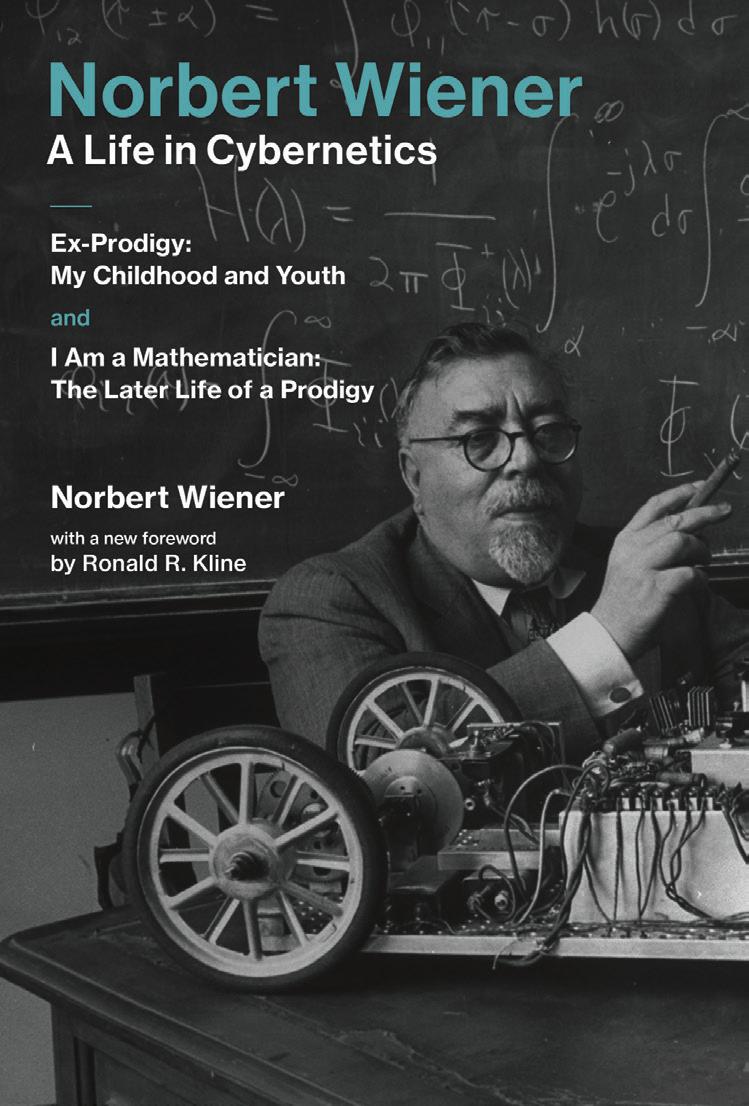
Norbert Wiener—A Life in Cybernetics combines for the first time the two volumes of Norbert Wiener’s celebrated autobiography. Published at the height of public enthusiasm for cybernetics—when it was taken up by scientists, engineers, science fiction writers, artists, and musicians— Ex-Prodigy (1953) and I Am a Mathematician (1956) received attention from both scholarly and mainstream publications, garnering reviews and publicity in outlets that ranged from the New York Times and New York Post to the Virginia Quarterly Review
Norbert Wiener was a mathematician with extraordinarily broad interests. The son of a Harvard professor of Slavic languages, Wiener was reading Dante and Darwin at seven, graduated from Tufts at fourteen, and received a PhD from Harvard at eighteen. He joined MIT’s Department of Mathematics in 1919, where he remained until his death in 1964 at sixty-nine. In Ex-Prodigy, Wiener offers an emotionally raw account of being raised as a child prodigy by an overbearing father. In I Am a Mathematician, Wiener describes his research at MIT and how he established the foundations for the multidisciplinary field of cybernetics and the theory of feedback systems. This volume makes available the essence of Wiener’s life and thought to a new generation of readers.
Norbert Wiener (1894–1964) served on the faculty in the Department of Mathematics at MIT from 1919 until his death. In 1963, he was awarded the National Medal of Science for his contributions to mathematics, engineering, and biological science. He was the author of many books, with Cybernetics: On Control and Communication in the Animal and the Machine and God and Golem: A Comment on Certain Points Where Cybernetics Impinges on Religion among the most well-known.
ACADEMIC TRADE 68 SPRING 2018 | MITPRESS.MIT.EDU
mathematics | biography
The Essential Tversky

Amos Tversky edited and with an introduction by Eldar Shafir foreword by Michael Lewis afterword by Daniel Kahneman
Amos Tversky (1937–1996) was a towering figure in the cognitive and decision sciences. His work was ingenious, exciting, and influential, spanning topics from intuition to statistics to behavioral economics. His long and extraordinarily productive collaboration with his friend and colleague Daniel Kahneman was the subject of Michael Lewis’s best-selling book, The Undoing Project: A Friendship that Changed Our Minds The Essential Tversky offers a selection of Tversky’s best, most influential and accessible papers, “classics” chosen to capture the essence of Tversky’s thought.
The impact of Tversky’s work is far reaching and long-lasting. In 2002, Kahneman, who drew on their joint work in his much-praised 2013 book, Thinking, Fast and Slow (and who contributes an afterword to this collection), was awarded the Nobel Prize in Economics for work done with Tversky.
In The Undoing Project, Lewis (who contributes a foreword to this collection) describes his discovery that Tversky and Kahneman’s thinking laid the foundation for Moneyball, his own ode to number-crunching. The papers collected in The Essential Tversky cover topics that include cognitive and perceptual bias, misguided beliefs, inconsistent preferences, risky choice and loss aversion decisions, and psychological common sense. Together, they offer nonspecialist readers an introduction to one of the most brilliant social science thinkers of the twentieth century.
Amos Tversky (1937–1996) was a mathematical psychologist whose research in the cognitive and decision sciences has been enormously influential. From 1978 to 1996, Tversky taught at Stanford University, where he was the inaugural David-Brack Professor of Behavioral Sciences and Principal Investigator at the Stanford Center on Conflict and Negotiation. Eldar Shafir, a student, close friend, and collaborator of Tversky’s, is Class of 1987 Professor of Behavioral Science and Public Policy at Princeton University.
Some of the best and most influential papers by Amos Tversky, one of the most brilliant social science thinkers of the twentieth century.
July 7 x 9, 416 pp. 47 illus.
$35.00S/£27.95 paper 978-0-262-53510-6
ACADEMIC TRADE 69 MITPRESS.MIT.EDU | SPRING 2018
psychology
How Americans adapted European royal illuminations for patriotic celebrations, spectacular expositions, and intensely bright commercial lighting to create the world’s most dazzling and glamorous cities. March 6 x 9, 288 pp. 58 illus.

$30.00S/£24.95 cloth 978-0-262-03741-9
history of technology | urban studies
American Illuminations
Urban Lighting, 1800–1920
David E. Nye
Illuminated fêtes and civic celebrations began in Renaissance Italy and spread through the courts of Europe. Their fireworks, torches, lamps, and special effects glorified the monarch, marked the birth of a prince, or celebrated military victory. Nineteenth-century Americans rejected such monarchial pomp and adapted spectacular lighting to their democratic, commercial culture. In American Illuminations, David Nye explains how they experimented with gas and electric light to create illuminated cityscapes far brighter and more dynamic than those of Europe, and how these illuminations became symbols of modernity and the conquest of nature.
Americans used gaslight and electricity in parades, expositions, advertising, elections, and political spectacles. In the 1880s, cities erected powerful arc lights on towers to create artificial moonlight. By the 1890s they adopted more intensive, commercial lighting that defined distinct zones of light and glamorized the city’s White Ways, skyscrapers, bridges, department stores, theaters, and dance halls. Poor and blighted areas disappeared into the shadows. American illuminations also became integral parts of national political campaigns, presidential inaugurations, and victory celebrations after the Spanish-American War and World War I.
David E. Nye, who was knighted by the Danish Queen in 2013, is Senior Research Fellow at the Charles Babbage Institute and the History of Science and Technology program at the University of Minnesota and Professor of American Studies in Denmark. His eight other books published by the MIT Press include Electrifying America and When the Lights Went Out: A History of American Blackouts. His awards include the Leonardo da Vinci Medal (2005).
ACADEMIC TRADE 70 SPRING 2018 | MITPRESS.MIT.EDU
Rock, Bone, and Ruin
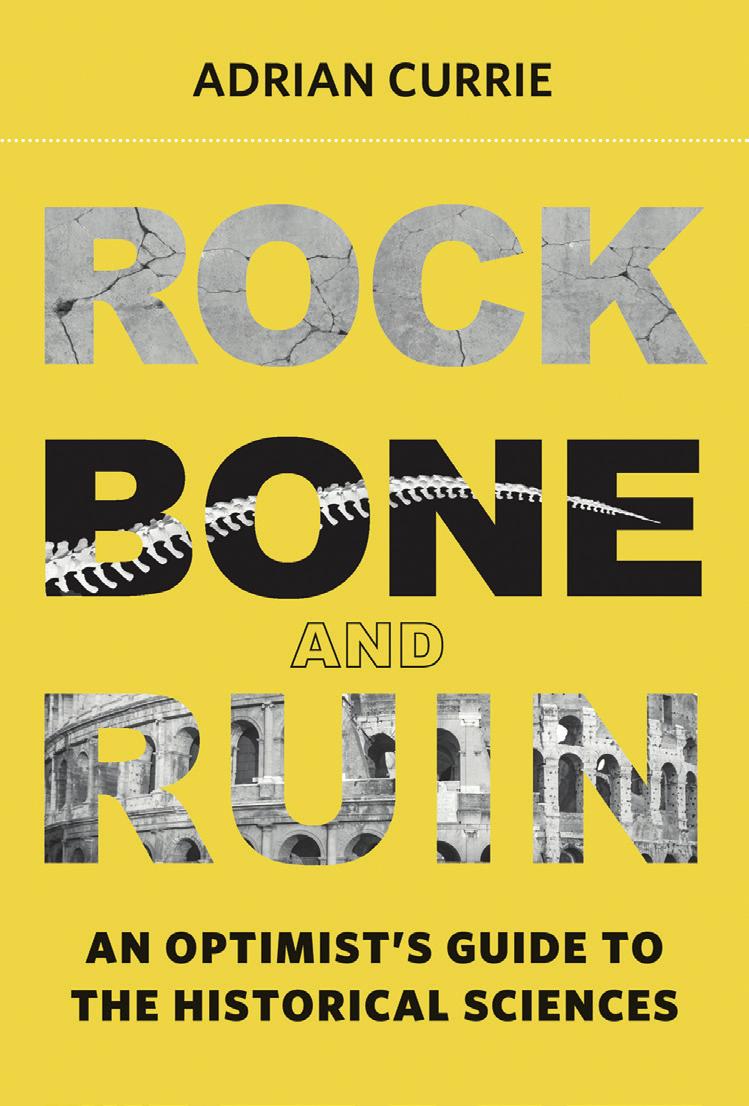
An Optimist’s Guide to the Historical Sciences
Adrian Currie
The “historical sciences”—geology, paleontology, and archaeology— have made extraordinary progress in advancing our understanding of the deep past. How has this been possible, given that the evidence they have to work with offers mere traces of the past? In Rock, Bone, and Ruin, Adrian Currie explains that these scientists are “methodological omnivores,” with a variety of strategies and techniques at their disposal, and that this gives us every reason to be optimistic about their capacity to uncover truths about prehistory. Creative and opportunistic paleontologists, for example, discovered and described a new species of prehistoric duck-billed platypus from a single fossilized tooth. Examining the complex reasoning processes of historical science, Currie also considers philosophical and scientific reflection on the relationship between past and present, the nature of evidence, contingency, and scientific progress.
Currie draws on varied examples from across the historical sciences, from Mayan ritual sacrifice to giant Mesozoic fleas to Mars’s mysterious watery past, to develop an account of the nature of, and resources available to, historical science. He presents two major case studies: the emerging explanation of sauropod size, and the “snowball earth” hypothesis that accounts for signs of glaciation in Neoproterozoic tropics. He develops the Ripple Model of Evidence to analyze “unlucky circumstances” in scientific investigation; examines and refutes arguments for pessimism about the capacity of the historical sciences, defending the role of analogy and arguing that simulations have an experiment-like function. Currie argues for a creative, open-ended approach, “empirically grounded” speculation.
Adrian Currie is a Postdoctoral Associate at the Centre for the Study of Existential Risk at Cambridge University.
An argument that we should be optimistic about the capacity of “methodologically omnivorous” geologists, paleontologists, and archaeologists to uncover truths about the deep past.
March 6 x 9, 376 pp. 25 illus.
$35.00S/£27.95 cloth 978-0-262-03726-6
Life and Mind series
ACADEMIC TRADE 71 MITPRESS.MIT.EDU | SPRING 2018 science
How family video game play promotes intergenerational communication, connection, and learning. March 6 x 9, 224 pp. 6 illus.
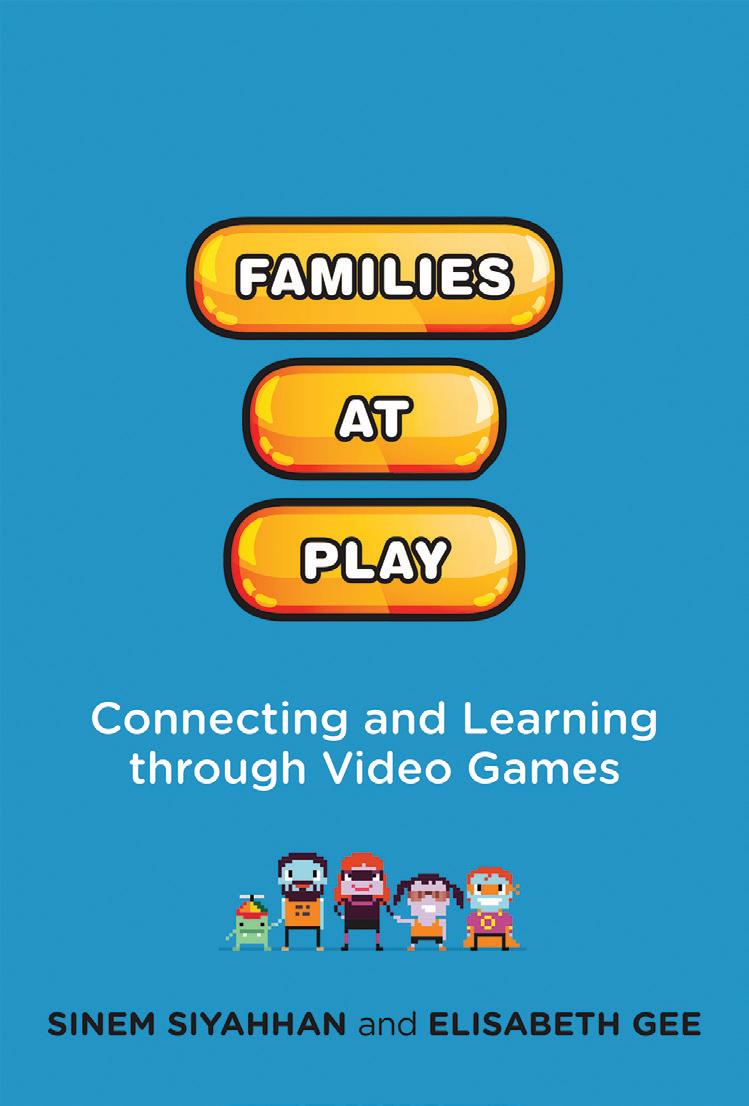
$30.00S/£24.95 cloth 978-0-262-03746-4
The John D. and Catherine T. MacArthur Foundation Series on Digital Media and Learning
digital culture | social science
Families at Play
Connecting and Learning through Video Games Sinem Siyahhan and Elisabeth Gee
Video games have a bad reputation in the mainstream media. They are blamed for encouraging social isolation, promoting violence, and creating tensions between parents and children. In this book, Sinem Siyahhan and Elisabeth Gee offer another view. They show that video games can be a tool for connection, not isolation, creating opportunities for families to communicate and learn together.
Like smartphones, Skype, and social media, games help families stay connected. Siyahhan and Gee offer examples: One family treats video game playing as a regular and valued activity, and bonds over Halo. A father tries to pass on his enthusiasm for Star Wars by playing Lego Star Wars with his young son. Families express their feelings and share their experiences and understanding of the world through playing video games like The Sims, Civilization, and Minecraft. Some video games are designed specifically to support family conversations around such real-world issues and sensitive topics as bullying and peer pressure.
Siyahhan and Gee draw on a decade of research to look at how learning and teaching take place when families play video games together. With video games, they argue, the parents are not necessarily the teachers and experts; all family members can be both teachers and learners. They suggest video games can help families form, develop, and sustain their learning culture as well as develop skills that are valued in the twenty-first century workplace. Educators and game designers should take note.
Sinem Siyahhan is Assistant Professor of Educational Technology in the School of Education at California State University, San Marcos, and Founding Director of Play2Connect. Elisabeth Gee is Delbert and Jewell Lewis Chair in Reading and Literacy and Professor in the Mary Lou Fulton Teachers College at Arizona State University.
ACADEMIC TRADE 72 SPRING 2018 | MITPRESS.MIT.EDU
bioethics | information science | public policy
Ethics in Everyday Places
Mapping Moral Stress, Distress, and Injury
Tom Koch
In Ethics in Everyday Places, ethicist and geographer Tom Koch considers what happens when, as he puts it, “you do everything right but know you’ve done something wrong.” The resulting moral stress and injury, he argues, are pervasive in modern Western society. Koch makes his argument “from the ground up,” from the perspective of average persons, and through a revealing series of maps in which issues of ethics and morality are embedded.
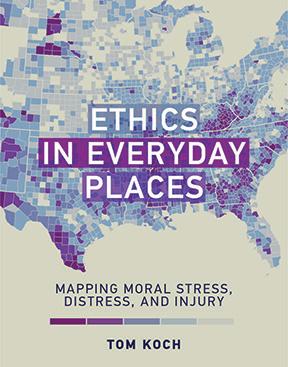
The book begins with a general grounding in both moral stress and mapping as a means of investigation. The author then examines the ethical dilemmas of mapmakers and others in the popular media and the sciences, including graphic artists, journalists, researchers, and social scientists. Koch expands from the particular to the general, from mapmaker and journalist to the readers of maps and news. He explores the moral stress and injury in educational funding, poverty, and income inequality (“Why aren’t we angry that one in eight fellow citizens live in federally certified poverty?”), transportation modeling (seen in the iconic map of the London transit system and the hidden realities of exclusion), and U.S. graft organ transplantation.
This uniquely interdisciplinary work rewrites our understanding of the nature of moral stress, distress and injury, and ethics in modern life. Written accessibly and engagingly, it transforms how we think of ethics—personal and professional—amid the often conflicting moral injunctions across modern society.
Tom Koch is Adjunct Professor of Medical Geography at the University of British Columbia, a consultant in ethics and gerontology at Alton Medical Centre, Toronto, and Director of Information Outreach, Ltd. He is the author of fourteen previous books, including Thieves of Virtue: When Bioethics Stole Medicine (MIT Press).
An exploration of moral stress, distress, and injuries inherent in modern society through the maps that pervade academic and public communications worlds.
February 7 x 9, 272 pp. 38 color illus., 15 b&w illus. $35.00S/£27.95 cloth 978-0-262-03721-1
Basic Bioethics series Copublished with Esri Press
ACADEMIC TRADE 73 MITPRESS.MIT.EDU | SPRING 2018
How sharing the mundane details of daily life did not start with Facebook, Twitter, and YouTube but with pocket diaries, photo albums, and baby books. March 6 x 9, 176 pp. 5 illus. $28.00S/£22.95 cloth 978-0-262-03785-3
The Qualified Self

Social Media and the Accounting of Everyday Life Lee Humphreys
Social critiques argue that social media have made us narcissistic, that Facebook, Twitter, Instagram, and YouTube are all vehicles for mepromotion. In The Qualified Self, Lee Humphreys offers a different view. She shows that sharing the mundane details of our lives—what we ate for lunch, where we went on vacation, who dropped in for a visit—didn’t begin with mobile devices and social media. People have used media to catalog and share their lives for several centuries. Pocket diaries, photo albums, and baby books are the predigital precursors of today’s digital and mobile platforms for posting text and images. The ability to take selfies has not turned us into needy narcissists; it’s part of a longer story about how people account for everyday life.
Humphreys refers to diaries in which eighteenth-century daily life is documented with the brevity and precision of a tweet, and cites a nineteenth-century travel diary in which a young woman complains that her breakfast didn’t agree with her. Diaries, Humphreys explains, were often written to be shared with family and friends. Pocket diaries were as mobile as smartphones, allowing the diarist to record life in real time. Humphreys calls this chronicling, in both digital and nondigital forms, media accounting. The sense of self that emerges from media accounting is not the purely statistics-driven “quantified self,” but the more well-rounded qualified self. We come to understand ourselves in a new way through the representations of ourselves that we create to be consumed.
Lee Humphreys is Associate Professor in the Department of Communication at Cornell University.
ACADEMIC TRADE 74 SPRING 2018 | MITPRESS.MIT.EDU
media | digital culture
disability studies | bioethics
Choosing Down Syndrome
Ethics and New Prenatal Testing Technologies
Chris Kaposy
The rate at which parents choose to terminate a pregnancy when prenatal tests indicate that the fetus has Down syndrome is between 60 and 90 percent. In Choosing Down Syndrome, Chris Kaposy offers a carefully reasoned ethical argument in favor of choosing to have such a child. Arguing from a pro-choice, disability-positive perspective, Kaposy makes the case that there is a common social bias against cognitive disability that influences decisions about prenatal testing and terminating pregnancies, and that more people should resist this bias by having children with Down syndrome.
Drawing on accounts by parents of children with Down syndrome, and arguing for their objectivity, Kaposy finds that these parents see themselves and their families as having benefitted from having a child with Down syndrome. To counter those who might characterize these accounts as based on self-deception or expressing adaptive preference, Kaposy cites supporting evidence, including divorce rates and observational studies showing that families including children with Down syndrome typically function well. Himself the father of a child with Down syndrome, Kaposy argues that cognitive disability associated with Down syndrome does not lead to diminished well-being. He argues further that parental expectations are influenced by neoliberal ideologies that unduly focus on the supposed diminished economic potential of a person with Down syndrome.

Kaposy does not advocate restricting access to abortion or prenatal testing for Down syndrome, and he does not argue that it is ethically mandatory in all cases to give birth to a child with Down syndrome. People should be free to make important decisions based on their values. Kaposy’s argument shows that it may be consistent with their values to welcome a child with Down syndrome into the family.
An argument that more people should have children with Down syndrome, written from a pro-choice, disabilitypositive perspective.
April 6 x 9, 248 pp. $27.95T/£22.95 cloth 978-0-262-03771-6
Basic Bioethics series
Chris Kaposy is Associate Professor of Bioethics in the Faculty of Medicine at Memorial University, Newfoundland.
ACADEMIC TRADE 75 MITPRESS.MIT.EDU | SPRING 2018
The first full-length biography of a brilliant, self-taught inventor whose innovations in information and energy technology continue to shape our world. May 7 x 9, 360 pp. 8 color illus., 131 b&w illus. $35.00S/£27.95 cloth 978-0-262-03753-2
biography | history of technology
The Man Who Saw Tomorrow
The Life and Inventions of Stanford R. Ovshinsky Lillian Hoddeson and Peter Garrett
The Economist called Stanford R. Ovshinsky (1922–2012) “the Edison of our age,” but this apt comparison doesn’t capture the full range of his achievements. As an independent, self-educated inventor, Ovshinsky not only created many important devices but also made fundamental discoveries in materials science. This book offers the first full-length biography of a visionary whose energy and information innovations continue to fuel our post-industrial economy.
In The Man Who Saw Tomorrow, Lillian Hoddeson and Peter Garrett tell the story of an unconventional genius with no formal education beyond high school who invented, among other things, the rechargeable nickel-metal hydride batteries that have powered everything from portable electronics to hybrid cars, a system for mass-producing affordable thin-film solar panels, and rewritable CDs and DVDs. His most important discovery, the Ovshinsky effect, led to a paradigm shift in condensed matter physics and yielded phase-change memory, which is now enabling new advances in microelectronics. A son of the working class who began as a machinist and toolmaker, Ovshinsky focused his work on finding solutions to urgent social problems, and to pursue those goals, he founded Energy Conversion Devices, a unique research and development lab. At the end of his life, battered by personal and professional losses, Ovshinsky nevertheless kept working to combat global warming by making solar energy “cheaper than coal”—another of his many visions of a better tomorrow.
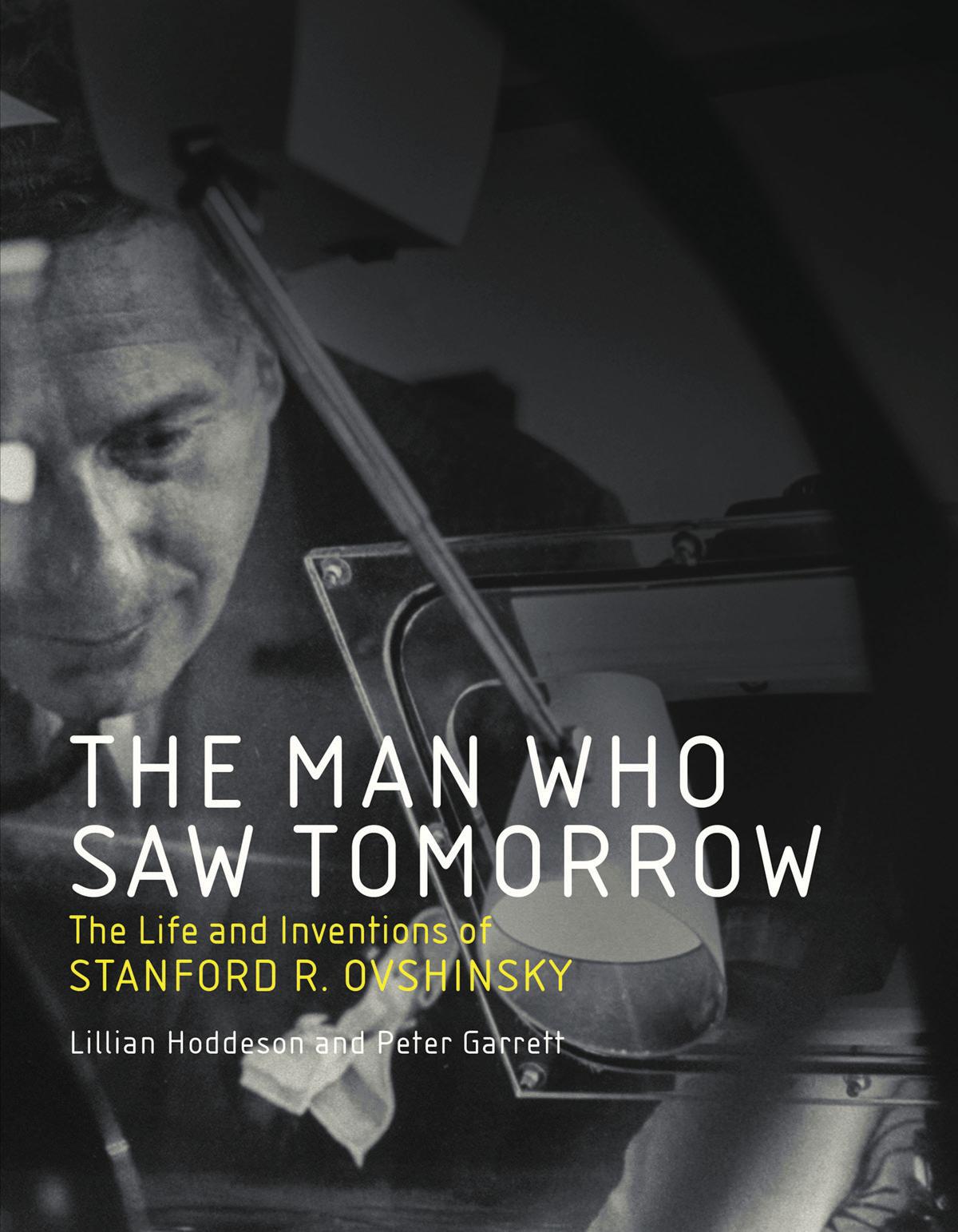
Lillian Hoddeson is Professor of History Emerita and Thomas Siebel Chair in the History of Science Emerita at the University of Illinois at Urbana–Champaign. She is the coauthor of True Genius: The Life and Science of John Bardeen and other books. Peter Garrett is Professor of English Emeritus and former Director of the Unit for Criticism and Theory at the University of Illinois at Urbana–Champaign. He is the author of Gothic Reflections and other books. ACADEMIC TRADE 76 SPRING 2018 | MITPRESS.MIT.EDU
architecture | urbanism
Site Planning
International Practice
Gary Hack
Cities are built site by site. Site planning—the art and science of designing settlements on the land—encompasses a range of activities undertaken by architects, planners, urban designers, landscape architects, and engineers. This book offers a comprehensive, up-to-date guide to site planning that is global in scope. It covers planning processes and standards, new technologies, sustainability, and cultural context, addressing the roles of all participants and stakeholders and offering extensive treatment of practices in rapidly urbanizing countries. Kevin Lynch and Gary Hack wrote the classic text on the subject, and this book takes up where the earlier book left off. It can be used as a textbook and will be an essential reference for practitioners.
Site Planning consists of forty self-contained modules, organized into five parts: The Art of Site Planning, which presents site planning as a shared enterprise; Understanding Sites, covering the components of site analysis; Planning Sites, covering the processes involved; Site Infrastructure, from transit to waste systems; and Site Prototypes, including housing, recreation, and mixed use. Each module offers a brief introduction, covers standards or approaches, provides examples, and presents innovative practices in sidebars. The book is lavishly illustrated with more than 1,300 photographs, diagrams, and examples of practice.
Gary Hack has studied, taught, and practiced site planning for more than forty years in the United States, Canada, and other countries. He is Professor Emeritus of Urban Design at MIT, where he headed the Department of Urban Studies and Planning, Professor Emeritus and former Dean of the School of Design at the University of Pennsylvania, and Visiting Professor at Tsinghua and Chongqing Universities.
A comprehensive, state-ofthe-art guide to site planning, covering planning processes, new technologies, and sustainability, with extensive treatment of practices in rapidly urbanizing countries.
April 9 x 11, 800 pp. 1,317 illus.
$80.00X/£66.95 paper 978-0-262-53485-7
$120.00X/£99.95 cloth 978-0-262-03738-9
Above: Rendering of proposed development of Anderson Road Quarry, Hong Kong. (Planning Department, Government of the Hong Kong Special Administrative Region).

Top right: MOMA linked hybrid housing complex, Beijing. (Courtesy of Stephen Holl Architects/© Shu He).

Bottom right: Conceptual rendering of site development, Santa Monica, California. From Site Planning

MITPRESS.MIT.EDU | SPRING 2018 PROFESSIONAL 77
ARCHITECTURE | URBANISM
art | media cognitive science
The Metainterface
The Art of Platforms, Cities, and Clouds
Christian Ulrik Andersen and Søren Bro Pold
Efficient Cognition
The Evolution of Representational Decision Making Armin W. Schulz
How the interface has moved from the PC into cultural platforms, as seen in a series of works of net art, software art and electronic literature.
The computer interface is both omnipresent and invisible, at once embedded in everyday objects and characterized by hidden exchanges of information between objects. The interface has moved from office into culture, with devices, apps, the cloud, and data streams as new cultural platforms. In The Metainterface, Christian Ulrik Andersen and Søren Bro Pold examine the relationships between art and interfaces, tracing the interface’s disruption of everyday cultural practices. They present a new interface paradigm of cloud services, smartphones, and data capture, and examine how particular art forms—including net art, software art, and electronic literature—seek to reflect and explore this paradigm.
Andersen and Pold argue that despite attempts to make the interface disappear into smooth access and smart interaction, it gradually resurfaces; there is a metainterface to the displaced interface. Art can help us see this; the interface can be an important outlet for aesthetic critique. Andersen and Pold describe the “semantic capitalism” of a metainterface industry that captures user behavior; the metainterface industry’s disruption of everyday urban life, changing how the city is read, inhabited, and organized; the ways that the material displacement of the cloud affects the experience of the interface; and the potential of designing with an awareness of the language and grammar of interfaces.
Christian Ulrik Andersen is Associate Professor in Digital Design at Aarhus University and works with aesthetics, software, and interface criticism. Søren Bro Pold is Associate Professor in Digital Design at Aarhus University and works with interface criticism, literature, and aesthetics.
June | 7 x 9, 240 pp. | 39 illus.
$30.00X/£24.95 cloth 978-0-262-03794-5
An argument that representational decision making is more cognitively efficient, allowing an organism to adjust more easily to changes in the environment.
Many organisms (including humans) make decisions by relying on mental representations. Not simply a reaction triggered by perception, representational decision making employs high-level, non-perceptual mental states with content to manage interactions with the environment. A person making a decision based on mental representations, for example, takes a step back from her perceptions at the time to assess the nature of the world she lives in. But why would organisms rely on representational decision making, and what evolutionary benefits does this reliance provide to the decision maker? In Efficient Cognition, Armin Schulz argues that representational decision making can be more cognitively efficient than non-representational decision making. Specifically, he shows that a key driver in the evolution of representational decision making is that mental representations can enable an organism to save cognitive resources and adjust more efficiently to changed environments.
After laying out the foundations of his argument—clarifying the central questions, the characterization of representational decision making, and the relevance of an evidential form of evolutionary psychology—Schulz presents his account of the evolution of representational decision making and critically considers some of the existing accounts of the subject. He then applies his account to three open questions concerning the nature of representational decision making: the extendedness of decision making, and when we should expect cognition to extend into the environment; the specialization of decision making and the use of simple heuristics; and the psychological sources of altruistic behaviors.
Armin W. Schulz is Associate Professor of Philosophy at the University of Kansas.
March | 6 x 9, 280 pp. | 9 illus.
$45.00S/£37.95 cloth 978-0-262-03760-0
SPRING 2018 | MITPRESS.MIT.EDU
78 ART | MEDIA COGNITIVE SCIENCE
cognitive science | psychology computer science
The Illusion of Conscious Will
NEW EDITION
Daniel M. Wegner foreword by Daniel Gilbert introduction by Thalia Wheatley
Data Stream Mining
with Practical Examples in MOA
Albert Bifet, Ricard Gavaldà, Geoff Holmes, and Bernhard Pfahringer
Do we consciously cause our actions, or do they happen to us? Philosophers, psychologists, neuroscientists, theologians, and lawyers have long debated the existence of free will versus determinism. With the publication of The Illusion of Conscious Will in 2002, Daniel Wegner proposed an innovative and provocative answer: the feeling of conscious will is created by the mind and brain; it helps us to appreciate and remember our authorship of the things our minds and bodies do. Yes, we feel that we consciously will our actions, Wegner says, but at the same time, our actions happen to us. Although conscious will is an illusion (“the most compelling illusion”), it serves as a guide to understanding ourselves and to developing a sense of responsibility and morality. Wegner was unable to undertake a second edition of the book before his death in 2013; this new edition adds a foreword by Wegner’s friend, the prominent psychologist Daniel Gilbert, and an introduction by Wegner’s colleague Thalia Wheatley.
A new edition of Wegner’s classic and controversial work, arguing that conscious will simply reminds of us the authorship of our actions.
Approaching conscious will as a topic of psychological study, Wegner examines cases both when people feel that they are willing an act that they are not doing and when they are not willing an act that they in fact are doing in such phenomena as hypnosis, Ouija board spelling, and dissociative identity disorder.
Wegner’s argument was immediately controversial (called “unwarranted impertinence” by one scholar) but also compelling. Engagingly written, with wit and clarity, The Illusion of Conscious Will was, as Daniel Gilbert writes in the foreword to this edition, Wegner’s “magnum opus.”
The late Daniel Wegner was Professor of Psychology at Harvard University.
February | 6 x 9, 432 pp. | 53 illus.
$30.00S/£24.95 paper
978-0-262-53492-5
A hands-on approach to tasks and techniques in data stream mining and real-time analytics, with examples in MOA, a popular freely available open-source software framework.
Today many information sources—including sensor networks, financial markets, social networks, and healthcare monitoring—are so-called data streams, arriving sequentially and at high speed. Analysis must take place in real time, with partial data and without the capacity to store the entire data set. This book presents algorithms and techniques used in data stream mining and real-time analytics. Taking a hands-on approach, the book demonstrates the techniques using MOA (Massive Online Analysis), a popular, freely available open-source software framework, allowing readers to try out the techniques after reading the explanations.
The book first offers a brief introduction to the topic, covering big data mining, basic methodologies for mining data streams, and a simple example of MOA. More detailed discussions follow, with chapters on sketching techniques, change, classification, ensemble methods, regression, clustering, and frequent pattern mining. Most of these chapters include exercises, an MOA-based lab session, or both. Finally, the book discusses the MOA software, covering the MOA graphical user interface, the command line, use of its API, and the development of new methods within MOA. The book will be an essential reference for readers who want to use data stream mining as a tool, researchers in innovation or data stream mining, and programmers who want to create new algorithms for MOA.
Albert Bifet is Associate Professor in Big Data at Télécom ParisTech. Ricard Gavaldà is Professor of Computer Science at the Politècnica de Catalunya, Barcelona. Geoff Holmes is Professor and Dean of Computing at the University of Waikato in Hamilton, New Zealand. Bernhard Pfahringer is Professor of Computer Science at the University of Auckland, New Zealand.
March | 7 x 9, 288 pp. | 21 color illus., 29 b&w illus. $55.00S/£45.95 cloth 978-0-262-03779-2
Adaptive Computation and Machine Learning series
MITPRESS.MIT.EDU | SPRING 2018
79 COGNITIVE SCIENCE COMPUTER SCIENCE
computer science computer science
How to Design Programs
An Introduction to Programming and Computing
SECOND EDITION
Matthias Felleisen, Robert Bruce Findler, Matthew Flatt, and Shriram Krishnamurthi
Distributed Algorithms
An Intuitive Approach
SECOND EDITION
Wan Fokkink
This introduction to programming places computer science at the core of a liberal arts education. Unlike other introductory books, it focuses on the program design process, presenting program design guidelines that show the reader how to analyze a problem statement, how to formulate concise goals, how to make up examples, how to develop an outline of the solution, how to finish the program, and how to test it. Because
A completely revised edition, offering new design recipes for interactive programs and support for images as plain values, testing, event-driven programming, and even distributed programming.
learning to design programs is about the study of principles and the acquisition of transferable skills, the text does not use an offthe-shelf industrial language but presents a tailor-made teaching language. For the same reason, it offers DrRacket, a programming environment for novices that supports playful, feedbackoriented learning. The environment grows with readers as they master the material in the book until it supports a full-fledged language for the whole spectrum of programming tasks.
This second edition has been completely revised. While the book continues to teach a systematic approach to program design, the second edition introduces different design recipes for interactive programs with graphical interfaces and batch programs. It also enriches its design recipes for functions with numerous new hints. Finally, the teaching languages and their IDE now come with support for images as plain values, testing, event-driven programming, and even distributed programming.
Matthias Felleisen is Trustee Professor in the College of Computer Science at Northeastern University. Robert Bruce Findler is Associate Professor of Computer Science at Northwestern University. Matthew Flatt is Professor in the School of Computing at the University of Utah. Shriram Krishnamurthi is Professor of Computer Science at Brown University.
February | 8 x 9, 792 pp. | 194 illus.
$60.00X/£49.95 paper 978-0-262-53480-2
The new edition of a guide to distributed algorithms that emphasizes examples and exercises rather than the intricacies of mathematical models.
This book offers students and researchers a guide to distributed algorithms that emphasizes examples and exercises rather than the intricacies of mathematical models. It avoids mathematical argumentation, often a stumbling block for students, teaching algorithmic thought rather than proofs and logic. This approach allows the student to learn a large number of algorithms within a relatively short span of time. Algorithms are explained through brief, informal descriptions, illuminating examples, and practical exercises. The examples and exercises allow readers to understand algorithms intuitively and from different perspectives. Proof sketches, arguing the correctness of an algorithm or explaining the idea behind fundamental results, are also included. The algorithms presented in the book are for the most part “classics,” selected because they shed light on the algorithmic design of distributed systems or on key issues in distributed computing and concurrent programming.
This second edition has been substantially revised. A new chapter on distributed transaction offers up-to-date treatment of database transactions and the important evolving area of transactional memory. A new chapter on security discusses two exciting new topics: blockchains and quantum cryptography. Sections have been added that cover such subjects as rollback recovery, fault-tolerant termination detection, and consensus for shared memory. An appendix offers pseudocode descriptions of many algorithms. Solutions and slides are available for instructors.
Distributed Algorithms can be used in courses for upper-level undergraduates or graduate students in computer science, or as a reference for researchers in the field.
Wan Fokkink is Professor of Theoretical Computer Science at the VU University, Amsterdam.
March | 8 x 9, 272 pp. | 103 illus. $48.00X/£39.95 cloth 978-0-262-03766-2
SPRING 2018 | MITPRESS.MIT.EDU
80 COMPUTER SCIENCE COMPUTER SCIENCE
computer science design
The Reasoned Schemer
SECOND EDITION
Daniel P. Friedman, William E. Byrd, Oleg Kiselyov, and Jason Hemann foreword by Guy Lewis Steele Jr. and Gerald Jay Sussman afterword by Robert A. Kowalski drawings by Duane Bibby
Critical Fabulations
Reworking the Methods and Margins of Design Daniela K. Rosner
A new edition of a book, written in a humorous question-and-answer style, that shows how to implement and use an elegant little programming language for logic programming.
The goal of this book is to show the beauty and elegance of relational programming, which captures the essence of logic programming. The book shows how to implement a relational programming language in Scheme, or in any other functional language, and demonstrates the remarkable flexibility of the resulting relational programs. As in the first edition, the pedagogical method is a series of questions and answers, which proceed with the characteristic humor that marked The Little Schemer and The Seasoned Schemer. Familiarity with a functional language or with the first five chapters of The Little Schemer is assumed.
For this second edition, the authors have greatly simplified the programming language used in the book, as well as the implementation of the language. In addition to revising the text extensively, and simplifying and revising the “Laws” and “Commandments,” they have added explicit “Translation” rules to ease translation of Scheme functions into relations.
Daniel P. Friedman is Professor of Computer Science in the School of Informatics, Computing, and Engineering at Indiana University and is the author of many books published by the MIT Press, including The Little Schemer; The Seasoned Schemer; A Little Java, A Few Patterns (each of these coauthored with Matthias Felleisen); and The Little Prover (coauthored with Carl Eastlund). William E. Byrd is a scientist in the Department of Computer Science at the University of Alabama at Birmingham. Oleg Kiselyov is an Assistant Professor in the Graduate School of Information Sciences at Tohoku University, Japan. Jason Hemann is a PhD candidate in the School of Informatics, Computing, and Engineering at Indiana University.
March | 7 x 9, 208 pp. | 13 illus.
$30.00X/£24.95 paper 978-0-262-53551-9
A proposal to redefine design in a way that not only challenges the field’s dominant paradigms but also changes the practice of design itself.
In Critical Fabulations, Daniela Rosner proposes redefining design as investigative and activist, personal and culturally situated, responsive and responsible. Challenging the field’s dominant paradigms and reinterpreting its history, Rosner wants to change the way we historicize the practice, reworking it from the inside. Focusing on the development of computational systems, she takes on powerful narratives of innovation and technology shaped by the professional expertise that has become integral to the field’s mounting status within the new industrial economy. To do so, she intervenes in legacies of design, expanding what is considered “design” to include long-silenced narratives of practice, and enhancing existing design methodologies based on these rediscovered inheritances. Drawing on discourses of feminist technoscience, she examines craftwork’s contributions to computing innovation—how craftwork becomes hardware manufacturing, and how hardware manufacturing becomes craftwork. She reclaims, for example, NASA’s “Little Old Ladies,” the women who built information storage for the Apollo missions by weaving wires through magnetized metal rings.
Mixing history, theory, personal experience, and case studies, Rosner reweaves fibers of technoscience by slowly reworking the methods and margins of design. She suggests critical fabulations as ways of telling stories that awaken alternative histories, and offers a set of techniques and orientations for fabulating its future. Critical Fabulations shows how design’s hidden inheritances open different possibilities for practice.
Daniela K. Rosner is Assistant Professor in Human Centered Design and Engineering (HCDE) at the University of Washington, where she codirects HCDE’s Tactile and Tactical Design Lab.
June | 7 x 9, 216 pp. | 37 illus. $35.00S/£27.95 cloth 978-0-262-03789-1
Design Thinking, Design Theory series
MITPRESS.MIT.EDU | SPRING 2018
81 COMPUTER SCIENCE DESIGN
A new approach to interaction design that moves beyond representation and metaphor to focus on the material manifestations of interaction.
March 6 x 9, 208 pp. 32 illus.
$35.00S/£27.95 cloth 978-0-262-03751-8
design | computer-human interaction
The Materiality of Interaction
Notes on the Materials of Interaction Design Mikael Wiberg
Smart watches, smart cars, the Internet of things, 3D printing: all signal a trend toward combining digital and analog materials in design. Interaction with these new hybrid forms is increasingly mediated through physical materials, and therefore interaction design is increasingly a material concern. In this book, Mikael Wiberg describes the shift in interaction design toward material interactions. He argues that the “material turn” in human-computer interaction has moved beyond a representationdriven paradigm, and he proposes “material-centered interaction design” as a new approach to interaction design and its materials. He calls for interaction design to abandon its narrow focus on what the computer can do and embrace a broader view of interaction design as a practice of imagining and designing interaction through material manifestations. A material-centered approach to interaction design enables a fundamental design method for working across digital, physical, and even immaterial materials in interaction design projects.
Wiberg looks at the history of material configurations in computing and traces the shift from metaphors in the design of graphical user interfaces to materiality in tangible user interfaces. He examines interaction through a material lens; suggests a new method and foundation for interaction design that accepts the digital as a design material and focuses on interaction itself as the form being designed; considers design across substrates; introduces the idea of “interactive compositions”; and argues that the focus on materiality transcends any distinction between the physical and digital.
Mikael Wiberg is Professor of Informatics and Associate Dean
the Faculty of Social Sciences at Umeå University, Sweden.
SPRING 2018 | MITPRESS.MIT.EDU 82
of
DESIGN CONTENTS 1 Representations 2 The Material Turn 3 The Materiality of Interaction 4 Material-Centered Interaction Design 5 Designing Across Substrates 6 Interactive Compositions 7 A New Materiality 8 Moving Forward
design | human-computer interaction economics
Critical Theory and Interaction Design
edited by Jeffrey Bardzell, Shaowen Bardzell, and Mark Blythe
Market Design
Auctions and Matching Guillaume Haeringer
Why should interaction designers read critical theory? Critical theory is proving unexpectedly relevant to media and technology studies. The editors of this volume argue that reading critical theory—understood in the broadest sense, including but not limited to the Frankfurt School—can help designers do what they want to do; can teach wisdom itself; can provoke; and can introduce new ways of seeing. They illustrate their argument by presenting classic texts by thinkers in critical theory from Althusser to Žižek alongside essays in which leaders in interaction design and HCI describe the influence of the text on their work. For example, one contributor considers the relevance of Umberto Eco’s “Openness, Information, Communication” to digital content; another reads Walter Benjamin’s “The Author as Producer” in terms of interface designers; and another reflects on the implications of Judith Butler’s Gender Trouble for interaction design. The editors offer a substantive introduction that traces the various strands of critical theory.
Classic texts by thinkers from Althusser to Žižek alongside essays by leaders in interaction design and HCI show the relevance of critical theory to interaction design.
Taken together, the essays show how critical theory and interaction design can inform each other, and how interaction design, drawing on critical theory, might contribute to our deepest needs for connection, competency, self-esteem, and wellbeing.
Jeffrey Bardzell is Professor of Informatics in the School of Informatics and Computing at Indiana University Bloomington. Shaowen Bardzell is Associate Professor of Human-Computer Interaction Design in the School of Informatics and Computing at Indiana University Bloomington. Mark Blythe is Professor of Interdisciplinary Design at Northumbria University.
June | 7 x 9, 872 pp. | 20 illus.
$60.00S cloth 978-0-262-03798-3
For Sale in USA and Canada only
A broad overview of market mechanisms, with an emphasis on the interplay between theory and real-life applications; examples range from eBay auctions to school choice.
This book offers an introduction to market design, providing students with a broad overview of issues related to the design and analysis of market mechanisms. It defines a market as a demand and a supply, without specifying a price system or mechanism. This allows the text to analyze a broad set of situations—including such unconventional markets as college admissions and organ donation—and forces readers to pay attention to details that might otherwise be overlooked. Students often complain that microeconomics is too abstract and disconnected from reality; the study of market design shows how theory can help solve existing, real-life problems. The book focuses on the interplay between theory and applications. To keep the text as accessible as possible, special effort has been made to minimize formal description of the models while emphasizing the intuitive, with detailed explanations and resolution of examples. Appendixes offer general reviews of elements of game theory and mechanism design that are related to the themes explored in the book, presenting the basic concepts with as many explanations and illustrations as possible.
The book covers topics including the basics of simple auctions; eBay auctions; Vickrey–Clarke–Groves auctions; keyword auctions, with examples from Google and Facebook; spectrum auctions; financial markets, with discussions of treasury auctions and IPOs; trading on the stock market; the basic matching model; medical match; assignment problems; probabilistic assignments; school choice; course allocation, with examples from Harvard and Wharton; and kidney exchange.
Guillaume Haeringer is Professor of Economics at the Zicklin School of Business at Baruch College.
March | 7 x 9, 392 pp. | 6 illus.
$80.00X/£66.95 cloth 978-0-262-03754-9
MITPRESS.MIT.EDU | SPRING 2018
83 DESIGN ECONOMICS
Developments in Global Sourcing
edited by Wilhelm Kohler and Erdal Yalcin
Comparative Economics in a Transforming World Economy
THIRD EDITION
J. Barkley Rosser, Jr., and Marina V. Rosser
Theoretical and empirical perspectives on the fragmentation of production processes across borders, shedding light on global sourcing decisions and their economic effects.
Recent decades have seen a fragmentation of production processes across borders, as firms find it increasingly profitable to organize production on a global scale. This fragmentation occurs across national borders as well as across firm boundaries; companies must decide not only the location of production but also how much control to exert over the different production stages. Economists have responded to this shift by developing new models of global sourcing, generating important insights into the driving forces and economic effects of this new form of globalization. Many questions, however, remain unanswered. This book tries to fill this gap.
The contributors ask new questions or offer new modeling approaches to fragmentation of production, focusing in particular on time and uncertainty. They examine global sourcing in firms’ multinationalization strategies, including offshoring, product scope, managerial incentives, supplier search, and contractual issues; and explore the interactions of global sourcing, exports, and economic development, investigating such topics as the complementarity of offshoring and exporting, product diversification, and the relationship between vertical linkages and development.
Contributors
Pol Antràs, Sasan Bakhtiari, Sebastian Benz, Giuseppe Berlingieri, Johannes Boehm, Jeronimo Carballo, Huiya Chen, Alejandro Cuñat, Fabrice Defever, Swati Dhingra, Harald Fadinger, Ana P. Fernandes, Christian Fischer, Wilhelm Kohler, Bohdan Kukharskyy, Luca Marcolin, Antonio Minniti, John Morrow, Alireza Naghavi, Han (Steffan) Qi, Jens Suedekum, Deborah L. Swenson,, Edwin L.-C. Lai, Anders Rosenstand Laugesen, Ngo Van Long, Heiwai Tang, Erdal Yalcin
March | 6 x 9, 400 pp. | 24 illus. $40.00X/£32.95 cloth 978-0-262-03757-0
An approach to comparative economic systems that avoids simple dichotomies to examine a wide variety of institutional and systemic arrangements, with updated country case studies.
Comparative economics, with its traditional dichotomies of socialism versus capitalism, private versus state, and planning versus market, is changing. This innovative textbook offers a new approach to understanding different economic systems that reflects both recent transformations in the world economy and recent changes in the field. This new edition examines a wide variety of institutional and systemic arrangements, many of which reflect deep roots in countries’ cultures and histories.
The book has been updated and revised throughout, with new material in both the historical overview and the country case studies. It offers a broad survey of economic systems, then looks separately at market capitalism, Marxism and socialism, and “new traditional economies” (with an emphasis on the role of religions, Islam in particular, in economic systems). It presents case studies of advanced capitalist nations, including the United States, Japan, Sweden, and Germany; alternative paths in the transition from socialist to market economies taken by such countries as Russia, the former Soviet republics, Poland, China, and the two Koreas; and developing countries, including India, Iran, South Africa, Mexico, and Brazil. The new chapters on Brazil and South Africa complete the book’s coverage of all five BRICS nations; the chapter on South Africa extends the book’s comparative treatment to another continent. The chapter on Brazil with its account of the role of the Amazon rain forest as a great carbon sink expands the coverage of global environmental and sustainability issues. Each chapter ends with discussion questions.
J. Barkley Rosser, Jr., and Marina V. Rosser are Professors of Economics at James Madison University.
March | 7 x 9, 736 pp. | 27 illus.
$125.00X/£104.95 cloth 978-0-262-03733-4
SPRING 2018 | MITPRESS.MIT.EDU
Wilhelm Kohler is Professor of International Economics at Enerhard Karis University Tuebingen. Erdal Yalcin is Deputy Director of the ifo Center for International Economics.
CESifo Seminar Series
economics economics
84 ECONOMICS ECONOMICS
When Things Don’t Fall Apart
Global Financial Governance and Developmental Finance in an Age of Productive Incoherence Ilene Grabel foreword
by Dani Rodrik
Israel and the World Economy
The Power of Globalization Assaf Razin
In When Things Don’t Fall Apart, Ilene Grabel challenges the dominant view that the global financial crisis had little effect on global financial governance and developmental finance. Most observers discount all but grand, systemic ruptures in institutions and policy. Grabel argues instead that the global crisis induced inconsistent and ad hoc discontinuities in global financial governance and developmental finance that are now having profound effects on emerging market and developing economies. Grabel’s chief normative claim is that the resulting incoherence in global financial governance is productive rather than debilitating. In the age of productive incoherence, a more complex, dense, fragmented, and pluripolar form of global financial governance is expanding possibilities for policy and institutional experimentation, policy space for economic and human development, financial stability and resilience, and financial inclusion. Grabel draws on key theoretical commitments of Albert Hirschman to cement the case for the productivity of incoherence. Inspired by Hirschman, Grabel demonstrates that meaningful change often emerges from disconnected, erratic, experimental, and inconsistent adjustments in institutions and policies as actors pragmatically manage in an evolving world.
An account of the significant though gradual, uneven, disconnected, ad hoc, and pragmatic innovations in global financial governance and developmental finance induced by the global financial crisis.
Grabel substantiates her claims with empirically rich case studies that explore the effects of recent crises on networks of financial governance (such as the G-20); transformations within the IMF; institutional innovations in liquidity support and project finance from the national to the transregional levels; and the “rebranding” of capital controls. Grabel concludes with a careful examination of the opportunities and risks associated with the evolutionary transformations underway.
February | 6 x 9, 392 pp.
$35.00X/£27.95 cloth 978-0-262-03725-9
A rigorous analysis of the role played by globalization in key episodes in the development of the Israeli economy, from hyperinflation crisis to high-tech surge.
Anti-globalization sentiments are rising, especially in Europe and the United States, with the increasingly integrated global economy blamed for domestic economic distress. In this book, Assaf Razin argues that Israel offers a counterexample to this view, showing decisively positive economic effects of globalized finance, trade, and immigration. He offers a rigorous analysis of the role played by globalization in key episodes in the remarkable development of the Israeli economy. His findings may hold lessons for productivitychallenged advanced economies as well as for other countries such as China currently making the transition to fully developed economies.
Razin examines the wave of immigration after the collapse of the Soviet Union, as highly skilled Soviet Jews migrated to Israel and the effect on income inequality; the Great Moderation of inflation and employment in advanced economies, as Israel’s inflation converged in parallel with low world inflation rates; Israel’s robustness in the face of the deflation shocks of the 2008 financial crisis; and technology transmission through foreign direct investment, reinforcing Israel’s high-tech sector surge. He also considers such ongoing challenges as high fertility and low labor market participation and the economic costs of the Israeli-Palestinian conflict.
Assaf Razin is a former Professor at Cornell University, Emeritus Professor at the Eitan Berglas School of Economics at Tel Aviv University, and Research Fellow at the NBER, CEPR, and CESifo. He is the author of Understanding Global Crises: An Emerging Paradigm and a coauthor of, among other books, The Decline of the Welfare State: Demography and Globalization and Migration and the Welfare State: Political-Economy Policy Formation, all published by the MIT Press. He is the recipient of the 2017 EMET Prize in Economics.
February | 6 x 9, 232 pp. | 36 illus. $40.00X/£32.95 cloth 978-0-262-03734-1
MITPRESS.MIT.EDU | SPRING 2018
economics | finance economics | international development
Ilene Grabel is Professor of International Finance at the Josef Korbel School of International Studies at the University of Denver.
PROFESSIONAL 85 ECONOMICS ECONOMICS
economics | international policy education | game studies
Globalizing Innovation
State Institutions and Foreign Direct Investment in Emerging Economies
Patrick Egan
In the past, multinational firms have looked to developing countries as sources of raw materials, markets, or production efficiencies, but rarely as locations for innovation.
The impact of host country institutions and policy on innovation by multinational firms in emerging economies.
Today, however, R&D facilities and other indicators of multinational-linked innovation are becoming more common in emerging economies. In this book, Patrick Egan investigates patterns of inward foreign direct investment (FDI) in developing countries, considering the impact of host country institutions and policy on the innovative activities undertaken by multinational firms. He examines the uneven spread of innovation-intensive foreign direct investment and emerging sectoral distributions, then develops a number of arguments about the determinants of multinational innovation in developing countries. Firms are attracted by a country’s supply of skilled labor and are often eager to innovate close to new markets; but, Egan finds, host country institutions and the configuration of the host country’s investment policies have a strong impact on firm decisions and evolving country investment profiles.
Egan uses econometric analysis to identify determinants of multinational innovation, and examines differences among state institutions as a key variable. He then offers a detailed case study, assessing Ireland’s attempts to use foreign direct investment in innovation as a catalyst for development. While FDI is a potential vehicle for industrial upgrading, Egan cautions, it is neither necessary nor sufficient for development. Furthermore, innovation-intensive investments are not likely to develop linkages with local actors or otherwise embed themselves in host economies in the absence of active, discriminating policies channeled through coherent and coordinated institutions.
February | 6 x 9, 312 pp. | 23 illus.
$35.00S/£27.95 cloth 978-0-262-03735-8
Resonant Games
Design Principles for Learning Games that Connect Hearts, Minds, and the Everyday Eric Klopfer, Jason Haas, Scot Osterweil, and Louisa Rosenheck foreword by Colleen Macklin
Too often educational videogames are narrowly focused on specific learning outcomes dictated by school curricula and fail to engage young learners. This book suggests another approach, offering a guide to designing games that integrates content and play and creates learning experiences that connect to many areas of learners’ lives. These games are not gamified workbooks but are embedded in a long-form experience of exploration, discovery, and collaboration that takes into consideration the learning environment. Resonant Games describes twenty essential principles for designing games that offer this kind of deeper learning experience, presenting them in connection with five games or collections of games developed at MIT’s educational game research lab, the Education Arcade. Each of the games—which range from Vanished, an alternate reality game for middle schoolers promoting STEM careers, to Ubiquitous Bio, a series of casual mobile games for high school biology students—has a different story, but all spring from these fundamental assumptions: honor the whole learner, as a full human being, not an empty vessel awaiting a fill-up; honor the sociality of learning and play; honor a deep connection between the content and the game; and honor the learning context—most often the public school classroom, but also beyond the classroom.
Principles for designing educational games that integrate content and play and create learning experiences connecting to many areas of learners’ lives.
Eric Klopfer is Professor and Director of the Scheller Teacher Education Program and the Education Arcade at MIT. Jason Haas is a game designer and Research Assistant at the MIT Media Lab and the Education Arcade. Scot Osterweil is a game designer and Creative Director at the Education Arcade. Louisa Rosenheck is an ed tech designer and Research Manager at the Education Arcade.
May | 6 x 9, 256 pp. | 63 illus.
$40.00S/£32.95 cloth 978-0-262-03780-8
The John D. and Catherine T. MacArthur Foundation Series on Digital Media and Learning
SPRING 2018 | MITPRESS.MIT.EDU
Patrick Egan is Assistant Professor of Political Science at Tulane University.
86 ECONOMICS EDUCATION
economics | political science
The Chinese Economy
Adaptation and Growth
SECOND EDITION
Barry Naughton
This comprehensive overview of the modern Chinese economy by a noted expert on China’s economic development offers a quality and breadth of coverage not found in any other English-language text. In The Chinese Economy, Barry Naughton provides both a broadly focused introduction to China’s economy since 1949 and original insights based on his own extensive research. This second edition has been thoroughly revised to reflect a decade of developments in China’s economy, notably the end of the period of “miracle growth” and the multiple transitions it now confronts—demographic, technological, macroeconomic, and institutional. Coverage of macroeconomic and financial policy has been significantly expanded.
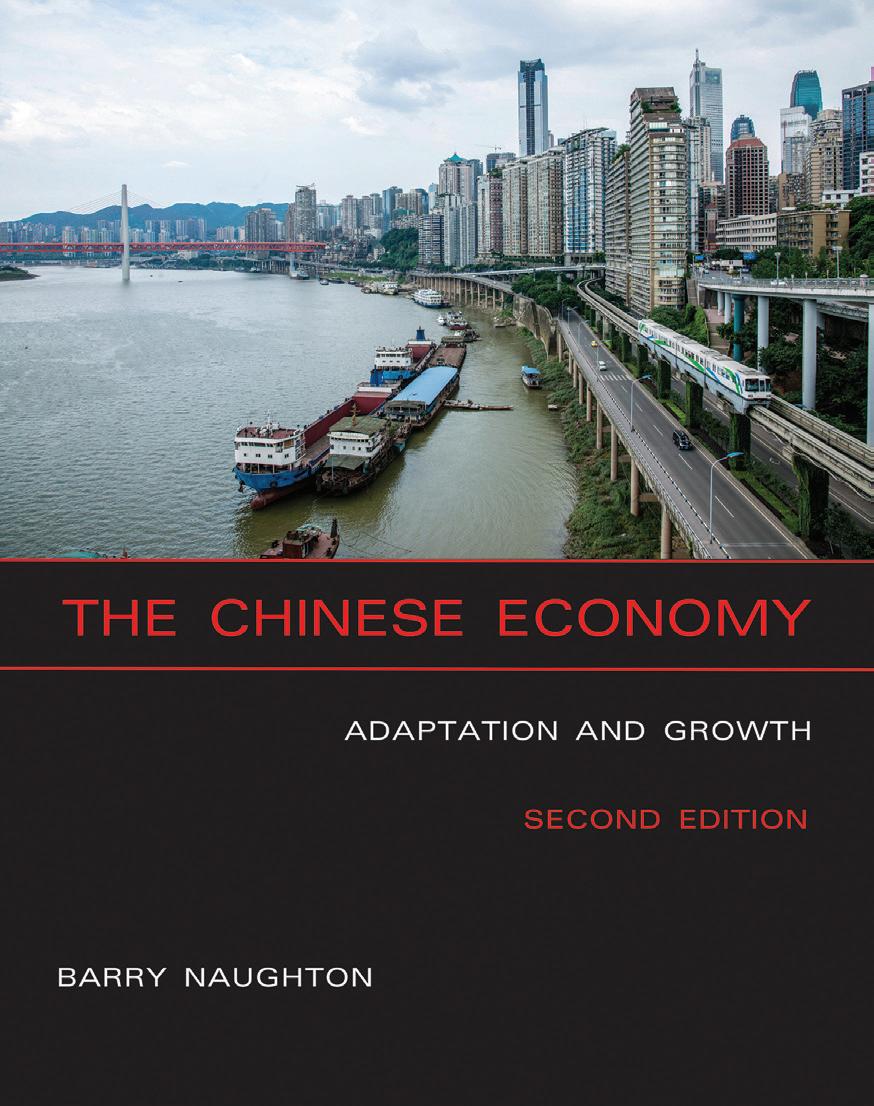
After covering endowments, legacies, economic systems, and general issues of economic structure, labor, and living standards, the book examines specific economic sectors, including agriculture, industry, technology, and foreign trade and investment. It then treats financial, macroeconomic, and environmental issues. The book covers such topics as patterns of growth and development, including population growth and the one-child family policy; the rural and urban economies, including rural industrialization and urban technological development; incoming and outgoing foreign investment; and environmental quality and the sustainability of growth.
The book will be an essential resource for students, teachers, scholars, business practitioners, and policymakers. It is suitable for classroom use for undergraduate or graduate courses.
Barry Naughton is Sokwanlok Chair of Chinese International Affairs in the School of Global Policy and Strategy at the University of California, San Diego. He is the editor of Wu Jinglian: Voice of Reform in China (MIT Press).
“The first edition of The Chinese Economy by Barry Naughton was essential, and I used it in my classes for years. The new edition is even better, up-to-date and with more comprehensive coverage. It is essentially a collection of twenty descriptive essays about parts of the Chinese economy that can be used separately, and that together provide a complete and integrated view of the Chinese economy.”
—Yingyi Qian, Dean and Professor, School of Economics and Management, Tsinghua University
The new edition of a comprehensive overview of the modern Chinese economy, revised to reflect the end of the “miracle growth” period.
February 7 x 9, 576 pp. 72 illus. $40.00X/£32.95 paper 978-0-262-53479-6
MITPRESS.MIT.EDU | SPRING 2018 ECONOMICS 87
energy | environment | political science environment
Renewables
The Politics of a Global Energy Transition
Michaël Aklin and Johannes Urpelainen
Planetary Improvement
Cleantech Entrepreneurship and the Contradictions of Green Capitalism
Jesse Goldstein
A comprehensive political analysis of the rapid growth in renewable wind and solar power, mapping an energy transition through theory, case studies, and policy.
Wind and solar are the most dynamic components of the global power sector. How did this happen? After the 1973 oil crisis, the limitations of an energy system based on fossil fuels created an urgent need to experiment with alternatives, and some pioneering governments reaped political gains by investing heavily in alternative energy such as wind or solar power.
Public policy enabled growth over time, and economies of scale brought down costs dramatically. In this book, Michaël Aklin and Johannes Urpelainen offer a comprehensive political analysis of the rapid growth in renewable wind and solar power, mapping an energy transition through theory, case studies, and policy analysis.
Aklin and Urpelainen argue that, because the fossil fuel energy system and political support for it are so entrenched, only an external shock—an abrupt rise in oil prices, or a nuclear power accident, for example—allows renewable energy to grow. They analyze the key factors that enable renewable energy to withstand political backlash, and, based on this, they explain and predict the development of renewable energy in different countries over time. They examine the pioneering efforts in the United States, Germany, and Denmark after the 1973 oil crisis and other shocks; explain why the United States surrendered its leadership role in renewable energy; and trace the recent rapid growth of modern renewables in electricity generation.
Michaël Aklin is Assistant Professor at the University of Pittsburgh. Johannes Urpelainen is Prince Sultan Bin Abdulaziz Professor of Energy, Resources and Environment in the School of Advanced International Studies at Johns Hopkins University.
April | 6 x 9, 336 pp. | 12 illus.
$35.00S/£27.95 paper 978-0-262-53494-9
$95.00X/£79.95 cloth 978-0-262-03747-1
An examination of clean technology entrepreneurship finds that “green capitalism” is more capitalist than green.
Entrepreneurs and investors in the green economy have encouraged a vision of addressing climate change with new technologies. In Planetary Improvement, Jesse Goldstein examines the cleantech entrepreneurial community in order to understand the limitations of environmental transformation within a capitalist system. Reporting on a series of investment pitches by cleantech entrepreneurs in New York City, Goldstein describes investor-friendly visions of incremental improvements to the industrial status quo that are hardly transformational. He explores a new “green spirit of capitalism,” a discourse of planetary improvement, that aims to “save the planet” by looking for “non-disruptive disruptions,” technologies that deliver “solutions” without changing much of what causes the underlying problems in the first place.
Goldstein charts the rise of business environmentalism over the last half of the twentieth century and examines cleantech’s unspoken assumptions of continuing cheap and abundant energy. Recounting the sometimes conflicting motivations of cleantech entrepreneurs and investors, he argues that the cleantech innovation ecosystem and its Schumpetarian dynamic of creative destruction are built around attempts to control creativity by demanding that transformational aspirations give way to short-term financial concerns. As a result, capitalist imperatives capture and stifle visions of sociotechnical possibility and transformation. Finally, he calls for a green spirit that goes beyond capitalism, in which sociotechnical experimentation is able to break free from the narrow bonds and relative privilege of cleantech entrepreneurs and the investors that control their fate.
Jesse Goldstein is Assistant Professor in the Department of Sociology at Virginia Commonwealth University.
April | 6 x 9, 224 pp.
$25.00S/£19.95 paper 978-0-262-53507-6
$90.00X/£74.95 cloth 978-0-262-03782-2
SPRING 2018 | MITPRESS.MIT.EDU
PROFESSIONAL 88 ENERGY ENVIRONMENT
environment | political science environment
Global Climate Change in an International
Context
edited by Urs Luterbacher and Detlef F. Sprinz
Can We Price Carbon?
Barry G. Rabe
The current international climate change regime has a long history, and it is likely that its evolution will continue, despite such recent setbacks as the decision by President Donald Trump to withdraw the United States from the Paris Agreement of 2015. Indeed, the U.S. withdrawal may spur efforts by other members of the international community to strengthen the Paris accord on their own.
Analyses of the international climate change regime consider the challenges of maintaining current structures and the possibilities for creating new forms of international cooperation.
This volume offers an original contribution to the study of the international political context of climate change over the last three decades, with fresh analyses of the current international climate change regime that consider both the challenges of maintaining current structures and the possibilities for creating new forms of international cooperation.
The contributors are leading experts with both academic and policy experience; some are advisors to governments and the Climate Secretariat itself. Their contributions combine substantive evidence with methodological rigor. They discuss such topics as the evolution of the architecture of the climate change regime; different theoretical perspectives; game-theoretical and computer simulation approaches to modeling outcomes and assessing agreements; coordination with other legal regimes; non-state actors; developing and emerging countries; implementation, compliance, and effectiveness of agreements; and the challenges of climate change mitigation after the Paris Agreement.
Urs Luterbacher is Professor Emeritus at the Centre for Environmental Studies and the Centre for Finance and Development at the Graduate Institute of International and Development Studies, Geneva. Detlef F. Sprinz is Professor at Potsdam Institute for Climate Impact Research and the University of Potsdam.
April | 6 x 9, 368 pp. | 9 illus.
$40.00S/£32.95 paper 978-0-262-53534-2
$90.00X/£74.95 cloth 978-0-262-03792-1
Global Environmental Accord: Strategies for Sustainability and Institutional Innovation series
A political science analysis of the feasibility and sustainability of carbon pricing, drawing from North American, European, and Asian case studies.
Climate change, economists generally agree, is best addressed by putting a price on the carbon content of fossil fuels—by taxing carbon, by cap-and-trade systems, or other methods. But what about the politics of carbon pricing? Do political realities render carbon pricing impracticable? In this book, Barry Rabe offers the first major political science analysis of the feasibility and sustainability of carbon pricing, drawing upon a series of real-world attempts to price carbon over the last two decades in North America, Europe, and Asia.
Rabe asks whether these policies have proven politically viable and, if adopted, whether they survive political shifts and managerial challenges over time. The entire policy life cycle is examined, from adoption through advanced implementation, on a range of pricing policies including not only carbon taxes and cap-and-trade but also such alternative methods as taxing fossil fuel extraction. These case studies, Rabe argues, show that despite the considerable political difficulties, carbon pricing can be both feasible and durable.
Barry G. Rabe is J. Ira and Nicki Harris Family Professor of Public Policy and Arthur F. Thurnau Professor of Environmental Policy at the University of Michigan, where his primary appointment is in the Gerald R. Ford School of Public Policy. He also directs the Center for Local, State, and Urban Policy at the Ford School and is a NonResident Senior Fellow at the Brookings Institution.
March | 6 x 9, 376 pp. | 9 illus.
$30.00S/£24.95 paper 978-0-262-53536-6
$90.00X/£74.95 cloth 978-0-262-03795-2
American and Comparative Environmental Policy series
MITPRESS.MIT.EDU | SPRING 2018
89 ENVIRONMENT ENVIRONMENT
A comprehensive textbook that integrates tools from technology, economics, markets, and policy to approach energy issues using a dynamic systems and capital-centric perspective. May 8 x 10, 1,168 pp. 382 illus.
$90.00X/£74.95 cloth 978-0-262-03752-5
The Energy System
Technology, Economics, Markets, and Policy Travis
Bradford
The global energy system is the vital foundation of modern human industrial society. Traditionally studied through separate disciplines of engineering, economics, environment, or public policy, this system can be fully understood only by using an approach that integrates these tools. This textbook is the first to take a dynamic systems perspective on understanding energy systems, tracking energy from primary resource to final energy services through a long and capital-intensive supply chain bounded by both macroeconomic and natural resource systems.
The book begins with a framework for understanding how energy is transformed as it moves through the system with the aid of various types of capital, its movement influenced by a combination of the technical, market, and policy conditions at the time. It then examines the three primary energy subsystems of electricity, transportation, and thermal energy, explaining such relevant topics as systems thinking, cost estimation, capital formation, market design, and policy tools. Finally, the book reintegrates these subsystems and looks at their relation to the economic system and the ecosystem that they inhabit. Practitioners and theorists from any field will benefit from a deeper understanding of both existing dynamic energy system processes and potential tools for intervention.
Travis Bradford is a Professor of Professional Practice at Columbia University and former head of the energy and environment graduate program at the School of International and Public Affairs. He teaches and develops curriculum for hundreds of graduate students every year across the policy, business, sustainability, and engineering schools. He is the author of Solar Revolution: The Economic Transformation of the Global Energy Industry, founder and President of Prometheus Institute, and advisor to many public and private entities on energy and business strategy.

SPRING 2018 | MITPRESS.MIT.EDU ENVIRONMENT 90
environment
| business
Reassembling Rubbish
Worlding Electronic Waste
Josh Lepawsky
Convergent Evolution in Stone-Tool Technology
edited by Michael J. O’Brien, Briggs Buchanan, and Metin I.
Eren
An examination of the global trade and traffic in discarded electronics that reframes the question of the “right” thing to do with e-waste.
The prevailing storyline about the problem of electronic waste frames e-waste as generated by consumers in developed countries and dumped on people and places in developing countries. In Reassembling Rubbish, Josh Lepawski offers a different view. In an innovative analysis of the global trade and traffic in discarded electronics, Lepawsky reframes the question of the “right” thing to do with e-waste, mapping the complex flows of electronic materials. He counters the assumption that e-waste is a post-consumer problem, pointing out that waste occurs at all stages of electronic materials’ existence, and calls attention to the under-researched world of reuse and repair.
Lepawsky explains that there are conflicting legal distinctions between electronic waste and non-waste, and examines a legal case that illustrates the consequences. He shows that patterns of trade do not support the dominant narrative of e-waste dumping but rather represent the dynamic ecologies of repair, refurbishment, and materials recovery. He asks how we know waste, how we measure it, and how we construe it, and how this affects our efforts to mitigate it. We might not put so much faith in household recycling if we counted the more massive amounts of pre-consumer electronic waste as official ewaste. Lepawsky charts the “minescapes,” “productionscapes,” and “clickscapes” of electronics, and the uneven “discardscapes” they produce. Finally, he considers both conventional and unconventional e-waste solutions, including decriminalizing export for reuse, repair, and upgrade; enabling ethical trade in electronics reuse, repair, refurbishment, and recycling; implementing extended producer responsibility; and instituting robust forms of public oversight.
Josh Lepawsky is Associate Professor in the Department of Geography at Memorial University of Newfoundland.
April | 6 x 9, 216 pp. | 25 illus.
$32.00S/£26.95 paper 978-0-262-53533-5
$96.00X/£79.95 cloth 978-0-262-03788-4
Scholars from a variety of disciplines consider cases of convergence in lithic technology, when functional or developmental constraints result in similar forms in independent lineages.
Hominins began using stone tools at least 2.6 million years ago, perhaps even 3.4 million years ago. Given the nearly ubiquitous use of stone tools by humans and their ancestors, the study of lithic technology offers an important line of inquiry into questions of evolution and behavior. This book examines convergence in stone tool-making, cases in which functional or developmental constraints result in similar forms in independent lineages. Identifying examples of convergence, and distinguishing convergence from divergence, refutes hypotheses that suggest physical or cultural connection between far-flung prehistoric toolmakers. Employing phylogenetic analysis and stone-tool replication, the contributors show that similarity of tools can be caused by such common constraints as the fracture properties of stone or adaptive challenges rather than such unlikely phenomena as migration of toolmakers over an Arctic ice shelf.
Michael J. O’Brien is Provost and Professor of History at Texas A&M University–San Antonio and the coauthor of The Acceleration of Cultural Change: From Ancestors to Algorithms (MIT Press). He was previously Professor of Anthropology and Dean of Arts and Sciences at the University of Missouri. Briggs Buchanan is Assistant Professor of Anthropology at the University of Tulsa. Metin I. Eren is Assistant Professor of Anthropology and Director of Archaeology at Kent State University.
Contributors
R. Alexander Bentley, Briggs Buchanan, Marcelo Cardillo, Mathieu Charbonneau, Judith Charlin, Chris Clarkson, Loren G. Davis, Metin I. Eren, Peter Hiscock, Thomas A. Jennings, Steven L. Kuhn, Daniel E. Lieberman, George R. McGhee, Alex Mackay, Michael J. O’Brien, Charlotte D. Pevny, Ceri Shipton, Ashley M. Smallwood, Heather Smith, Jayne Wilkins, Samuel C. Willis, Nicolas Zayns
May | 7 x 9, 416 pp. | 70 illus. $50.00X/£41.95 cloth 978-0-262-03783-9
Vienna Series in Theoretical Biology
MITPRESS.MIT.EDU | SPRING 2018
environment | technology evolution | anthropology
91 ENVIRONMENT EVOLUTION
evolution | anthropology game studies
Rethinking Human Evolution
edited by Jeffrey H. Schwartz
A Play of Bodies
How We Perceive Videogames
Brendan Keogh
Contributors from a range of disciplines consider the disconnect between human evolutionary studies and the rest of evolutionary biology.
The study of human evolution often seems to rely on scenarios and received wisdom rather than theory and methodology, with each new fossil or molecular analysis interpreted as supporting evidence for the presumed lineage of human ancestry. We might wonder why we should pursue new inquiries if we already know the story. Is paleoanthropology an evolutionary science? Are analyses of human evolution biological? In this volume, contributors from disciplines that range from paleoanthropology to philosophy of science consider the disconnect between human evolutionary studies and the rest of evolutionary biology. All of the contributors reflect on their own research and its disciplinary context, considering how their fields of inquiry can move forward in new ways. The goal is to encourage a more multifaceted intellectual environment for the understanding of human evolution.
Topics discussed include paleoanthropology’s history of procedural idiosyncrasies; the role of mind and society in our evolutionary past; humans as large mammals rather than a special case; genomic analyses; computational approaches to phylogenetic reconstruction; descriptive morphology versus morphometrics; and integrating insights from archaeology into the interpretation of human fossils.
Jeffrey H. Schwartz is Professor of Physical Anthropology at the University of Pittsburgh. He is the author of The Red Ape: Orangutans and Human Origins, What the Bones Tell Us, and other books.
Contributors
Markus Bastir, Fred L. Bookstein, Claudine Cohen, Richard G. Delisle, Robin Dennell, Rob DeSalle, John de Vos, Emma M. Finestone, Huw S. Groucutt, Gabriele A. Macho, Fabrizzio Mc Manus, Apurva Narechania, Michael D. Petraglia, Thomas W. Plummer, J.W. F. Reumer, Jeff Rosenfeld, Jeffrey H. Schwartz, Dietrich Stout, Ian Tattersall, Alan R. Templeton, Michael Tessler, Peter J. Waddell, Martine Zilversmit
March | 7 x 9, 384 pp. | 31 illus. $50.00X/£41.95 cloth 978-0-262-03732-7
Vienna Series in Theoretical Biology
An investigation of the embodied engagement between the playing body and the videogame: how player and game incorporate each other.
Our bodies engage with videogames in complex and fascinating ways. Through an entanglement of eyes-on-screens, ears-at-speakers, and muscles-against-interfaces, we experience games with our senses. But, as Brendan Keogh argues in A Play of Bodies, this corporal engagement goes both ways; as we touch the videogame, it touches back, augmenting the very senses with which we perceive. Keogh investigates this merging of actual and virtual bodies and worlds, asking how our embodied sense of perception constitutes, and becomes constituted by, the phenomenon of videogame play. In short, how do we perceive videogames?
Keogh works toward formulating a phenomenology of videogame experience, focusing on what happens in the embodied engagement between the playing body and the videogame, and anchoring his analysis in an eclectic series of games that range from mainstream to niche titles. Considering smartphone videogames, he proposes a notion of co-attentiveness to understand how players can feel present in a virtual world without forgetting that they are touching a screen in the actual world. He discusses the somatic basis of videogame play, whether games involve vigorous physical movement or quietly sitting on a couch with a controller; the sometimes overlooked visual and audible pleasures of videogame experience; and modes of temporality represented by character death, failure, and repetition. Finally, he considers two metaphorical characters: the “hacker,” representing the hegemonic, masculine gamers concerned with control and configuration; and the “cyborg,” less concerned with control than with embodiment and incorporation.
March | 6 x 9, 248 pp. | 23 illus.
$35.00S/£27.95 cloth 978-0-262-03763-1
SPRING 2018 | MITPRESS.MIT.EDU
Brendan Keogh, Brisbane-based critic, scholar, and journalist, is the author of Killing Is Harmless: A Critical Reading of Spec Ops: The Line
92 PROFESSIONALEVOLUTION GAME
STUDIES
history of science | bioethics
The Eugenic Mind Project
Robert A. Wilson
history of technology | energy | Middle East studies
Machineries of Oil
An Infrastructural History of BP in Iran Katayoun Shafiee
An examination of eugenic thinking past and present, from forced sterilization to prenatal screening, drawing on experience with those who survived eugenics.
Part science and part social movement, eugenics emerged in the late nineteenth century as a tool for human improvement. In response to perceived threats of criminality, moral degeneration, feeble-mindedness, and “the rising tide of color,” eugenic laws and social policies aimed to better the human race by regulating reproductive choice through science and technology. In this book, Rob Wilson examines eugenic thought and practice—from forced sterilization to prenatal screening— drawing on his experience working with eugenics survivors. Using the social sciences’ standpoint theory as a framework to understand the intersection of eugenics, disability, social inclusiveness, and human variation, Wilson focuses on those who have lived through a eugenic past and those confronted by the legacy of eugenic thinking today. By doing so, he brings eugenics from the distant past to the ongoing present.
Wilson discusses such topics as the conceptualization of eugenic traits; the formulation of laws regulating immigration and marriage and requiring sexual sterilization; the depiction of the targets of eugenics as “subhuman”; the systematic construction of a concept of normality; the eugenic logic in prenatal screening and contemporary bioethics; and the incorporation of eugenics and disability into standpoint theory.
Individual purchasers of this book will receive free access to the documentary Surviving Eugenics, available at EugenicsArchive.ca/film.
Robert A. Wilson is Professor of Philosophy at La Trobe University, the author of Genes and the Agents of Life, and coeditor of The MIT Encyclopedia of the Cognitive Sciences and of Explanation and Cognition (MIT Press). He directed the project that built EugenicsArchive.ca and is a director and the executive producer of the documentary Surviving Eugenics
February | 6 x 9, 352 pp. | 2 illus.
$45.00S/£37.95 cloth 978-0-262-03720-4
The emergence of the international oil corporation as a political actor in the twentieth century, seen in BP’s infrastructure and information arrangements in Iran.
In the early twentieth century, international oil corporations emerged as a new kind of political actor. The development of the world oil industry, argues Katayoun Shafiee, was one of the era’s largest political projects of technoeconomic development. In this book, Shafiee maps the machinery of oil operations in the Anglo-Iranian oil industry between 1901 and 1954, tracking the organizational work involved in moving oil through a variety of technical, legal, scientific, and administrative networks. She shows that, in a series of disagreements, the British-controlled Anglo-Iranian Oil Company (AIOC, which later became BP) relied on various forms of information management to transform political disputes into technoeconomic calculation, guaranteeing the company complete control over profits, labor, and production regimes. She argues that the building of alliances and connections that constituted Anglo-Iranian oil infrastructure reconfigured local politics of oil regions and examines how these arrangements in turn shaped the emergence of both nation state and transnational oil corporation.
Drawing on her extensive archival and field research in Iran, Shafiee investigates the surprising ways in which nature, technology, and politics came together in battles over mineral rights; standardizing petroleum expertise; formulas for calculating profits, production rates, and labor; the “Persianization” of employees; nationalism and oil nationalization; and the long-distance machinery of an international corporation. Her account shows that the politics of oil cannot be understood in isolation from its technical dimensions.
Katayoun Shafiee is Assistant Professor in the History Department at the University of Warwick.
April | 6 x 9, 360 pp. | 12 illus. $39.00X/£32.95 cloth 978-0-262-03704-4
Infrastructures series
MITPRESS.MIT.EDU | SPRING 2018
93 HISTORY OF SCIENCE HISTORY OF TECHNOLOGY
information science information science | digital culture
The Monumental Challenge of Preservation
The Past in a Volatile World
Michèle Valerie Cloonan
Authors, Users, and Pirates
Copyright Law and Subjectivity
James Meese
The monuments—movable, immovable, tangible, and intangible—of the world’s shared cultural heritage are at risk. War, terrorism, natural disaster, vandalism, and neglect make the work of preservation a greater challenge than it has been since World War II. In The Monumental Challenge of Preservation Michèle Cloonan makes the case that, at this critical juncture, we must consider preservation in the broadest possible contexts. Preservation requires the efforts of an increasing number of stakeholders.
The enormous task of preserving the world’s heritage in the face of war, natural disaster, vandalism, neglect, and technical obsolescence.
In order to explore the cultural, political, technological, economic, and ethical dimensions of preservation, Cloonan examines particular monuments and their preservation dilemmas. The massive Bamiyan Buddhas, blown up by the Taliban in 2001, are still the subject of debates over how, or whether, to preserve what remains, and the U. S. National Park Service has undertaken the complex task of preserving the symbolic and often ephemeral objects that visitors leave at the Vietnam Veterans Memorial—to take just two of the many examples described in the book. Cloonan also considers the ongoing genocide and cultural genocide in Syria; the challenges of preserving our digital heritage; the dynamic between original and copy; efforts to preserve the papers and architectural fragments of the architect Louis Sullivan; and the possibility of sustainable preservation. In the end, Cloonan suggests, we are what we preserve—and don’t preserve. Every day we make preservation decisions, individually and collectively, that have longer-term ramifications than we might expect.
April | 6 x 9, 280 pp. | 70 illus.
$30.00S/£24.95 cloth 978-0-262-03773-0
An examination of subjectivity in copyright law, analyzing authors, users, and pirates through a relational framework.
In current debates over copyright law, the author, the user, and the pirate are almost always invoked. Some in the creative industries call for more legal protection for authors; activists and academics promote user rights and user-generated content; and online pirates openly challenge the strict enforcement of copyright law. In this book, James Meese offers a new way to think about these three central subjects of copyright law, proposing a relational framework that encompasses all three. Meese views authors, users, and pirates as interconnected subjects, analyzing them as a relational triad. He argues that addressing the relationships among the three subjects will shed light on how the key conceptual underpinnings of copyright law are justified in practice.
Meese presents a series of historical and contemporary examples, from nineteenth-century cases of book abridgement to recent controversies over the reuse of Instagram photos. He not only considers the author, user, and pirate in terms of copyright law, but also explores the experiential element of subjectivity—how people understand and construct their own subjectivity in relation to these three subject positions. Meese maps the emergence of the author, user, and pirate over the first two centuries of copyright’s existence; describes how regulation and technological limitations turned people from creators to consumers; considers relational authorship; explores practices in sampling, music licensing, and contemporary art; examines provisions in copyright law for user-generated content; and reimagines the pirate as an innovator.
James Meese is a Lecturer in the School of Communication at the University of Technology Sydney.
March | 6 x 9, 240 pp. | 12 illus. $35.00S/£27.95 cloth 978-0-262-03744-0
Information Society series
SPRING 2018 | MITPRESS.MIT.EDU
Michèle Valerie Cloonan is Professor in the School of Library and Information Science and Dean Emerita of the Graduate School of Library and Information Science at Simmons College.
94 INFORMATION SCIENCE INFORMATION SCIENCE
information science information science | media studies
Shadow Libraries
Access to Educational Materials in Global Higher
Education
edited by Joe Karaganis
Networked Press Freedom
Creating Infrastructures for a Public Right to Hear Mike Ananny
In Networked Press Freedom, Mike Ananny offers a new way to think about freedom of the press in a time when media systems are in fundamental flux.
Examining the new ecosystems of access that are emerging in middle- and low-income countries as opportunities for higher education expand but funding for materials shrinks.
Even as middle- and low-income countries expand their higher education systems, their governments are retreating from responsibility for funding and managing this expansion. The public provision of educational materials in these contexts is rare; instead, libraries, faculty, and students are on their own to get what they need. Shadow Libraries explores the new ecosystem of access, charting the flow of educational and research materials from authors to publishers to libraries to students, and from comparatively rich universities to poorer ones. In countries from Russia to Brazil, the weakness of formal models of access was countered by the growth of informal ones. By the early 2000s, the principal form of access to materials was informal copying and sharing. Since then, such unauthorized archives as Libgen, Gigapedia, and Sci-Hub have become global “shadow libraries,” with massive aggregations of downloadable scholarly materials.
The chapters consider experiments with access in a range of middle- and low-income countries, describing, among other things, the Russian samizdat tradition and the connection of illicit copying to resistance to oppression; Bibilofyl, an online archive built by students at the University of Buenos Aires; education policy and the daily practices of students in postApartheid South Africa; the politics of access in India; and copy culture in Brazil.
Joe Karaganis is Vice President of The American Assembly, a public policy institute at Columbia University, and coauthor of Media Piracy in Emerging Economies
Contributors
Balázs Bodó, Laura Czerniewicz, Miroslaw Filiciak, Mariana Fossatti, Jorge Gemetto, Eve Gray, Evelin Heidel, Joe Karaganis, Lawrence Liang, Pedro Mizukami, Jhessica Reia, Alek Tarkowski
April | 7 x 9, 296 pp. | 38 illus.
$25.00X/£19.95 paper 978-0-262-53501-4
International Development Research Centre series Copublished with the International Development Research Centre of Canada
Reimagining press freedom in a networked era: not just a journalist’s right to speak but also a public’s right to hear.
Ananny challenges the idea that press freedom comes only from heroic, lone journalists who speak truth to power. Instead, drawing on journalism studies, institutional sociology, political theory, science and technology studies, and an analysis of ten years of journalism discourse about news and technology, he argues that press freedom emerges from social, technological, institutional, and normative forces that vie for power and fight for visions of democratic life. He shows how dominant, historical ideals of professionalized press freedom often mistook journalistic freedom from constraints for the public’s freedom to encounter the rich mix of people and ideas that self-governance requires. Ananny’s notion of press freedom ensures not only an individual right to speak, but also a public right to hear.
Seeing press freedom as essential for democratic selfgovernance, Ananny explores what publics need, what kind of free press they should demand, and how today’s press freedom emerges from intertwined collections of humans and machines. If someone says, “The public needs a free press,” Ananny urges us to ask in response, “What kind of public, what kind of freedom, and what kind of press?” Answering these questions shows what robust, self-governing publics need to demand of technologists and journalists alike.
Mike Ananny is Assistant Professor of Communication and Journalism in the Annenberg School at the University of Southern California and a Faculty Affiliate in USC’s Science, Technology, and Society initiative and a Fellow with Columbia University’s Tow Center for Digital Journalism.
April | 6 x 9, 296 pp. $35.00S/£27.95 cloth 978-0-262-03774-7
MITPRESS.MIT.EDU | SPRING 2018
95 INFORMATION SCIENCE INFORMATION SCIENCE
information studies | technology
New Solutions for Cybersecurity
edited by Howard Shrobe, David L. Shrier, and Alex Pentland
Internet studies | information policy
Protecting Children Online?
Cyberbullying Policies of Social Media Companies Tijana Milosevic foreword by Sonia Livingstone
Experts from MIT explore recent advances in cybersecurity, bringing together management, technical, and sociological perspectives.
Ongoing cyberattacks, hacks, data breaches, and privacy concerns demonstrate vividly the inadequacy of existing methods of cybersecurity and the need to develop new and better ones. This book brings together experts from across MIT to explore recent advances in cybersecurity from management, technical, and sociological perspectives.
Leading researchers from MIT’s Computer Science & Artificial Intelligence Lab, the MIT Media Lab, MIT Sloan School of Management, and MIT Lincoln Lab, along with their counterparts at Draper Lab, the University of Cambridge, and SRI, discuss such varied topics as a systems perspective on managing risk, the development of inherently secure hardware, and the Dark Web. The contributors suggest approaches that range from the market-driven to the theoretical, describe problems that arise in a decentralized, IoT world, and reimagine what optimal systems architecture and effective management might look like.
Howard Shrobe leads the cybersecurity initiative at MIT’s Computer Science & Artificial Intelligence Lab (CSAIL). David L. Shrier is Lecturer & Futurist with the MIT Media Lab. Alex Pentland leads the Human Dynamics research group and the Connection Science initiative at the MIT Media Lab and is the author of Honest Signals: How They Shape Our World (MIT Press). Shrier and Pentland are coeditors of the MIT Press’s Connection Science and Engineering imprint.
Contributors
Yaniv Altshuler, Manuel Cebrian, André DeHon, Ryan Ellis, Yuval Elovici, Harry Halpin, Thomas Hardjono, Keman Huang, Stuart Madnick, Peter G. Neumann, Hamed Okhravi, Jothy Rosenberg, Michael Siegel, Gregory T. Sullivan, Guy Zyskind
February | 5.375 x 8, 504 pp. | 56 illus.
$25.00S/£19.95 paper 978-0-262-53537-3
An MIT Connection Science and Engineering Book
A critical examination of efforts by social media companies—including Facebook, Twitter, Snapchat, and Instagram—to rein in cyberbullying by young users.
High-profile cyberbullying cases often trigger exaggerated public concern about children’s use of social media. Large companies like Facebook respond by pointing to their existing anti-bullying mechanisms or coordinate with nongovernmental organizations to organize anti-cyberbullying efforts. Do these attempts at self-regulation work? In this book, Tijana Milosevic examines the effectiveness of efforts by social media companies—including Facebook, Twitter, YouTube, Snapchat, and Instagram—to rein in cyberbullying by young users. Milosevic analyzes the anti-bullying policies of fourteen major social media companies, as recorded in companies’ corporate documents, draws on interviews with company representatives and e-safety experts, and details the roles of nongovernmental organizations examining their ability to provide critical independent advice. She draws attention to lack of transparency in how companies handle bullying cases, emphasizing the need for a continuous independent evaluation of effectiveness of companies’ mechanisms, especially from children’s perspective. Milosevic argues that cyberbullying should be viewed in the context of children’s rights and as part of the larger social problem of the culture of humiliation.
Milosevic looks into five digital bullying cases related to suicides, examining the pressures on the social media companies involved, the nature of the public discussion, and subsequent government regulation that did not necessarily address the problem in a way that benefits children. She emphasizes the need not only for protection but also for participation and empowerment—for finding a way to protect the vulnerable while ensuring the child’s right to participate in digital spaces.
Tijana Milosevic is a Postdoctoral Researcher in the Department of Media and Communication at the University of Oslo.
March | 6 x 9, 296 pp. | 3 illus.
$35.00S/£27.95 cloth 978-0-262-03709-9
Information Society series
SPRING 2018 | MITPRESS.MIT.EDU
PROFESSIONAL 96 INFORMATION SCIENCE INTERNET STUDIES
linguistics linguistics
101 Problems and Solutions in Historical Linguistics
A Workbook
Robert Andrew Blust
Situations and Syntactic Structures
Rethinking Auxiliaries and Order in English
Gillian Catriona Ramchand
This book offers a hands-on approach to historical linguistics, guiding the student through 101 problems in five different categories. These include 12 problems on the establishment of genetic relationship among languages, 24 problems on sound change, 35 problems on phonological reconstruction, 10 problems on internal reconstruction, and 20 problems on subgrouping. Each section begins with an introduction to the principles of historical linguistics as applied to the topic at hand. The problems come next, ordered by level of difficulty—beginning, intermediate, advanced. The “Solutions” section at the end of the book provides answers.
A hands-on approach to historical linguistics, working through 101 problems in five different categories.
The book provides a consistent structure for each section, offering an overview of the topic followed by progressively difficult problems. Examples come from a wide range of languages, including Austronesian languages. The book provides explicit solutions to all problems; there is no need for a separate answer book or instructor’s manual (although extra problems and solutions are available for instructor use).
101 Problems and Solutions in Historical Linguistics is intended to be a companion to any textbook on historical linguistics, providing data-based instruction on the basic principles of the field and illustrating theory in a practical way. It can also serve as a standalone text for course work or independent study.
Robert Andrew Blust is Professor of Linguistics at the University of Hawai’i at Mānoa.
April | 6 3/4 x 9 5/8, 328 pp. $25.00X paper 978-0-262-53547-2
A new theory of the syntax-semantics interface that relies on hierarchical orderings in language, with the English auxiliary system as its empirical ground.
Research in syntax has found that there is a hierarchical ordering of projections within the verb phrase across languages (although researchers differ with respect to how fine grained they assume the hierarchy to be). In Situations and Syntactic Structures, Gillian Ramchand explores the hierarchy of the verb phrase from a semantic perspective, attempting to derive it from semantically sorted zones in the compositional semantics. The empirical ground is the auxiliary ordering found in the grammar of English. The “situation” in the title refers to the semanticists’ notion of eventuality that is the central element of the ontology of the formal semantics of verbal meaning. Ramchand discusses the semantic notion of situations in relation to the hierarchical ordering evidenced in syntactic structures and tries to bridge semantic and syntactic ontologies. She proposes and formalizes a new theory of semantic zones, and presents an explicitly semantic and morphological analysis of all the auxiliary constructions of English that derive their rigid order of composition without recourse to lexical item–specific ordering statements.
Gillian Catriona Ramchand is Professor of Linguistics at the Institute for Language and Culture at the University of Tromsø–the Arctic University of Norway; she was previously University Lecturer in General Linguistics at Oxford University. She is President of GLOW (Generative Linguistics in the Old World) and the author of Aspect and Predication: The Semantics of Argument Structure and Verbal Meaning and the Lexicon
June | 6 x 9, 248 pp.
$35.00S/£27.95 paper 978-0-262-53503-8
$70.00X/£58.95 cloth 978-0-262-03775-4
Linguistic Inquiry Monographs series
MITPRESS.MIT.EDU | SPRING 2018
For sale in North America only
97 LINGUISTICS LINGUISTICS CONTENTS Section 1 The Establishment of Genetic Relationship Among Languages Section 2 Sound Change Section 3 Phonological Reconstruction Section 4 Internal Reconstruction Section 5 Subgrouping Section 6 Solutions
If you are interested in how scientific medicine is done, this is cause enough to read this book. Whether you are a lay person or a scientist, if you are interested in the brain and the nervous system, you will also be interested because Waxman explains the ideas and their history so clearly and simply and yet accurately. Indeed the book is so well written that it reads like a detective novel, making it irresistible to turn the next page (or swipe the screen of your Kindle).
—from the foreword by James E. Rothman, Yale University, Nobel Laureate in Physiology or Medicine (2013)
Chasing Men on Fire
The Story of the Search for a Pain Gene Stephen G. Waxman foreword
by James E. Rothman, 2013 Nobel Laureate in Physiology
or Medicine
Two soldiers, both with wounds injuring the same nerve, show very different responses: one is disabled by neuropathic pain, unable to touch the injured limb because even the lightest contact triggers excruciating discomfort; the other notices numbness but no pain at all. Could the difference lie in their genes? In this book, described in the foreword by Nobel Laureate James Rothman as “so well written that it reads like a detective novel,” Stephen Waxman recounts the search for a gene that controls pain—a search spanning more than thirty years and three continents.
The story moves from genes to pain-signaling neurons that scream when they should be silent to people with a rare genetic disorder who feel they are on fire. Waxman explains that if pain-signaling neurons are injured by trauma or disease, they can become hyperactive and send pain signals to the brain even without external stimulus. Studying the hyperactive mutant pain gene in man on fire syndrome has pointed the way to molecules that produce pain more broadly within the general population, in the rest of us. Waxman’s account of the many steps that led to discovery of the pain gene tells the story behind the science, of how science happens.
Stephen G. Waxman is Bridget Flaherty Professor of Neurology, Neuroscience, and Pharmacology at Yale University, where he is also Director of the Center for Neuroscience and Regeneration Research. He is the author of Form and Function in the Brain and Spinal Cord (MIT Press) and other books. A thirty-year quest, from genes to pain-signaling neurons to people with a rare genetic disorder that makes them feel they are on fire. March 7 x 9, 392 pp. 59 color illus., 20 b&w illus.
$45.00X/£37.95 cloth 978-0-262-03740-2
SPRING 2018 | MITPRESS.MIT.EDU 98 NEUROSCIENCE
neuroscience | medicine
neuroscience philosophy
The Heart of the Brain
The Hypothalamus and Its Hormones
Gareth Leng
As human beings, we prefer to think of ourselves as reasonable. But how much of what we do is really governed by reason?
How hormonal signals in one small structure of the brain—the hypothalamus—govern our physiology and behavior.
In this book, Gareth Leng considers the extent to which one small structure of the neuroendocrine brain—the hypothalamus—influences what we do, how we love, and who we are.
The hypothalamus contains a large variety of neurons. These communicate not only through neurotransmitters, but also through peptide signals that act as hormones within the brain. While neurotransmitter signals tend to be ephemeral and confined by anatomical connectivity, the hormone signals that hypothalamic neurons generate are potent, wide-reaching, and long-lasting. Leng explores the evolutionary origins of these remarkable neurons, and where the receptors for their hormone signals are found in the brain. By asking how the hypothalamic neurons and their receptors are regulated, he explores how the hypothalamus links our passions with our reason. The Heart of the Brain shows in an accessible way how this very small structure is very much at the heart of what makes us human.
Gareth Leng is Professor of Experimental Physiology at the University of Edinburgh. His research focuses on neuronal networks in the hypothalamus, particularly those controlling pituitary hormone secretion and those controlling appetite and obesity.
June | 6 x 9, 240 pp. | 12 illus. $35.00S/£27.95 cloth 978-0-262-03805-8
The Bodily Self Selected Essays
José Luis Bermúdez
These essays explore how the rich and sophisticated forms of self-consciousness with which we are most familiar—as philosophers, psychologists, and as ordinary, reflective individuals—depend on a complex underpinning that has been largely invisible to students of the self and self-consciousness. José Luis Bermúdez, extending the insights of his groundbreaking 1998 book, The Paradox of Self-Consciousness, argues that full-fledged, linguistic self-consciousness is built on a rich foundation of primitive, nonconceptual self-consciousness, and that these more primitive forms of self-consciousness persist in ways that frame self-conscious thought. They extend throughout the animal kingdom, and some are present in newborn human infants.
Essays on the role of the body in selfconsciousness, showing that full-fledged, linguistic self-consciousness is built on a rich foundation of primitive, nonconceptual self-consciousness.
Bermúdez makes the case that these primitive forms of selfawareness can indeed be described as forms of self-consciousness, arguing that they share certain structural and epistemological features with full-fledged, linguistic self-consciousness. He offers accounts of certain important classes of states of nonconceptual content, including the self-specifying dimension of visual perception and the content of bodily awareness, considering how they represent the self. And he explores the general role of nonconceptual self-consciousness in our cognitive and affective lives, examining in several essays the relation between nonconceptual awareness of our bodies and what has been called our “sense of ownership” for our own bodies.
José Luis Bermúdez is Professor of Philosophy at Texas A&M University. He is the coeditor of The Body and the Self (MIT Press) and the author of The Paradox of Self-Consciousness (MIT Press) and several other books, including most recently Understanding “I”: Language and Thought
March | 6 x 9, 312 pp. | 8 illus. $40.00S/£32.95 cloth 978-0-262-03750-1
MITPRESS.MIT.EDU | SPRING 2018
99 NEUROSCIENCE PHILOSOPHY
philosophy philosophy
Re-Reasoning Ethics
The Rationality of Deliberation and Judgment in Ethics
Barry Hoffmaster and Cliff Hooker
The Anxious Mind
An Investigation of the Varieties and Virtues of Anxiety Charlie Kurth
In Re-Reasoning Ethics, Barry Hoffmaster and Cliff Hooker enhance and empower ethics by adopting a non-formal paradigm of rational deliberation as intelligent problem-solving and a complementary nonformal paradigm of ethical deliberation as problemsolving design to promote human flourishing. The non-formal conception of reason produces broader and richer ethical understandings of human situations, not the simple, constrained depictions provided by moral theories and their logical applications in medical ethics and bioethics. Instead, it delivers and vindicates the moral judgment that complex, contextual, and dynamic situations require.
How developing a more expansive, non-formal conception of reason produces richer ethical understandings of human situations, explored and illustrated with many real examples.
Hoffmaster and Hooker demonstrate how this more expansive rationality operates with examples, first in science and then in ethics. Non-formal reason brings rationality not just to the empirical world of science but also to the empirical realities of human lives. Among the many real cases they present is that of how women at risk of having children with genetic conditions decide whether to try to become pregnant. These women do not apply the formal principle of maximizing expected utility (as advised by genetic counselors) and instead imagine scenarios of what their lives could be like with an affected child and assess whether they could accept the worst of these scenarios.
Hoffmaster and Hooker explain how moral compromise and a liberated, extended, and enriched reflective equilibrium expand and augment rational ethical deliberation and how that deliberation can rationally design ethical practices, institutions, and policies.
Barry Hoffmaster, a bioethicist, is Professor Emeritus of Philosophy at the University of Western Ontario. Cliff Hooker, a philosopher of science, is Professor Emeritus of Philosophy at the University of Newcastle, Australia.
June | 6 x 9, 336 pp.
$45.00X/£37.95 cloth 978-0-262-03769-3
An empirically informed, philosophical account of the nature of anxiety and its value for agency, virtue, and decision making.
In The Anxious Mind, Charlie Kurth offers a philosophical account of anxiety in its various forms, investigating its nature and arguing for its value in agency, virtue, and decision making. Folk wisdom tells us that anxiety is unpleasant and painful, and scholarly research seems to provide empirical and philosophical confirmation of this. But Kurth points to anxiety’s positive effects: enhancing performance, facilitating social interaction, and even contributing to moral thought and action.
Kurth argues that an empirically informed philosophical account of anxiety can help us understand the nature and value of emotions, and he offers just such an account. He develops a model of anxiety as a bio-cognitive emotion—anxiety is an aversive emotional response to uncertainty about threats or challenges—and shows that this model captures the diversity in the types of anxiety we experience. Building on this, he considers a range of issues in moral psychology and ethical theory. He explores the ways in which anxiety can be valuable, arguing that anxiety can be a fitting response and that it undergirds an important form of moral concern. He considers anxiety’s role in deliberation and decision making, using the examples of Martin Luther King, Jr. and the abolitionist John Woolman to show that anxiety can be a mechanism of moral progress. Drawing on insights from psychiatry and clinical psychology, Kurth argues that we can cultivate anxiety so that we are better able to experience it at the right time and in the right way.
Charlie Kurth is Assistant Professor of Philosophy at Washington University in St. Louis.
April | 6 x 9, 256 pp. | 5 illus. $35.00X/£27.95 cloth 978-0-262-03765-5
SPRING 2018 | MITPRESS.MIT.EDU
Basic Bioethics series
100 PROFESSIONALPHILOSOPHY PHILOSOPHY
philosophy | ethics science, technology, and society
Afflicted
How Vulnerability Can Heal Medical Education and Practice
Nicole M. Piemonte
Quantum Language and the Migration of Scientific Concepts
Jennifer Burwell
In Afflicted, Nicole Piemonte examines the preoccupation in medicine with cure over care, arguing that the traditional focus on biological intervention keeps medicine from addressing the complex realities of patient suffering. Although many have pointed to the lack of compassion and empathy in medical practice, few have considered the deeper philosophical, psychological, and ontological reasons for it. Piemonte fills that gap, examining why it is that clinicians and medical trainees largely evade issues of vulnerability and mortality and, doing so, offer patients compromised care. She argues that contemporary medical pedagogy and epistemology are not only shaped by the human tendency to flee from the reality of death and suffering but also perpetuate it. The root of the problem, she writes, is the educational and institutional culture that promotes reductionist understandings of care, illness, and suffering but avoids any authentic confrontation with human suffering and the fear and self-doubt that can come with that confrontation. Through a philosophical analysis of the patient-practitioner encounter, Piemonte argues that the doctor, in escaping from authentic engagement with a patient who is suffering, in fact “escapes from herself.”
How medical education and practice can move beyond a narrow focus on biological intervention to recognize the lived experiences of illness, suffering, and death.
Piemonte explores the epistemology and pedagogy of medicine, examines its focus on calculative or technical thinking, and considers how “clinical detachment” diminishes physicians. She suggests ways that educators might cultivate the capacity for authentic patient care and proposes specific curricular changes to help students expand their moral imaginations.
February | 6 x 9, 280 pp.
$35.00S/£27.95 cloth 978-0-262-03739-6 Basic Bioethics series
How highly abstract quantum concepts were represented in language, and how these concepts were later taken up by philosophers, literary critics, and new-age gurus.
The principles of quantum physics—and the strange phenomena they describe—are represented most precisely in highly abstract algebraic equations. Why, then, did these mathematically driven concepts compel founders of the field, particularly Erwin Schrödinger, Niels Bohr, and Werner Heisenberg, to spend so much time reflecting on ontological, epistemological, and linguistic concerns? What is it about quantum concepts that appeals to latter-day Eastern mystics, poststructuralist critics, and get-rich-quick schemers? How did their interpretations and misinterpretations of quantum phenomena reveal their own priorities? In this book, Jennifer Burwell examines these questions and considers what quantum phenomena—in the context of the founders’ debates over how to describe them— reveal about the relationship between everyday experience, perception, and language.
Drawing on linguistic, literary, and philosophical traditions, Burwell illuminates representational and linguistic problems posed by quantum concepts—the fact, for example, that quantum phenomena exist only as probabilities or tendencies toward being and cannot be said to exist in a particular time and place. She traces the emergence of quantum theory as an analytic tool in literary criticism, in particular the use of wave/ particle duality in interpretations of gender differences in the novels of Virginia Woolf and critics’ connection of Bohr’s Principle of Complementarity to poetic form; she examines the “quantum mysticism” of Fritjof Capra and Gary Zukav; and she concludes by analyzing “nuclear discourse” in the context of quantum concepts, arguing that it, too, adopts a language of the unthinkable and the indescribable.
Jennifer Burwell is Associate Professor in the Department of English at Ryerson University in Toronto.
February | 6 x 9, 336 pp.
$40.00X/£32.95 cloth 978-0-262-03755-6
MITPRESS.MIT.EDU | SPRING 2018
Nicole M. Piemonte is an Assistant Professor in the Department of Medical Education at Creighton University, School of Medicine, and Academic Consultant at St. Joseph’s Hospital and Medical Center, Phoenix.
101 PHILOSOPHY SCIENCE, TECHNOLOGY, AND SOCIETY
history of science | science, technology, and society
The Continued Exercise of Reason
Public Addresses by George Boole edited and with an introduction by Brendan Dooley
science, technology, and society | African studies
The Mobile Workshop
The Tsetse Fly and African Knowledge Production Clapperton Chakanetsa
Mavhunga
Lectures, many never before published, that offer insights into the early thinking of the mathematician and polymath George Boole.
George Boole (1815–1864), remembered by history as the developer of an eponymous form of algebraic logic, can be considered a pioneer of the information age not only because of the application of Boolean logic to the design of switching circuits but also because of his contributions to the mass distribution of knowledge. In the classroom and the lecture hall, Boole interpreted recent discoveries and debates in a wide range of fields for a general audience. This collection of lectures, many never before published, offers insights into the early thinking of an innovative mathematician and intellectual polymath.
Bertrand Russell claimed that “pure mathematics was discovered by Boole,” but before Boole joined a university faculty as professor of mathematics in 1849, advocacy for science and education occupied much of his time. He was deeply committed to the Victorian ideals of social improvement and cooperation, arguing that “the continued exercise of reason” joined all disciplines in a common endeavor. In these talks, Boole discusses the genius of Isaac Newton; ancient mythologies and forms of worship; the possibility of other inhabited planets in the universe; the virtues of free and open access to knowledge; the benefits of leisure; the quality of education; the origin of scientific knowledge; and the fellowship of intellectual culture. The lectures are accompanied by a substantive introduction by Brendan Dooley, the editor of the volume, that supplies biographical and historical context.
Brendan Dooley is Professor in the Graduate School of the College of Arts at University College Cork.
April | 6 x 9, 224 pp.
$34.00X/£27.95 paper 978-0-262-53500-7
The tsetse fly is a pan-African insect that bites an infective forest animal and ingests blood filled with invisible parasites, which it carries and transmits into cattle and people as it bites them, leading to n’gana (animal trypanosomiasis) and sleeping sickness.
How the presence of the tsetse fly turned the African forest into an open laboratory where African knowledge formed the basis of colonial tsetse control policies.
In The Mobile Workshop, Clapperton Chakanetsa Mavhunga examines how the presence of the tsetse fly turned the forests of Zimbabwe and southern Africa into an open laboratory where African knowledge formed the basis of colonial tsetse control policies. He traces the pestiferous work that an indefatigable, mobile insect does through its movements, and the work done by humans to control it.
Mavhunga’s account restores the central role not just of African labor but of African intellect in the production of knowledge about the tsetse fly. He describes how European colonizers built on and beyond this knowledge toward destructive and toxic methods, including cutting down entire forests, forced “prophylactic” resettlement, massive destruction of wild animals, and extensive spraying of organochlorine pesticides. Throughout, Mavhunga uses African terms to describe the African experience, taking vernacular concepts as starting points in writing a narrative of ruziva (knowledge) rather than viewing Africa through foreign keywords. The tsetse fly became a site of knowledge production—a mobile workshop of pestilence.
Clapperton Chakanetsa Mavhunga is Associate Professor of Science, Technology, and Society at MIT. He is the author of Transient Workspaces: Technologies of Everyday Innovation in Zimbabwe and the editor of What Do Science, Technology, and Innovation Mean from Africa?, both published by the MIT Press.
July | 6 x 9, 400 pp. | 43 illus.
$45.00X/£37.95 paper 978-0-262-53502-1
SPRING 2018 | MITPRESS.MIT.EDU
102 SCIENCE, TECHNOLOGY, AND SOCIETY SCIENCE, TECHNOLOGY, AND SOCIETY
science, technology, and society | sound studies science | psychology
Listening in the Field
Recording and the Science of Birdsong Joeri Bruyninckx
Pseudoscience
The Conspiracy Against Science edited by Allison B. Kaufman and James C. Kaufman
The transformation of sound recording into a scientific technique in the study of birdsong, as biologists turned wildlife sounds into scientific objects.
Scientific observation and representation tend to be seen as exclusively visual affairs. But scientists have often drawn on sensory experiences other than the visual. Since the end of the nineteenth century, biologists have used a variety of techniques to register wildlife sounds. In this book, Joeri Bruyninckx describes the evolution of sound recording into a scientific technique for studying the songs and calls of wild birds, and asks what it means to listen to animal voices as a scientist.
The practice of recording birdsong took shape at the intersection of popular entertainment and field ornithology, turning recordings into objects of investigation and popular fascination. Shaped by the technologies and interests of amateur naturalism and music teaching, radio broadcasting and gramophone production, hobby electronics and communication engineering, birdsong recordings traveled back and forth between scientific and popular domains, to appear on gramophone recordings, radio broadcasts, and movie soundtracks.
Bruyninckx follows four technologies—the musical score, the electric microphone, the portable magnetic tape recorder, and the sound spectrograph—through a cultural history of field recording and scientific listening. He chronicles a period when verbal descriptions, musical notations, and onomatopoeic syllables represented birdsong and shaped a community of listeners; later electric recordings struggled with notions of fidelity, realism, objectivity, and authenticity; scientists, early citizen scientists, and the recording industry negotiated recording exchange; and trained listeners complemented the visual authority of spectrographic laboratory analyses. This book reveals a scientific process fraught with conversions, between field and laboratory, sound and image, science and its various audiences.
Joeri Bruyninckx is Assistant Professor in the Department of Technology and Society Studies at Maastricht University.
April | 6 x 9, 240 pp. | 5 color illus., 25 b&w illus. $34.00S/£27.95 cloth 978-0-262-03762-4
Inside Technology series
Case studies, personal accounts, and analysis show how to recognize and combat pseudoscience in a post-truth world.
In a post-truth, fake news world, we are particularly susceptible to the claims of pseudoscience. When emotions and opinions are more widely disseminated than scientific findings, and self-proclaimed experts get their expertise from Google, how can the average person distinguish real science from fake? This book examines pseudoscience from a variety of perspectives, through case studies, analysis, and personal accounts that show how to recognize pseudoscience, why it is so widely accepted, and how to advocate for real science.
Contributors examine the basics of pseudoscience, including issues of cognitive bias; the costs of pseudoscience, with accounts of naturopathy and logical fallacies in the antivaccination movement; perceptions of scientific soundness; the mainstream presence of “integrative medicine,” hypnosis, and parapsychology; and the use of case studies and new media in science advocacy.
Allison B. Kaufman is Research Scientist in the Department of Ecology and Evolutionary Biology at the University of Connecticut, where she is also Adjunct Professor in the Department of Psychology. James C. Kaufman is Professor of Educational Psychology at the University of Connecticut’s Neag School of Education.
Contributors
David Ball, Paul Joseph Barnett, Jeffery Beall, Mark Benisz, Fernando Blanco, Ron Dumont, Stacy Ellenberg, Kevin M. Folta, Christopher French, Ashwin Gautam, Dennis M. Gorman, David Gorski, David K. Hecht, Britt Hermes, Clyde F. Herreid, Jonathan Howard, Seth C. Kalichman, Leif Edward Ottesen Kennair, Arnold Kozak, Scott O. Lilienfeld, Emilio Lobato, Steven Lynn, Adam Marcus, Helena Matute, Ivan Oransky, Chad Orzel, Dorit Reiss, Ellen Beate Hansen Sandseter, Kavin Senapathy, Dean Keith Simonton, Indre Viskontas, John O. Willis, Corrine Zimmerman
February | 7 x 9, 536 pp. | 19 illus. $40.00S/£32.95 cloth 978-0-262-03742-6
MITPRESS.MIT.EDU | SPRING 2018
103 SCIENCE, TECHNOLOGY, AND SOCIETY SCIENCE | PSYCHOLOGY
sound studies urban studies | transportation
The Origins of Musicality
edited by Henkjan Honing foreword by W. Tecumseh Fitch
Transit Life
How Commuting Is Transforming Our Cities David Bissell
Interdisciplinary perspectives on the capacity to perceive, appreciate, and make music.
Research shows that all humans have a predisposition for music, just as they do for language. All of us can perceive and enjoy music, even if we can’t carry a tune and consider ourselves “unmusical.” This volume offers interdisciplinary perspectives on the capacity to perceive, appreciate, and make music. Scholars from biology, musicology, neurology, genetics, computer science, anthropology, psychology, and other fields consider what music is for and why every human culture has it; whether musicality is a uniquely human capacity; and what biological and cognitive mechanisms underlie it.
Contributors outline a research program in musicality, and discuss issues in studying the evolution of music; consider principles, constraints, and theories of origins; review musicality from cross-cultural, cross-species, and cross-domain perspectives; discuss the computational modeling of animal song and creativity; and offer a historical context for the study of musicality. The volume aims to identify the basic neurocognitive mechanisms that constitute musicality (and effective ways to study these in human and nonhuman animals) and to develop a method for analyzing musical phenotypes that point to the biological basis of musicality.
Henkjan Honing is Professor of Music Cognition at the University of Amsterdam.
Contributors
Jorge L. Armony, Judith Becker, Simon E. Fisher, W. Tecumseh Fitch, Bruno Gingras, Jessica Grahn, Yuko Hattori, Marisa Hoeschele, Henkjan Honing, David Huron, Dieuwke Hupkes, Yukiko Kikuchi, Julia Kursell, Marie-Élaine Lagrois, Hugo Merchant, Björn Merker, Iain Morley, Aniruddh D. Patel, Isabelle Peretz, Martin Rohrmeier, Constance Scharff, Carel ten Cate, Laurel J. Trainor, Sandra E. Trehub, Peter Tyack, Dominique Vuvan, Geraint Wiggins, Willem Zuidema
May | 7 x 9, 392 pp. | 28 illus. $50.00X/£41.95 cloth 978-0-262-03745-7
An exploration of the ways that everyday life in the city is defined by commuting.
We spend much of our lives in transit to and from work. Although we might dismiss our daily commute as a wearying slog, we rarely stop to think about the significance of these daily journeys. In Transit Life, David Bissell explores how everyday life in cities is increasingly defined by commuting. Examining the overlooked events and encounters of the commute, Bissell shows that the material experiences of our daily journeys are transforming life in our cities. The commute is a time where some of the most pressing tensions of contemporary life play out, striking at the heart of such issues as our work-life balance; our relationships with others; our sense of place; and our understanding of who we are.
Drawing on in-depth fieldwork with commuters, journalists, transit advocates, policymakers, and others in Sydney, Australia, Transit Life takes a holistic perspective to change how we think about commuting. Rather than arguing that transport infrastructure investment alone can solve our commuting problems, Bissell explores the more subtle but powerful forms of social change that commuting creates. He examines the complex politics of urban mobility through multiple dimensions, including the competencies that commuters develop over time; commuting dispositions and the social life of the commute; the multiple temporalities of commuting; the experience of commuting spaces, from footpath to on-ramp, both physical and digital; the voices of commuting, from private rants to drivetime radio; and the interplay of materialities, ideas, advocates, and organizations in commuting infrastructures.
David Bissell is Associate Professor in the School of Geography at the University of Melbourne.
March | 6 x 9, 256 pp. | 6 illus.
$32.00S/£26.95 paper 978-0-262-53496-3
$96.00X/£79.95 cloth 978-0-262-03756-3
Urban and Industrial Environments series
SPRING 2018 | MITPRESS.MIT.EDU
104 SOUND STUDIES URBAN STUDIES
science economics | politics
Drawing Physics
2,600 Years of Discovery from Thales to Higgs Don S. Lemons
Humans have been trying to understand the physical universe since antiquity. Aristotle had one vision (the realm of the celestial spheres is perfect), and Einstein another (all motion is relativistic). More often than not, these different understandings begin with a simple drawing, a pre-mathematical picture of reality. Such drawings are a humble but effective tool of the physicist’s craft, part of the tradition of thinking, teaching, and learning passed down through the centuries. This book uses drawings to help explain fifty-one key ideas of physics accessibly and engagingly. Don Lemons pairs short, elegantly written essays with simple drawings that together convey important concepts from the history of physical science. Starting from Thales’s discovery of triangulation, the Pythagorean monocord, and Archimedes’ explanation of balance, Lemons continues through Leonardo’s description of “earthshine,” Kepler’s laws of planetary motion, and Newton’s cradle. Reaching the twentieth and twenty-first centuries, Lemons explains the photoelectric effect, the hydrogen atom, general relativity, the global greenhouse effect, Higgs boson, and more. Readers of Drawing Physics with little background in mathematics or physics will say, “Now I see, and now I understand.”
Don S. Lemons is Emeritus Professor of Physics at Bethel College in North Newton, Kansas.
“Simple, evocative black-and-white line drawings illustrate millennia of famous discoveries in this delightful volume. . . . The book is a perfect starting point for those who want to learn more about the history of physics.”

—Physics Today
May | 5 3/8 x 8, 264 pp. | 81 illus.
$16.95T paper
978-0-262-53519-9
cloth 2017
978-0-262-03590-3
For sale in North America only
The Vanishing Middle Class

Prejudice and Power in a Dual Economy
Peter Temin with a new epilogue
The United States is becoming a nation of rich and poor, with few families in the middle. In this book, MIT economist Peter Temin offers an illuminating way to look at the vanishing middle class. Temin argues that American history and politics, particularly slavery and its aftermath, play an important part in the widening gap between rich and poor. He employs a well-known, simple model of a dual economy to examine the dynamics of the rich/poor divide in America, and outlines ways to work toward greater equality so that America will no longer have one economy for the rich and one for the poor. Although almost half of black Americans are poor, most poor people are not black. Conservative white politicians still appeal to the racism of poor white voters to get support for policies that harm low-income people as a whole, casting recipients of social programs as the Other—black, Latino, not like “us.” Politicians also use mass incarceration as a tool to keep black and Latino Americans from participating fully in society. Money goes to a vast entrenched prison system rather than to education. In the dual justice system, the rich pay fines and the poor go to jail. An epilogue, new to the paperback edition, addresses the ways in which the Trump administration continues this pattern of inequality.
Peter Temin is Professor of Economics Emeritus at MIT. He is the coauthor of Keynes: Useful Economics for the World Economy (MIT Press) and of The Leaderless Economy
“Compelling.”
Times Higher Education
March | 6 x 9, 256 pp. $17.95T/£14.95 paper 978-0-262-53529-8
cloth 2017 978-0-262-03616-0
105 MITPRESS.MIT.EDU | SPRING 2018
NOW IN PAPERBACK
Gravity’s Kiss
The Detection of Gravitational Waves
Harry Collins
Scientists had been trying to confirm the existence of gravitational waves for fifty years. Then, in September 2015, came a “very interesting event” that proved to be the first detection of gravitational waves. In Gravity’s Kiss, Harry Collins—who has been watching the science of gravitational wave detection for over forty of those fifty years and has written three previous books about it—offers a final, fascinating account, written in real time, of the unfolding of one of the most remarkable scientific discoveries ever made. Predicted by Einstein in his theory of general relativity, gravitational waves carry energy from violent cosmic events such as the collision or explosion of stars. Dying binary stars, for example, rotate faster and faster around each other until they merge, emitting a burst of gravitational waves. It is only with the development of extraordinarily sensitive, highly sophisticated detectors that physicists can now confirm Einstein’s prediction. Collins shows that science today is collaborative, far-flung, and sometimes secretive, but still one of the few institutions that has integrity built into it.

Harry Collins is Distinguished Research Professor of Sociology and Director of the Centre for the Study of Knowledge, Expertise, and Science at Cardiff University. He is the author of Changing Order, Gravity’s Shadow, Gravity’s Ghost, Gravity’s Ghost and Big Dog, and other books. He is coauthor of Bad Call: Technology’s Attack on Referees and Umpires and How to Fix It (MIT Press).
“Thrilling like a spy story.”
—Carlo Rovelli, author of Seven Brief Lessons on Physics
March | 6 x 9 , 416 pp. | 39 illus.
$17.95T/£14.95 paper 978-0-262-53512-0
cloth 2017 978-0-262-03618-4
Žižek’s Jokes
(Did you hear the one about Hegel and negation?)
Slavoj Žižek
The good news is that this book offers an entertaining but enlightening compilation of Žižekisms. Unlike any other book by Slavoj Žižek, this compact arrangement of jokes—some “nicely vulgar” (his term) and some not so nicely vulgar—culled from his writings provides an index to certain philosophical, political, and sexual themes that preoccupy him. Žižek’s Jokes contains the set-ups and punch lines—as well as the offenses and insults—that Žižek is famous for, all in less than 200 pages. So what’s the bad news? There is no bad news. There’s just the inimitable Slavoj Žižek, disguised as an impossibly erudite, politically incorrect uncle. For Žižek, jokes are amusing stories that offer a shortcut to philosophical insight. A punch line about a beer bottle provides a Lacanian lesson about one signifier. And a “truly obscene” version of the famous “aristocrats” joke has the family offering a short course in Hegelian thought rather than a display of unspeakables. Žižek’s Jokes contains every joke cited, paraphrased, or narrated in Žižek’s work in English (including some in unpublished manuscripts), including different versions of the same joke that make different points in different contexts. The larger point being that comedy is central to Žižek’s seriousness.

Slavoj Žižek is a philosopher and cultural critic. He is the author of more than thirty books, including Looking Awry: An Introduction to Jacques Lacan through Popular Culture, The Puppet and the Dwarf: The Perverse Core of Christianity, The Parallax View, The Monstrosity of Christ: Paradox or Dialect (with John Milbank), and Incontinence of the Void: Economico-Philosophical Spandrels, all five published by the MIT Press.
March | 5 x 7 1/2, 168 pp. $12.95T/£10.95 paper 978-0-262-53530-4
cloth 2014 978-0-262-02671-0
SPRING 2018 | MITPRESS.MIT.EDU
NOW IN PAPERBACK 106
science philosophy
Big Hunger
The Unholy Alliance Between Corporate America and Anti-Hunger Groups
 Andrew Fisher foreword by Saru Jayaraman
Andrew Fisher foreword by Saru Jayaraman
Food banks and food pantries have proliferated in response to economic emergency. The loss of manufacturing jobs combined with the recession of the early 1980s and Reagan administration cutbacks in federal programs led to an explosion in the growth of food charity. This was meant to be a stopgap measure, but the jobs never came back, and the “emergency food system” became an industry. Reliant on corporate donations of food and money, anti-hunger organizations have failed to hold business accountable for offshoring jobs, cutting benefits, exploiting workers and rural communities, and resisting wage increases. They have become part of a “hungerindustrial complex.” In this book, Andrew Fisher takes a critical look at the business of hunger and offers a vision that encompasses a broader definition of hunger characterized by a focus on public health, economic justice, and economic democracy. He points to the work of numerous grassroots organizations that are leading the way in these fields. It is only through approaches like these that we can hope to end hunger, not just manage it.
Andrew Fisher has worked in the anti-hunger field for twenty-five years, as the executive director of national and local food groups, and as a researcher, organizer, policy advocate, and coalition builder. He has led successful efforts to gain passage of multiple pieces of federal food and nutrition legislation.
“Big Hunger is a call to action, one well worth heeding.” —Marion Nestle, Professor of Nutrition, Food Studies, and Public Health, New York University; author of Soda Politics: Taking on Big Soda (and Winning)
April | 6 x 9, 360 pp.
$17.95T/£14.95 paper 978-0-262-53516-8
cloth 2017 978-0-262-03608-5
Food, Health, and the Environment series
Living Zen Remindfully Retraining Subconscious Awareness James H. Austin,
 M.D.
M.D.
This is a book for readers who want to probe more deeply into mindfulness. It goes beyond the casual, once-in-awhile meditation in popular culture, grounding mindfulness in daily practice, Zen teachings, and recent research in neuroscience. In Living Zen Remindfully, James Austin, author of the groundbreaking Zen and the Brain, describes authentic Zen training—the commitment to a process of regular, ongoing daily life practice. This training process enables us to unlearn unfruitful habits, develop more wholesome ones, and lead a more genuinely creative life. Remindfulness, as Austin terms it, can help us to adapt more effectively and to live more authentic lives.
James H. Austin, a clinical neurologist, researcher, and Zen practitioner for more than three decades, is Professor Emeritus of Neurology at the University of Colorado Health Sciences Center and Courtesy Professor of Neurology at the University of Florida College of Medicine. He is the author of Zen and the Brain, Chase, Chance, and Creativity; Zen-Brain Reflections; Selfless Insight; Meditating Selflessly; and Zen-Brain Horizons, all published by the MIT Press.
“This book is remarkable because every word in it is directed towards an understanding of Zen freedom. As you read, you become aware that James Austin is no longer a neurologist struggling with the problems of neurology, but has become a true Zen Master, showing a depth of understanding which only comes through the freedom of Zen.”
—Peter Fenwick, Network Review
March | 5 3/8 x 8 , 328 pp. | 13 illus.
$18.95T/£14.95 paper 978-0-262-53532-8
cloth 2016 978-0-262-03508-8
107 MITPRESS.MIT.EDU | SPRING 2018
current affairs | food Buddhism | neuroscience
NOW IN PAPERBACK
cultural studies | landscape architecture environment | philosophy
What Is Landscape?
John R. Stilgoe
In What Is Landscape? John Stilgoe maps the discovery of landscape by putting words to things, zeroing in on landscape’s essence but also leading sideways expeditions through such sources as children’s picture books, folklore, deeds, antique terminology, out-of-print dictionaries, and conversations with locals. He offers a highly original, cogent, compact, gracefully written narrative lexicon of landscape as word, concept, and path to discoveries. What Is Landscape? is an invitation to walk, to notice, to ask: to see a sandcastle with a pinwheel at the beach and think of Dutch windmills—icons of triumph, markers of territory won from the sea; to walk in the woods and be amused by the Elizabethans’ misuse of the Latin silvaticus (people of the woods) to coin the word savages; to see in a suburban front lawn a representation of the meadow of a medieval freehold. Discovering landscape is good exercise for body and for mind. This book is an essential guide and companion to that exercise—to understanding, literally and figuratively, what landscape is.
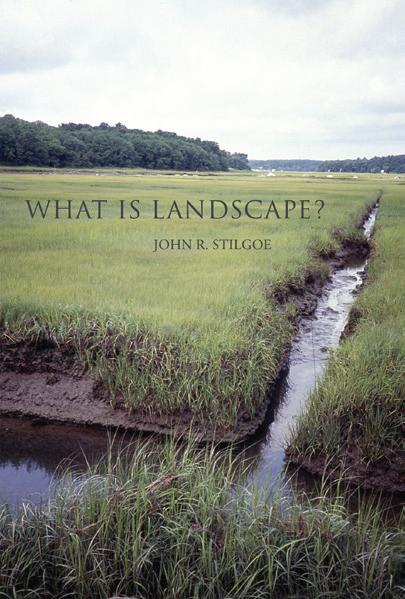
John R. Stilgoe is Orchard Professor in the History of Landscape at Harvard University, where he has taught for forty years. He is the author of many books, most recently Old Fields: Photography, Glamour, and Fantasy Landscape
“Lovers of dictionaries and nature can rejoice in John Stilgoe’s new book.”
Paris Review
“You . . . will find sentences that speak to you so personally as to feel thrilling, almost spookily so.”
Wall Street Journal
May | 5 3/8 x 8, 280 pp. | 18 illus.
$15.95T/£13.95 paper 978-0-262-53528-1
cloth 2015 978-0-262-02989-6
Living Well Now and in the Future Why Sustainability Matters
Randall Curren and Ellen Metzger
Most people acknowledge the profound importance of sustainability, but few can define it. We are ethically bound to live sustainably for the sake of future generations, but what does that mean? In this book, philosopher Randall Curren and scientist Ellen Metzger clarify normative aspects of sustainability. Combining their perspectives, they propose that sustainability can be understood as the art of living well together without diminishing the opportunity to live well in the future. Curren and Metzger formulate an ethic of sustainability with lessons for government, organizations, and individuals. Three illustrative case studies focus on the management of energy, water, and food systems, examining the 2010 Gulf of Mexico oil spill, Australia’s National Water Management System, and patterns of food production in the Mekong region of Southeast Asia.

Randall Curren is Professor of Philosophy at the University of Rochester. Ellen Metzger is Professor of Geology and Director of Science Education at San Jose State University and Codirector of the Bay Area Environmental STEM Institute.
“Science and philosophy come together to weave magic in this exploration of what sustainability means and how we can achieve it.” —Maude Barlow, National Chairperson of the Council of Canadians, cofounder of the Blue Planet Project; 2008–2009 Senior Advisor on Water to the 63rd President of the United Nations General Assembly
“A rare intertwining of philosophical, empirical, and institutional analysis illuminates the issues for everyone concerned with sustainability.”
—Harry Brighouse, Professor of Philosophy, University of Wisconsin-Madison
February | 6 x 9 , 312 pp. | 1 illus. $18.95T/£14.95 paper 978-0-262-53513-7
cloth 2017 978-0-262-03600-9
SPRING 2018 | MITPRESS.MIT.EDU
NOW IN PAPERBACK 108
The End of Ownership
Personal Property in the Digital Economy
Aaron Perzanowski
and Jason Schultz
If you buy a book at the bookstore, you own it. You can take it home, scribble in the margins, put in on the shelf, lend it to a friend, sell it at a garage sale. But is the same thing true for the ebooks or other digital goods you buy? Retailers and copyright holders argue that you don’t own those purchases, you merely license them. That means your ebook vendor can delete the book from your device without warning or explanation. In The End of Ownership, Aaron Perzanowski and Jason Schultz explore how notions of ownership have shifted in the digital marketplace, and make an argument for the benefits of personal property. Ebooks, cloud storage, streaming, and other digital goods offer users convenience and flexibility. But, Perzanowski and Schultz warn, consumers should be aware of the tradeoffs involving user constraints, permanence, and privacy. They argue that introducing aspects of private property and ownership into the digital marketplace would offer both legal and economic benefits. If we own our purchases, we are free to make whatever lawful use of them we please. Technology need not constrain our freedom; it can also empower us.
Aaron Perzanowski is Professor of Law at Case Western Reserve University. Jason Schultz is Professor of Clinical Law at New York University School of Law and Director of NYU’s Technology Law and Policy Clinic.
“This is a lively must-read account of how digital formats have led to an unprecedented transformation of property law.”
Ars Technica
March | 6 x 9, 264 pp. | 6 illus.
$18.95T/£14.95 paper 978-0-262-53524-3
cloth 2016 978-0-262-03501-9
Information Society series

The Digital Mind
How
Science Is Redefining Humanity Arlindo Oliveira

What do computers, cells, and brains have in common? Computers are electronic devices designed by humans; cells are biological entities crafted by evolution; brains are the containers and creators of our minds. But all are, in one way or another, information-processing devices. The power of the human brain is, so far, unequaled by any existing machine or any known living being. Over eons of evolution, the brain has enabled us to develop tools and technology to make our lives easier. In this book, Arlindo Oliveira describes how advances in science and technology could enable us to create digital minds. He calls natural selection the ultimate algorithm, discusses genetics and the evolution of the central nervous system, and describes the role that computer imaging has played in understanding and modeling the brain. If digital minds come into existence (and, Oliveira says, it is difficult to argue that they will not), what are the social, legal, and ethical implications? Will digital minds be our partners, or our rivals?
Arlindo Oliveira is President of Instituto Superior Técnico (Técnico Lisboa), where he is also Professor in the Computer Science and Engineering Department.
“This book is a delightful romp through computer science, biology, physics, and much else, all unified by the question: What is the future of intelligence? Few books this ambitious manage to pull it off, but this one does.”
—Pedro Domingos, Professor of Computer Science, University of Washington; author of The Master Algorithm
March | 6 x 9, 344 pp. | 48 illus. $19.95T/£14.95 paper 978-0-262-53523-6
cloth 2017 978-0-262-03603-0
109 MITPRESS.MIT.EDU | SPRING 2018
|
|
science
information studies
technology
law
NOW IN PAPERBACK
science | artificial intelligence
Common Sense, the Turing Test, and the Quest for Real AI
 Hector J. Levesque
Hector J. Levesque
AI is all the rage, and the buzziest AI buzz surrounds adaptive machine learning: computer systems that learn intelligent behavior from massive amounts of data. This is what powers a driverless car, for example. In this book, Hector Levesque shifts the conversation to “good old fashioned artificial intelligence,” which is based not on heaps of data but on understanding commonsense intelligence. This kind of artificial intelligence is equipped to handle situations that depart from previous patterns—as we do in real life, when, for example, we encounter a washed-out bridge or when the barista informs us there’s no more soy milk. Levesque considers the role of language in learning. He argues that a computer program that passes the famous Turing Test could be a mindless zombie, and he proposes another way to test for intelligence—the Winograd Schema Test, developed by Levesque and his colleagues. As AI migrates more and more into everyday life, we should worry if systems without common sense are making decisions where common sense is needed.
Hector J. Levesque is Professor Emeritus in the Department of Computer Science at the University of Toronto. He is the coauthor of The Logic of Knowledge Bases and the author of Thinking as Computation: A First Course (both published by the MIT Press).
“Packed with profound ideas, thought-provoking, and stimulating.”
Choice
March | 5 3/8 x 8, 192 pp. | 3 illus.
$16.95T/£14.95 paper 978-0-262-53520-5
art
Radicalism in the Wilderness
International Contemporaneity and 1960s Art in Japan Reiko Tomii
1960s Japan was one of the world’s major frontiers of vanguard art. As Japanese artists developed diverse practices parallel to, and sometimes antecedent to, their Western counterparts, they found themselves in a new reality of “international contemporaneity” (kokusaiteki dōjisei). In this book Reiko Tomii examines three key figures in Japanese art of the 1960s who made radical and inventive art in the “wilderness”— away from Tokyo, outside traditional norms, and with little institutional support: the conceptualist Matsuzawa Yutaka, known for the principle of “vanishing of matter” and the practice of “meditative visualization” (kannen); The Play, a collective of “Happeners”; and the local collective GUN (Group Ultra Niigata). The innovative work of these artists included a visionary exhibition in central Japan of “formless emissions” organized by Matsuzwa; the launching of a huge fiberglass egg—“an image of liberation”—from the southernmost tip of Japan’s main island by The Play; and gorgeous color field abstractions painted by GUN on accumulating snow on the riverbed of the Shinano River. In Tomii’s reading, Japan becomes a paradigmatic site of world art history, on the periphery but asserting its place through hard-won international contemporaneity.
Reiko Tomii is a New York-based scholar and curator who investigates post-1945 Japanese art in local and global contexts.
Recipient of the 2017 Robert Motherwell Book Award from the Dedalus Foundation, which recognizes outstanding publications in the history and criticism of modernism in the arts
“Radicalism in the Wilderness draws a clearly organized, meticulously researched picture of a very important strain of postwar Japanese art.” Art in America

April | 7 x 9 , 320 pp. | 18 color illus., 81 b&w illus. $24.95T/£19.95 paper 978-0-262-53531-1
cloth 2016 978-0-262-03412-8
SPRING 2018 | MITPRESS.MIT.EDU
cloth 2017 978-0-262-03604-7 NOW IN PAPERBACK 110
science environment
Is the Universe a Hologram?

Scientists Answer the Most Provocative Questions
Adolfo Plasencia
foreword by Tim O’Reilly
Science today is more a process of collaboration than moments of individual “eurekas.” This book recreates that kind of synergy by offering a series of interconnected dialogues with leading scientists who are asked to reflect on key questions and concepts about the physical world, technology, and the mind. These thinkers offer both specific observations and broader comments about the intellectual traditions that inform these questions; doing so, they reveal a rich seam of interacting ideas. The persistent paradox of our era is that in a world of unprecedented access to information, many of the most important questions remain unsolved. These conversations (conducted by a veteran science writer, Adolfo Plasencia) reflect this, with scientists addressing such issues as intelligence, consciousness, global warming, energy, technology, matter, the possibility of another earth, changing the past, and even the philosophical curveball, “is the universe a hologram?”
Adolfo Plasencia, a blogger, writer, and columnist on science and technology, hosted the Spanish television program Tecnópolis for more than six years. With his colleague Douglas Morgenstern, he cofounded the MITUPV Exchange, a joint initiative of MIT and the Polytechnic University of Valencia (UPV).
“The biggest questions explored in a refreshing and engaging dialogue format by Plasencia with some of the best thinkers our times.”
—Joi Ito, Director, MIT Media Lab; author of Whiplash: How to Survive Our Faster Future
March | 6 x 9, 432 pp. | 35 illus.
$19.95T/£14.95 paper 978-0-262-53525-0
cloth 2017 978-0-262-03601-6
Environmentalism of the Rich Peter Dauvergne
Over the last fifty years, environmentalism has emerged as a clear counterforce to the environmental destruction caused by industrialization, colonialism, and globalization. Activists and policymakers have fought hard to make the earth a better place to live. But has the environmental movement actually brought about meaningful progress toward global sustainability? Signs of global “unsustainability” are everywhere, from decreasing biodiversity to scarcity of fresh water to steadily rising greenhouse gas emissions. Meanwhile, as Peter Dauvergne points out in this provocative book, the environmental movement is increasingly dominated by the environmentalism of the rich—diverted into eco-business, eco-consumption, wilderness preservation, energy efficiency, and recycling. While it’s good that, for example, Barbie dolls’ packaging no longer depletes Indonesian rainforests, and that Toyota Highlanders are available as hybrids, none of this gets at the source of the current sustainability crisis. Dauvergne reveals why a global political economy of ever more—more growth, more sales, more consumption—is swamping environmental gains. Environmentalism of the rich does little to bring about the sweeping institutional change necessary to make progress toward global sustainability.
Peter Dauvergne is Professor of International Relations at the University of British Columbia. He is the author of The Shadows of Consumption: Consequences for the Global Environment and EcoBusiness: A Big-Brand Takeover of Sustainability (with Jane Lister), both published by the MIT Press.
Winner, 2017 Michael Harrington Book Award, sponsored by the New Political Science section of the American Political Science Association
“Peter Dauvergne’s Environmentalism of the Rich is fascinating and infuriating.”

Nature
February | 6 x 9 , 232 pp. $16.95T/£14.95 paper 978-0-262-53514-4
cloth 2016 978-0-262-03495-1
111 MITPRESS.MIT.EDU | SPRING 2018
NOW IN PAPERBACK
cultural studies | technology
Paid
Tales of Dongles, Checks, and Other Money Stuff edited by Bill Maurer and Lana Swartz foreword by Bruce Sterling

Museums are full of the coins, notes, beads, shells, stones, and other objects people have exchanged for millennia. But what about the debris, the things that allow a transaction to take place and are left in its wake? This book is a catalog for a museum exhibition that never happened. It offers a series of short essays, paired with striking images, on these often ephemeral, invisible, or unnoticed transactional objects— money stuff. Although we’ve been told for years that we’re heading toward total cashlessness, payment is increasingly dependent on things. Consider, for example, the dongle, a clever gizmo that processes card payments by turning information from a card’s magnetic stripe into audio information that can be read by a smart phone’s headphone jack. Or dogecoin, a meme of a smiling, bewildered dog’s interior monologue that fueled a virtual currency similar to Bitcoin. Paid encourages us to take a moment to look at the nuts and bolts of our everyday transactions by remembering the stuff that surrounds them.
Bill Maurer is Dean of the School of Social Sciences at the University of California, Irvine. He is the author of How Would You Like to Pay: How Technology Is Changing the Future of Money and other books. Lana Swartz is Assistant Professor of Media Studies at the University of Virginia.
“Its short essays . . . are delightful and some are veritable prose poems.”
Financial Times
March | 5 3/8, 320 pp. | 74 color illus., 11 b&w illus.
$17.95T/£14.95 paper 978-0-262-53521-2
cloth 2017 978-0-262-03575-0 Infrastructures series
regional history | urban planning
Gaining Ground
A History of Landmaking in Boston
Nancy S. Seasholes with a new foreword by Bud Ris
Fully one-sixth of Boston is built on made land. In Gaining Ground historian Nancy Seasholes gives us the first complete account of when, why, and how this land was created. The story of landmaking in Boston is presented geographically; each chapter traces landmaking in a different part of the city from its first permanent settlement to the present. Seasholes introduces findings from recent archaeological investigations in Boston, and relates landmaking to the major historical developments that shaped it. A separate chapter discusses the technology of landmaking in Boston, explaining the basic method used to make land and the changes in its various components over time. The book is copiously illustrated with maps that show the original shoreline in relation to today’s streets, details from historical maps that trace the progress of landmaking, and historical drawings and photographs.
Nancy S. Seasholes is a historian and historical archaeologist. Walking Tours of Boston’s Made Land (MIT Press) is the companion to Gaining Ground.
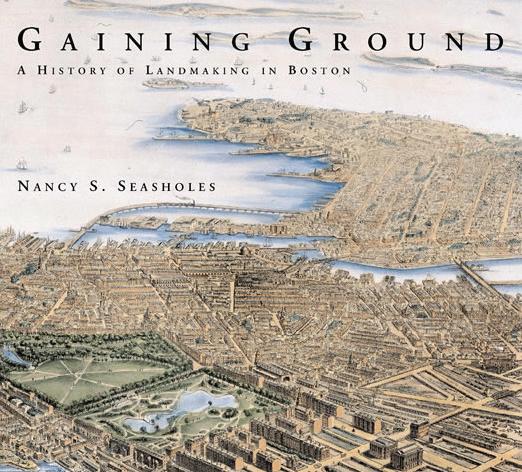
“A stunning compilation of material that documents over three centuries’ worth of [changes]. No previous study of Boston or any other North American city comes close to the detail its pages afford.”
—Richard Longstreth, American Studies International
March | 10 x 9, 552 pp. | 300 illus. $39.95T/£32.95 paper 978-0-262-53483-3
cloth 2003 978-0-262-19494-5
SPRING 2018 | MITPRESS.MIT.EDU
NOW IN PAPERBACK 112
media | popular culture
The World Made Meme
Public Conversations and Participatory Media
Ryan M. Milner
Internet memes—digital snippets that can make a joke, make a point, or make a connection—are now a lingua franca of online life. Most of us have seen the cat playing the piano, Kanye interrupting, Kanye interrupting the cat playing the piano. In The World Made Meme, Ryan Milner argues that memes, and the memetic process, are shaping public conversation. It’s hard to imagine a major pop cultural or political moment that doesn’t generate a constellation of memetic texts. Memetic media, Milner writes, offer participation by reappropriation, balancing the familiar and the foreign as new iterations intertwine with established ideas. Milner argues that memetic media enable the participation of many voices even in the midst of persistent inequality. For better or worse—and Milner offers examples of both—memetic media have changed the nature of public conversations.
Ryan M. Milner is Assistant Professor in the Department of Communication at the College of Charleston.
“Beneath every meme is a sophisticated confluence of language and culture, practice and participation. In The World Made Meme, Milner reveals the complex socio-technical work that goes into memes, highlighting their cultural and political importance.”

—danah boyd, Founder of Data & Society and author of It’s Complicated
“Not only is Milner’s analysis of memetic logics invaluable to Internet scholars, it is equally applicable to embodied texts and traditions—making this a fascinating read for anyone interested in vernacular communication.”
—Whitney Phillips, author of This Is Why We Can’t Have Nice Things
April | 6 x 9, 272 pp. | 80 illus.
$22.00S/£17.95 paper 978-0-262-53522-9
cloth 2016 978-0-262-03499-9
Information Society series
cognitive science | linguistics
Creating Language
Integrating Evolution, Acquisition, and Processing Morten H. Christiansen and Nick Chater foreword by Peter W. Culicover

Language is a hallmark of the human species; the flexibility and unbounded expressivity of our linguistic abilities is unique in the biological world. In this book, Morten Christiansen and Nick Chater argue that to understand this astonishing phenomenon, we must consider how language is created: moment by moment, in the generation and understanding of individual utterances; year by year, as new language learners acquire language skills; and generation by generation, as languages change, split, and fuse through the processes of cultural evolution. Christiansen and Chater propose a revolutionary new framework for understanding the evolution, acquisition, and processing of language, offering an integrated theory of how language creation is intertwined across these multiple timescales. They argue that mainstream generative approaches to language do not provide compelling accounts of language evolution, acquisition, and processing. Their own account draws on important developments from across the language sciences, including statistical natural language processing, learnability theory, computational modeling, and psycholinguistic experiments with children and adults.
Morten H. Christiansen is Professor of Psychology and Codirector of the Cognitive Science Program at Cornell University. Nick Chater is Professor of Behavioural Science at Warwick Business School, University of Warwick.
“Considering profound and important issues, this book will well repay study, reflection, and criticism by anyone involved in language studies.”
—Choice
February | 6 x 9 , 344 pp. | 18 illus. $30.00S/£24.95 paper 978-0-262-53511-3
cloth 2016 978-0-262-03431-9
113 MITPRESS.MIT.EDU | SPRING 2018
NOW IN PAPERBACK
history of computing
ENIAC in Action

Making and Remaking the Modern Computer
Thomas Haigh, Mark Priestley, and Crispin Rope
Conceived in 1943, completed in 1945, and decommissioned in 1955, ENIAC (Electronic Numerical Integrator and Computer) was the first generalpurpose programmable electronic computer. But ENIAC was more than just a milestone on the road to the modern computer. ENIAC in Action tells the whole story for the first time, from ENIAC’s design, construction, testing, and use to its afterlife as part of computing folklore. It highlights the complex relationship of ENIAC and its designers to the revolutionary approaches to computer architecture and coding first documented by John von Neumann in 1945. The authors look at ENIAC as a machine of war, as the “first computer,” as a material artifact constantly remade by its users, and as a subject of (contradictory) historical narratives. They integrate the history of ENIAC and its applications, describing the mathematicians, scientists, and engineers who proposed and designed the machine as well as the men—and particularly the women—who built, programmed, and operated it.
Thomas Haigh is Associate Professor of Information Studies at the University of Wisconsin–Milwaukee. Mark Priestley and Crispin Rope are independent researchers.
“A nuanced, engaging and thoroughly researched account of the early days of computers, the people who built and operated them, and their old and new applications. . . . The creativity and intelligence of good historians writing books such as ENIAC in Action will keep us informed and entertained.”
Forbes
February | 7 x 9, 360 pp. | 43 illus. $25.00S/£19.95 paper 978-0-262-53517-5
cloth 2016 978-0-262-03398-5
History of Computing series
history of computing | gender studies
Programmed Inequality
How Britain Discarded Women Technologists and Lost Its Edge in Computing
Marie Hicks
In 1944, Britain led the world in electronic computing. By 1974, the British computer industry was all but extinct. Marie Hicks’s Programmed Inequality explores the story of labor feminization and gendered technocracy that undercut British efforts to computerize. Women were a hidden engine of growth in high technology from World War II to the 1960s. As computing experienced a gender flip, becoming male-identified in the 1960s and 1970s, labor problems grew into structural ones and gender discrimination caused the nation’s largest computer user—the civil service and sprawling public sector—to make decisions that were disastrous for the British computer industry and the nation as a whole. Programmed Inequality shows how the disappearance of women from the field had grave macroeconomic consequences for Britain, and why the United States risks repeating those errors in the twenty-first century.

Marie Hicks is Assistant Professor of the History of Technology at the University of Wisconsin–Madison.
“Fans of the movie Hidden Figures may be interested in this scholarly analysis of goings on across the Atlantic. “
—Harvard Magazine
“Well researched and makes a convincing case for why this gendered history in Britain is germane to the US today.”
Choice
“Quickly turned into one of those ‘now why hasn’t anyone ever told that story before’ books.”
—Chronicle of Higher Education
February | 6 x 9, 352 pp. | 29 illus. $20.00S/£14.95 paper 978-0-262-53518-2
cloth 2017 978-0-262-03554-5
History of Computing series
SPRING 2018 | MITPRESS.MIT.EDU
NOW IN PAPERBACK 114
The Rationality Quotient

Toward a Test of Rational Thinking
Keith E. Stanovich, Richard F. West, and Maggie E. Toplak
Why are we surprised when smart people act foolishly? Smart people do foolish things because intelligence is not the same as the capacity for rational thinking. The Rationality Quotient explains that these two traits, often (and incorrectly) thought of as one, refer to different cognitive functions. The standard IQ test, the authors argue, doesn’t measure any of the broad components of rationality—adaptive responding, good judgment, and good decision making. The authors show that rational thinking, like intelligence, is a measurable cognitive competence. Drawing on theoretical work and empirical research from the last two decades, they present the first prototype for an assessment of rational thinking analogous to the IQ test: the CART (Comprehensive Assessment of Rational Thinking). The Rationality Quotient explains the components of rational thought assessed by the CART, including probabilistic and scientific reasoning, the avoidance of “miserly” information processing, and the knowledge structures needed for rational thinking.
Keith E. Stanovich is Professor Emeritus of Applied Psychology and Human Development at the University of Toronto and the author of What Intelligence Tests Miss, awarded the 2010 Grawemeyer Award in Education. Richard F. West is Professor Emeritus in the Department of Graduate Psychology at James Madison University. Maggie E. Toplak is Associate Professor of Psychology at York University.
Winner, 2017 PROSE Awards, Education Theory category
“The Rationality Quotient is a significant advance in the psychology of rationality.”
—Daniel Kahneman, Princeton University, winner of the 2002 Nobel Prize in Economics, and author of Thinking Fast and Slow
February | 6 x 9, 480 pp. | 14 illus.
$30.00S/£24.95 paper 978-0-262-53527-4
cloth 2016 978-0-262-03484-5
Reading Heidegger’s Black Notebooks 1931–1941
 edited by Ingo Farin and Jeff Malpas
edited by Ingo Farin and Jeff Malpas
For more than forty years, the philosopher Martin Heidegger logged ideas and opinions in a series of notebooks, known as the “Black Notebooks” after the black oilcloth booklets into which he first transcribed his thoughts. In 2014, the notebooks from 1931 to 1941 were published, sparking immediate controversy. It has long been acknowledged that Heidegger was an enthusiastic supporter of the Nazi Party in the early 1930s. But the notebooks contain a number of anti-Semitic passages—often referring to the stereotype of “World-Jewry”—written even after Heidegger became disenchanted with the Nazis themselves. This volume offers the first collection of responses by Heidegger scholars to the publication of the notebooks. In essays commissioned especially for the book, the contributors offer a wide range of views, addressing not only the issues of anti-Semitism and Nazism but also the broader questions that the Black Notebooks raise.
Ingo Farin is a Lecturer in Philosophy at the University of Tasmania. Jeff Malpas is Distinguished Professor at the University of Tasmania and Distinguished Visiting Professor at Latrobe University. He is the author of Heidegger’s Topology: Being, Place, World and Heidegger and the Thinking of Place: Explorations in the Topology of Being, both published by the MIT Press.
“[The Black Notebooks] make apparent the profound flaws of Heidegger the man and yet also confirm the continuing vitality and relevance of his thinking. This collection makes this alarming contradiction incontrovertible.”
Choice
February | 7 x 9 , 376 pp. $25.00S/£19.95 paper 978-0-262-53515-1
cloth 2016 978-0-262-03401-2
115 MITPRESS.MIT.EDU | SPRING 2018
cognitive science | psychology philosophy
NOW IN PAPERBACK
Nautilus 21 July/August 2017 978-0-262-53395-9 $12.00T/£9.95 paper
Nautilus 22 September/October 2017 $12.00T/£9.95 paper 978-0-262-53487-1
Nautilus 23 November/December 2017 $12.00T/£9.95 paper 978-0-262-53488-8
Nautilus 24 January/February 2018 $12.00T/£9.95 paper 978-0-262-53489-5
Nautilus 25 $12.00T/£9.95 paper 978-0-262-53546-5
Nautilus 26 $12.00T/£9.95 paper 978-0-262-53548-9
Available to booksellers through the MIT Press
Nautilus is a different kind of science magazine. It delivers deep, undiluted, narrative storytelling that brings bigpicture science into today’s most important conversations. It challenges readers to consider the common themes that run through the sciences and connect them to philosophy, culture, and art.

The print edition of Nautilus is a copublication of the MIT Press and NautilusThink. Digital content is housed at nautil.us.
ASME Award for Best Style and Design of a magazine cover, for the September/October 2015 print edition.
“The Man Who Tried to Redeem the World with Logic” was selected for inclusion in The Best American Science and Nature Writing 2016
Nautilus was chosen as an Honoree in the Web: Best Writing (Editorial) category at the 20th Annual Webby Awards.
“How to Restart an Ecosystem” was chosen as an Honoree in the Online Video—General Film: Science & Education category at the 20th Annual Webby Awards.
National Magazine Award for General Excellence in the category of Literature, Science, and Politics.
“America Is Getting the Science of Sun Exposure Wrong” won the American Society of Journalists and Authors’ June Roth Award for an Outstanding Medical Article.
The Webby Awards Best General Website: Science.
Bi-monthly | 128 pp. per issue | 7 1/2 x 10, illustrated ISSN 2372-1758 | E-ISSN 2372-1766 mitpressjournals.org/ntls
science
SPRING 2018 | MITPRESS.MIT.EDU NOW IN PAPERBACK 116 JOURNALS
arts & humanities arts & humanities
Journal of Design and Science

The Journal of Design and Science (JoDS) captures the antidisciplinary ethos of the MIT Media Lab. Like the Lab, it opens new connections between science and design, encouraging discourse that breaks down the barriers between traditional academic disciplines. It explores not only the design of science, but also the science of design.
JoDS is shepherded by a team led by MIT Media Lab Director Joi Ito, and published in partnership with the MIT Press.

Open Access mitpress.mit.edu/jods
ARTMargins
Sven Spieker, executive editor
Karen Benezra, Francesca Dal Lago
Octavian Eșanu, Anthony Gardner, Angela Harutyunyan, and Andrew Weiner, editors
ARTMargins publishes scholarly articles and essays about contemporary art, media, architecture, and critical theory. The journal is devoted to art practices and visual culture in the emerging global margins, from North Africa and the Middle East to the Americas, Eastern and Western Europe, Asia and Australasia.
Triannual, ISSN 2162-2574 | February/June/October 128 pp. per issue | 6 x 9, illustrated http://mitpressjournals.org/artmargins
Dædalus
Phyllis S. Bendell, managing editor
Drawing on the nation’s foremost scholars in the arts, sciences, humanities, and social sciences, Dædalus, Journal of the American Academy of Arts and Sciences, explores the frontiers of knowledge and issues of public importance.
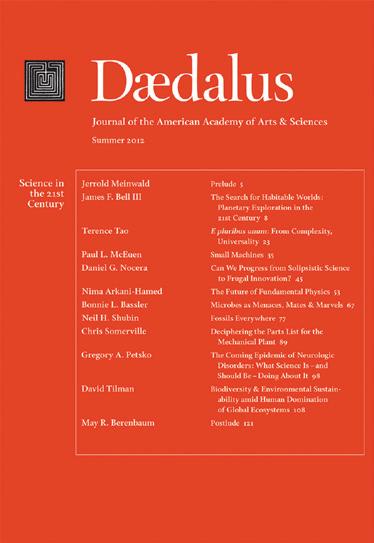
Quarterly, ISSN 0011-5266 | Winter/ Spring/Summer/Fall 144 pp. per issue | 7 x 10 http://mitpressjournals.org/daedalus
PAJ: A Journal of Performance and Art

Bonnie Marranca, editor
PAJ explores innovative work in theatre, performance art, dance, video, writing, technology, sound, and music, bringing together all live arts in thoughtful cultural dialogue.
Triannual, ISSN 1520-281X January/May/September 128 pp. per issue | 7 x 10, illustrated http://mitpressjournals.org/paj
Design Issues
Bruce Brown, Richard Buchanan, Carl DiSalvo, Dennis P. Doordan, Kipum Lee, Victor Margolin, and Ramia Mazé, editors
The first American academic journal to examine design history, theory, and criticism, Design Issues provokes inquiry into the cultural and intellectual issues surrounding design. Special guest-edited issues concentrate on particular themes, such as human-computer interface, service design, design for development, and product design methodology.
Quarterly, ISSN 0747-9360 | Winter/Spring/Summer/Autumn 112 pp. per issue | 7 x 10, illustrated http://mitpressjournals.org/di

October
Rosalind Krauss, Annette Michelson, George Baker, Yve-Alain Bois, Benjamin H. D. Buchloh, Leah Dickerman, Devin Fore, Hal Foster, Denis Hollier, David Joselit, Carrie Lambert-Beatty, Mignon Nixon, and Malcolm Turvey, editors
At the forefront of art criticism and theory, October focuses critical attention on the contemporary arts—film, painting, music, media, photography, performance, sculpture, and literature—and their various contexts of interpretation.
Quarterly, ISSN 0162-2870 | Winter/Spring/Summer/Fall 160 pp. per issue | 7 x 9, illustrated http://mitpressjournals.org/october

117 MITPRESS.MIT.EDU | SPRING 2018 JOURNALS
NEW!
TDR/The Drama Review
Richard Schechner, editor
TDR traces the broad spectrum of performances—studying performances in their aesthetic, social, economic, and political contexts. Long known as the basic resource for current scholarship in performance studies, TDR continues to be a lively forum.
Quarterly, ISSN 1054-2043 Spring, Summer, Fall, Winter 192 pp. per issue | 7 x 10, illustrated http://mitpressjournals.org/tdr
African Arts
edited by the African Arts Consortium: UCLA, Rhodes University, University of Florida, and University of North Carolina at Chapel Hill
African Arts presents original research and critical discourse on traditional, contemporary, and popular African arts and expressive cultures. Since 1967, the journal has reflected the dynamism and diversity of several fields of humanistic study, publishing richly illustrated articles in full color, incorporating the most current theory, practice, and intercultural dialogue.
Quarterly, ISSN 0001-9933 | Spring/Summer/Autumn/Winter 88-100 pp. per issue | 8 1/2 x 11, illustrated http://mitpressjournals.org/aa
Published by the James S. Coleman African Studies Center, UCLA, and distributed by the MIT Press
The New England Quarterly
Jonathan M. Chu, editor
For more than ninety years, The New England Quarterly has published the best that has been written on New England’s cultural, literary, political, and social history. Contributions cover a range of time periods, from before European colonization to the present, and any subject germane to New England’s history.
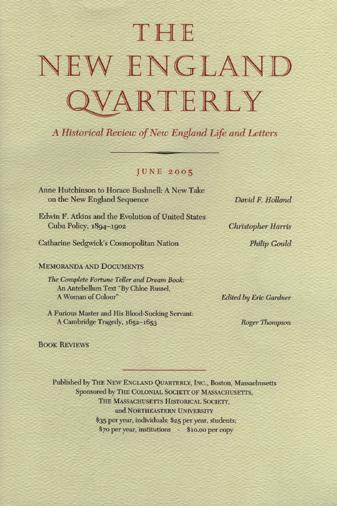
Quarterly, ISSN 0028-4866
March/June/September/December | 192 pp. per issue | 6 x 9 http://mitpressjournals.org/neq

Leonardo/ Leonardo Music Journal
Roger F. Malina, executive editor Nicolas Collins, editor-in-chief
Leonardo is the leading international journal in the application of contemporary science and technology to the arts and music. The companion annual journal, Leonardo Music Journal (including Annual Audio Series), features the latest in music, multimedia art, sound science, and technology.
Six issues per year, ISSN 0024-094X | February/April/June/August/ October/December | 112 pp. per issue | 8 1/2 x 11, illustrated http://mitpressjournals.org/leon
Grey Room
Zeynep Çelik Alexander, Lucia Allais, Eric C.H. de Bruyn, Noam M. Elcott, Byron Hamann, John Harwood, Matthew C. Hunter, editors
Grey Room brings together scholarly and theoretical articles from the fields of architecture, art, media, and politics to forge a cross-disciplinary discourse uniquely relevant to contemporary concerns. Publishing some of the most interesting and original work within these disciplines, Grey Room has positioned itself at the forefront of the most current aesthetic and critical debates.

Quarterly, ISSN 1526-3819 | Winter/Spring/Summer/Fall 128 pp. per issue | 6 3/4 x 9 5/8, illustrated http://mitpressjournals.org/grey
Computer Music Journal
Douglas Keislar, editor
For more than four decades, Computer Music Journal has been the leading publication about computer music, concentrating fully on digital sound technology and all musical applications of computers. It is an essential resource for musicians, composers, scientists, engineers, computer enthusiasts, and anyone exploring the wonders of computergenerated sound.
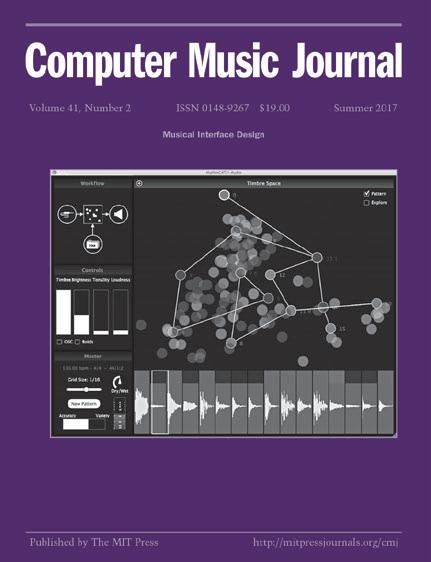
Quarterly, ISSN 0148-9267 | Spring/Summer/Fall/Winter 128 pp. per issue | 8 1/2 x 11, illustrated http://mitpressjournals.org/cmj

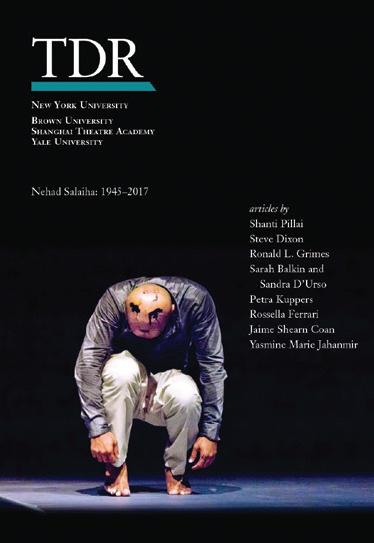
SPRING 2018 | MITPRESS.MIT.EDU NOW IN PAPERBACK 118
&
JOURNALS
arts
humanities arts & humanities
science and technology economics | political science | international affairs | history
Open Mind: Discoveries in Cognitive Science
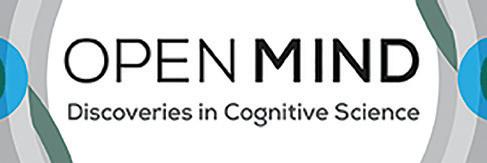 Richard N. Aslin, editor
Richard N. Aslin, editor
Open Mind provides a new venue for the highest quality, most innovative work in cognitive science, offering affordable open access publishing, concise and accessible articles, and quick turnaround times for authors. The journal covers the broad array of content areas within cognitive science using approaches from cognitive psychology, computer science and mathematical psychology, cognitive neuroscience and neuropsychology, comparative psychology and behavioral anthropology, decision sciences, and theoretical and experimental linguistics.
Open Access | Quarterly | February/May/August/November
170 pp. per issue | 8 1/2 x 11 | Founded: 2017 | E-ISSN: 2470-2986 mitpressjournals.org/opmi
Computational Psychiatry
Peter Dayan and Read Montague, editors
Computational Psychiatry publishes original research articles and reviews that involve the application, analysis, or invention of theoretical, computational, and statistical approaches to mental function and dysfunction. Topics include brain modeling over multiple scales and levels of analysis, and the use of these models to understand psychiatric dysfunction, its remediation, and the sustenance of healthy cognition through the lifespan. The journal also has a special interest in computational issues pertaining to related areas such as law and education.
Continuous Publication | Founded: 2017 | E-ISSN: 2397-6227 8 1/2 x 11 | mitpressjournals.org/cpsy
Network Neuroscience
Olaf Sporns, editor
Network Neuroscience features innovative scientific work that significantly advances our understanding of network organization and function in the brain across all scales, from molecules and neurons to circuits and systems.
Quarterly | E-ISSN 2472-1751 | Winter/Spring/Summer/Fall
330 pp. per issue | 8 1/2 x 11 | Founded: 2017 mitpressjournals.org/netn
American Journal of Health Economics

Frank Sloan, editor-in-chief
The American Journal of Health Economics (AJHE) provides a forum for the indepth analysis of institutional health care systems and individual health behaviors. Subjects of interest include the impact of the Affordable Care Act, pharmaceutical regulation, the rise of obesity, the influence of aging populations, and much more. The journal is published by the MIT Press for the American Society of Health Economists (ASHEcon).
Quarterly, ISSN 2332-3493 | Winter/Spring/ Summer/Fall 144 pp. per issue | 6 x 9 http://mitpressjournals.org/ajhe
International Security
Steven E. Miller, editor-in-chief Sean M. Lynn-Jones and Owen R. Coté Jr., editors
International Security publishes lucid, well-documented essays on the full range of contemporary security issues, including the growing importance of environmental, demographic, and humanitarian issues, and the rise of global terrorist networks.

Quarterly, ISSN 0162-2889 | Summer/Fall/Winter/Spring 208 pp. per issue | 6 3/4 x 10 http://mitpressjournals.org/is Published by the MIT Press for the Belfer Center for Science and International Affairs, Harvard University
The Journal of Interdisciplinary History

Robert I. Rotberg, Theodore K. Rabb, and Reed Ueda, editors
The Journal of Interdisciplinary History features substantive articles, research notes, review essays, and book reviews that combine the study of history, spanning all geographic areas and periods, with other scholarly disciplines.
Quarterly, ISSN 0022-1953 | Summer/Autumn/Winter/Spring 192 pp. per issue | 5 3/4 x 9 http://mitpressjournals.org/jih
119 MITPRESS.MIT.EDU | SPRING 2018 JOURNALS
NEW! NEW! NEW!
MIT XP





























concluded.
MITxPress is a collaboration between MITx, which makes some of MIT’s best courses available online, and the MIT Press, a publisher of cuttingedge research and scholarship in the arts and sciences. MITxPress makes available in book form course and lecture materials from MIT’s essential online courses. A valuable resource for those enrolled in MITx courses, MITxPress editions provide a reliable reference after the course has concluded. MITxPress editions are aso useful guides for general readers interested in the subject.
Shaping the Future of Work
 Thomas A. Kochan and Lee Dyer
Thomas A. Kochan and Lee Dyer
This book provides a roadmap for what workers, business, labor, education, and government need to do to build a new social contract for all to prosper. It is a call to action for building high-quality jobs and strong and successful businesses through collaborative eff orts capable of overcoming the deep divisions all too apparent in society today.

Thomas A. Kochan is the George M. Bunker Professor at the MIT Sloan School of Management and Codirector of the Institute for Work and Employment Research. He teaches courses on the future of work to MIT students on campus and to the general public through the MITx online platform. He is coauthor (with Paul Osterman, Richard M. Locke, and Michael J. Piore) of Working in America: A Blueprint for the New Labor Market (MIT Press). Lee Dyer is Emeritus Professor of Human Resource Studies and CAHRS Research Fellow at the ILR School, Cornell University. His CAHRS-related research and outreach activities focus on workforce agility and more broadly the future of work. In addition, he teaches a combination undergrad/grad-level course titled “Forging the Future of Work” at the ILR School.
8 x 10, 232 pp. | $20.00Z/£14.95 paper | 978-0-262-53491-8


SPRING 2018 | MITPRESS.MIT.EDU 120
MITPXP
MITCogNet
From the MIT Press
CogNet is an indispensable resource for cutting-edge primary research on the human mind. With an expanding collection of nearly 800 books, 6 journals, and 12 major reference works, CogNet provides unparalleled access to over 435,000 pages of DRM-free content.
MITCogNet
From the MIT Press
Find out for yourself what scholars at Caltech, Princeton, Tufts, and the National Institutes of Health already know: CogNet is the essential tool for research in the brain and cognitive sciences. With DRM-free content, COUNTER4 usage reporting, and a beautiful responsive website.
cognet.mit.edu
A dynamic space where creative communities connect, linking the arts and science and technology, ARTECA is a curated collection, housing thousands of pages of DRM-free book and journal content from the MIT Press. This includes nearly 200 books and 500 journal issues from 4,000 contributors, with new content added regularly.
ARTECA will become a space for artists, practitioners, researchers, and educators to store, explore, and discuss their content—a space to archive work, gray literature, ephemera, and more.
arteca.mit.edu
Stay in touch with the MIT Press
Newsletter
Sign up for our e-newsletter to hear about new books and to receive exclusive discounts and offers: mitpress.mit.edu/ subscribe
Podcast
Hear directly from our authors through our Author Podcasts: mitpress.mit.edu/multimedia Blog

The MIT PressLog chronicles news about MIT Press authors and books: mitpress.mit.edu/ blog
BITS
Read excerpts from influential MIT Press books on subjects ranging from gaming to sustainability, from virtual communities to energy, from economics to architecture at the MIT Press BITS: mitpress.mit.edu/BITS
follow us





@mitpress
mitpress.mit.edu
THE DIGITAL MIT PRESS
121 MITPRESS.MIT.EDU | SPRING 2018
NORTH AMERICAN BOOKSELLERS
Orders should be sent to:
The MIT Press c/o TriLiteral LLC 100 Maple Ridge Drive Cumberland, RI 02864-1769 USA
For Orders and Customer Service: Tel: 800 405 1619 | Fax: 800 406 9145
E-mail Orders: orders@triliteral.org
E-mail Customer Service: customer.care@triliteral.org Online: http://mitpress.mit.edu
For inquiries regarding sales representation in the United States and Canada, contact: David Goldberg Sales Manager
The MIT Press
One Rogers Street Cambridge, MA 02142-1209 USA
Tel: 617 253 8838 | Fax: 617 253 1709 e-mail: mitpress_sales@mit.edu
For inquiries regarding bulk purchases in the United States, contact: Christopher Eyer Sales Coordinator Tel: 617 258 0584 | Fax: 617 253 1709 e-mail: cweyer@mit.edu
Return Policy:
The return policy of our distribution center is: returned books must be in resalable condition. No permission is required, but invoice information must be provided or a penalty discount will be used. No returns accepted 18 months from invoice date.
US booksellers may send returns to: MIT Press Returns c/o TriLiteral LLC 100 Maple Ridge Drive Cumberland, RI 02864-1769 USA
Canadian booksellers may send returns to: TriLiteral c/o APC 45 Mural Street Richmond Hill ON L48 1J4 Canada
Individuals: Books from the MIT Press are available at fine booksellers worldwide. Individuals who wish to order directly from the publisher may do so through our website or by calling our toll-free number.
The MIT Press Guarantee:
If for any reason you are not satisfied with a book you receive, return it to us within 10 days and we will promptly refund your payment.
Examination copies are available at the discretion of the MIT Press to qualified instructors of appropriate courses. Please address inquiries to: Michelle Pullano Textbook Manager
Tel: 617 253 3620 | Fax: 617 253 1709 e-mail: mitpress_textbooks@mit.edu
Review Copy Requests:
Please submit review copy requests on the letterhead of the publication to the Publicity Department. Fax: 617 253 1709 e-mail: mitpress-publicity@mit.edu
Subsidiary and International Rights: For information on subsidiary and international rights, please contact: Bill Smith Director of Business Development One Rogers Street Cambridge, MA 02142-1209 USA
Tel: 617 253 0629 | Fax: 617 253 1709 smithwmj@mit.edu
For permissions, please contact: Pam Quick e-mail: quik@mit.edu
Publication Dates:
Books will be shipped 2 to 4 weeks prior to publication date listed in catalog.
Discount Codes: T: Trade Discount S: Short Discount X: Text Discount
Prices are subject to change without notice. Contact the sales department at the MIT Press for discount schedules. The MIT Press Agency Plan offers special discounts to booksellers who stock scholarly and professional books. For details, contact the Sales Manager, Tel: 617 253 8838, Fax: 617 253 1709, e-mail: mitpress_sales@mit.edu
SPRING 2018 | MITPRESS.MIT.EDU 122 JOURNALS ORDER INFORMATION | BOOK DIVISION
INTERNATIONAL SALES AND PROMOTION
U.S. Office: Asia, Australia, New Zealand, Central America, Mexico, South America
Address for information: Jessica Lawrence-Hurt International Sales Manager The MIT Press One Rogers Street, Cambridge, MA 02142-1209 USA Tel: 617 258 0582 | Fax: 617 253 1709 e-mail: jclh@mit.edu
Address for orders: The MIT Press c/o Triliteral LLC 100 Maple Ridge Drive Cumberland, RI 02864-1769 USA Tel: 401 531 2800 | Fax: 401 531 2802 e-mail: orders@triliteral.org
European Sales Office: United Kingdom, Continental Europe, Eire, India, Pakistan, the Middle East, Israel, Africa Andrew Brewer, Managing Director University Press Group 57 Cobnar Road, Sheffield, S8 8QA, United Kingdom Tel: 44 0 114 274 0129 | Mobile: 44 0 7967 031856 e-mail: andrew.brewer@virgin.net
Address for information: Lois Edwards, Business Manager University Press Group LEC1 New Era Estate Oldlands Way, Bognor Regis West Sussex, PO22 9NQ, United Kingdom Tel: 44 0 1243 842165 | Fax: 44 0 1243 842167 e-mail: lois@upguk.com
Address for orders: John Wiley & Sons, Ltd. European Distribution Centre New Era Estate Oldlands Way, Bognor Regis West Sussex, PO22 9NQ, United Kingdom
Overseas orders: Tel: 44 1243 843294
Dial-free orders in UK only: Tel: 0800 243407 | Fax: 44 0 1243 843296
E-mail Customer Service: customer@wiley.com
European Marketing Office: For publicity and promotion inquiries contact: The MIT Press Suite 2, 1 Duchess Street, London, W1W 6AN, United Kingdom Tel: 44 0 207 306 0603 e-mail: info@mitpress.org.uk
REPRESENTATION AND DISTRIBUTION
Australia, New Zealand: Representation and Distribution Footprint Books 4/8 Jubilee Avenue Warriewood NSW 2102 Australia
Tel: 61 02 9997 3973 | Fax: 61 02 9997 3185 e-mail: info@footprint.com.au www.footprint.com.au
Canada: Representation
Mical Moser Tel: 718 781 2770 | Fax: 514 224 3412 email: micalmoser@me.com
China: Representation
Ms. Wei Zhao Everest Intl Publishing Services 1-1-2002 Wang Jing SOHO No. 1 East Futong Avenue Chaoyang District Beijing 100102 Tel: (86 10) 5707 6180 e-mail: wzbooks@aol.com or wzbooks@163.com Europe: Netherlands, Germany, Austria, Spain, Portugal, Greece, Hungary, Czech Republic, Croatia, Slovenia, Russia: Representation
Dominique Bartshukoff University Press Group 2 Place d’Anvers Paris, 75009, France Tel: 33 1 44 63 02 41 e-mail: dsbartshukoff@gmail.com
Publication in the United Kingdom, Continental Europe, Eire, India, Pakistan, the Middle East, Israel, and Africa will be approximately one month later than the date given for each title in the catalog. Prices are subject to change without notice.
For information about examination copy requests go to: http://mitpress.mit.edu/services/instructors
123 MITPRESS.MIT.EDU | SPRING 2018 123 ORDER INFORMATION | BOOK DIVISION
Africa (except North Africa & South Africa)
Joseph Makope
e-mail: joseph@timuribooks.com
Europe: France, Belgium, Scandinavia, Switzerland, Italy, Poland: Representation
Peter Jacques University Press Group 278 Manchester Road, Isle of Dogs London, E14 3HW United Kingdom Tel: +44 7966 288593 e-mail: peter@jjacques.demon.co.uk
Europe: UK and Eire: Sales Manager
Ben Mitchell University Press Group 62 Fairford House, Kennington Lane London, SE11 4HR United Kingdom Tel: 44 0 207 735 7455 | Mobile: 44 0 7766 913593 e-mail: ben.mitchell.upg@gmail.com
India, Bangladesh, Sri Lanka: Representation S. Janakiraman Book Marketing Services 2-A, Ramaniyam Building, 216-217, Peters Road Royapettah, Chennai 600 014 India Tel: +91 98400 74523 | Fax: 91 44 2848 0222 e-mail: bkmtg@gmail.com www.bookmarketing.org
Hong Kong and Japan: Representation
Rockbook
Gilles Fauveau Exprime 5F 10-10 Ichibancho Chiyoda-ku 102-0082 Tokyo Japan
Tel: 81 (0) 9039624650 e-mail: gfauveau@rockbook.net
Latin America: Representation James Papworth Itsabook 20 Monro Drive Guildford GU2 9PS United Kingdom Tel: +44 7802848778 e-mail: papworthjames@gmail.com
Middle East: Algeria, Cyprus, Israel, Jordan, Malta, Morocco, Palestine, Tunisia, Turkey: Representation
Claire de Gruchy, Avicenna Partnership Ltd. P.O. Box 501, Witney, Oxfordshire OX28 9JL United Kingdom
Tel: 44 0 7771 887843 | Fax: 44 0 1865 882966 e-mail: claire_degruchy@yahoo.co.uk
Middle East: Saudi Arabia, Kuwait, UAE, Bahrain, Sultanate of Oman, Qatar, Egypt, Lebanon, Syria, Iraq, Libya, and Iran: Representation Bill Kennedy, Avicenna Partnership Ltd. P.O. Box 501, Witney, Oxfordshire OX28 9JL
United Kingdom Tel: +44 7802 244457 | Fax: 44 1387 247375 e-mail: AvicennaBK@gmail.com
Pakistan: Representation Saleem Malik, World Press 27/A Al-Firdous Ave., Faiz Road Muslim Town Lahore 54600 Pakistan Tel: 0300-4012652 e-mail: worldpress@gmail.com
SE Asia: Brunei, Cambodia, Indonesia, Laos, Malaysia, Myanmar, Philippines, Singapore, Thailand, Vietnam: Representation
Ian Pringle, APD Singapore PTE LTD 52 Genting Lane #06-05
Ruby Land Complex 1 Singapore 349560
Tel: 65 6749 3551 | Fax: 65 6749 3552 e-mail: ian@apdsing.com www.apdsing.com
South Africa
Contact the University Press Group office
South Korea: Representation Se-Yung Jun and Min-Hwa Yoo ICK (Information and Culture Korea) 49, Donggyo-Ro 13-Gil, Mapo-Gu Seoul
South Korea 03997 Tel: 82 2 3141 4791 | Fax: 82 2 3141 7733 e-mail: cs.ick@ick.co.kr
Taiwan: Representation
Chiafeng Peng BK Norton 5F, 60, Roosevelt Rd. Sec. 4 Taipei 100 Taiwan Tel: 886 2 6632 0088 | Fax: 886 2 6632 9772 e-mail: chiafeng@bookman.com.tw
SPRING 2018 | MITPRESS.MIT.EDU 124 ORDER INFORMATION | BOOK DIVISION
THE MIT PRESS IS REPRESENTED THROUGHOUT THE WORLD
BY THE FOLLOWING OUTSTANDING RIGHTS REPRESENTATION:
Agência Riff | Brazil
Joao Paulo Riff | joaopaulo@agenciariff.com.br
Bardon Media Agency | China
Ivan Zhang | ivan@bardonchinese.com
Bardon Media Agency | Taiwan
Luisa Yeh | luisa@bardonchinese.com
Anna Jarota Agency | France
Anna Jarota | ajarota@ajafr.com
The Berlin Agency | Germany
Frauke Jung-Lindemann | jung-lindemann@t-online.de
O.A. Literary Agency | Greece
Michael Avramides | amichael@otenet.gr
Maxima Creative Agency | Indonesia
Santo Manurung | santo@cbn.net.id
Deborah Harris Agency | Israel
Efrat Lev | efrat@thedeborahharrisagency.com
Reiser Literary Agency | Italy
Roberto Gilodi | roberto.gilodi@reiseragency.it
The English Agency | Japan
Tsutomu Yawata | tsutomu_yawata@eaj.co.jp
Korea Copyright Center | Korea
Sangeun | selee@kccseoul.com
Sebes & Bisseling Literary Agency | Netherlands, Sweden, Finland, Norway, Denmark
Paul Sebes | sebes@sebes.nl
Graal Ltd. | Poland
Lukasz Wrobel | lukasz.wrobel@graal.com.pl
The Kessler Agency | Romania
Roxana Sahanagiu | roxana@kessler-agency.ro
Alexander Korzhenevski Agency (AKA) | Russia
Igor Korzhenevski | igor.akagency@gmail.com
Agencia Literaria Carmen Balcells | Spain
Ivette Antoni | i.antoni@ag-balcells.com
The Kayi Agency | Turkey
Fusun Kayi | fusun@nkliteraryagency.com
For all other translation rights queries, please contact: Bill Smith
Director of Business Development
The MIT Press
One Rogers Street, Cambridge MA 02142-1209 Tel: 617-253-0629 smithwmj@mit.edu
Killian Press provides print and e-book production and distribution services for self-published works by MIT faculty and alumni.

Dr. James R. Killian (1904–1988) was an MIT alumnus who became the tenth president of MIT (1948–1959) and then chairman of the MIT Corporation. In 1932 he helped found the Technology Press, now the MIT Press.
Nanjing Never Cries
A Novel Hong Zheng
Set in the city of Nanjing during the time of the Sino-Japanese war (1937–1945), this novel tells the story of four people caught up in the violence and tumult of these years: John Winthrop and his MIT classmate, the brilliant Chinese physicist Calvin Ren (Ren Kewen); Judy, Calvin’s Chinese-American wife; and the beautiful and determined young woman Chen May.
Vivid and disturbing, Nanjing Never Cries offers a compelling story of the horror of war and the power of love and friendship.

Hong Zheng began his academic career as an Assistant Professor at MIT in 1965 and became a full Professor at MIT in 1969. He is a member of the Academia Sinica. His work with T. T. Wu on high energy scattering was mentioned on the front page of the New York Times in March 1973. He is working on the theory of dark matter.
$29.95T/£22.95 cloth 978-1-944347-00-0
125 MITPRESS.MIT.EDU | SPRING 2018
ORDER INFORMATION | BOOK DIVISION KILLIAN PRESS
Adventure, Agamben 31
Afflicted, Piemonte 101
Agamben, The Adventure 31
Aklin, Renewables 88
American Illuminations, Nye 70
Ananny, Networked Press Freedom 95
Andersen, The Metainterface 78
Anxious Mind, Kurth 100
Art of Naming, Ohl 1
Artificial Unintelligence, Broussard 9
Atkinson, Big Is Beautiful 11
Austin, Living Zen Remindfully 107
Authors, Users, and Pirates, Meese 94
Bardzell, Critical Theory and Interaction Design 83
Balancing Green, Sheffi 10 Being Ecological, Morton 20
Bermúdez, The Bodily Self 99
Besançon, The Walls Have the Floor 13
Bifet, Data Stream Mining 79
Big Hunger, Fisher 107
Big Is Beautiful, Atkinson 11
Bikes and Bloomers, Jungnickel 60
Bissell, Transit Life 104
Blust, 101 Problems and Solutions in Historical Linguistics 97
Boczkowski, Trump and the Media 4
Bodily Self, Bermúdez 99
Book, Borsuk 21
Boon, Practice 42
Bordowitz, Glenn Ligon 43
Borsuk, The Book 21
Bradford, The Energy System 90 Break.up, Walsh 48
Broussard, Artificial Unintelligence 9
Bruyninckx, Listening in the Field 103
Burwell, Quantum Language and the Migration of Scientific Concepts 101
Can We Price Carbon?, Rabe 89
Centerbook, Goldring 45 Chaos and Awe, Scala 7
Chasing Men on Fire, Waxman 98
Chinese Economy, second edition, Naughton 87
Choosing Down Syndrome, Kaposy 75
Christiansen, Creating Language 113
Cloonan, The Monumental Challenge of Preservation 94 Collins, Gravity’s Kiss 106
Comay, The Dash—The Other Side of Absolute Knowing 39 Common Sense, the Turing Test, and the Quest for Real AI, Levesque 110
Comparative Economics in a Transforming World Economy, third edition, Rosser 84
Continued Exercise of Reason, Dooley 102
Convergent Evolution in Stone-Tool Technology, O’Brien 91 Creating Language, Christiansen 113
Critical Fabulations, Rosner 81
Critical Theory and Interaction Design, Bardzell 83
Curren, Living Well Now and in the Future 108
Currie, Rock, Bone, and Ruin 71
Cusset, How the World Swung to the Right 46 Cytowic, Synesthesia 23
Dash—The Other Side of Absolute Knowing, Comay 39 Data Science, Kelleher 24
Data Stream Mining, Bifet 79
Dauvergne, Environmentalism of the Rich 111
Davies, Economic Science Fictions 61
Deaccessioning and its Discontents, Gammon 35
Deep Learning Revolution, Sejnowski 3
Developments in Global Sourcing, Kohler 84
Diaz, Global Dystopias 65
Didi-Huberman, The Eye of History 38 Digital Mind, Oliveira 109
Distributed Algorithms, second edition, Fokkink 80 Donnelly, What Nature 66
Dooley, The Continued Exercise of Reason 102 Drawing on Architecture, Kauffman 33
Drawing Physics, Lemons 105 Dusty Pink, Schuhl 51
Economic Science Fictions, Davies 61 Efficient Cognition, Schulz 78 Egan, Globalizing Innovation 86 Eigen, On Accident 34 Ekardt, Toward Fewer Images 37 End of Ownership, Perzanowski 109 Energy System, Bradford 90
ENIAC in Action, Haigh 114
Environmentalism of the Rich, Dauvergne 111 Essential Tversky, Tversky 69 Ethics in Everyday Places, Koch 73
Eugenic Mind Project, Wilson 93 Eye of History, Didi-Huberman 38 Families at Play, Siyahhan 72
Farin, Reading Heidegger’s Black Notebooks 1931–1941 115 Feher, Rated Agency 44
Felleisen, How to Design Programs, second edition 80 50 Years Since MLK, Terry 66
Fighting Corruption Is Dangerous, Okonjo-Iweala 16 Fisher, Big Hunger 107
Flintstone Modernism, Lieber 32 Fokkink, Distributed Algorithms, second edition 80 Fraser, 2016 36
Freedman, A Future for Public Service Television 62 Friedman, The Reasoned Schemer, second edition 81 Future for Public Service Television, Freedman 62 Future Gaming, Ruffino 64
Gaining Ground, Seasholes 112 Gallerneaux, High Static, Dead Lines 53 Gammon, Deaccessioning and its Discontents 35 Glenn Ligon, Bordowitz 43
Global Climate Policy, Luterbacher 89 Global Dystopias, Díaz 65 Global Gay, Martel 12 Global Warming and the Sweetness of Life, Hern 19 Globalizing Innovation, Egan 86 Goldring, Centerbook 45 Goldstein, Planetary Improvement 88 Gore Capitalism, Valencia 47 Grabel, When Things Don’t Fall Apart 85 Graff, Vzszhhzz 52 Gravity’s Kiss, Collins 106 Groys, Russian Cosmism 6 Guiraudie, Now the Night Begins 50 Hack, Site Planning 77 Haeringer, Market Design 83 Haigh, ENIAC in Action 114 Han, Topology of Violence 40 Heart of the Brain, Leng 99 Hern, Global Warming and the Sweetness of Life 19 Hessler, Tidalectics 30 Hicks, Programmed Inequality 114 Hidden Landscape Once a Week, Sinker 58 High Static, Dead Lines, Gallerneaux 53 Hoddeson, The Man Who Saw Tomorrow 76 Hoffmaster, Re-Reasoning Ethics 100 Honing, The Origins of Musicality 104 Honoured Dead, Parsons 55
How the World Swung to the Right, Cusset 46 How to Design Programs, second edition, Felleisen 80 How to Go Digital, MIT Sloan Management Review 26 Humphreys, The Qualified Self 74 Illusion of Conscious Will, New Edition, Wegner 79 Incurable, Johnson 56
Is the Universe a Hologram?, Plasencia 111 Israel and the World Economy, Razin 85 Jack, The Surrender of Silence 54 Johnson, Incurable 56 Jungnickel, Bikes and Bloomers 60 Kaposy, Choosing Down Syndrome 75 Karaganis, Shadow Libraries 95 Kauffman, Drawing on Architecture 33 Kaufman, Pseudoscience 103 Kelleher, Data Science 24
SPRING 2018 | MITPRESS.MIT.EDU 126 JOURNALS INDEX
Keogh, A Play of Bodies 92
Klopfer, Resonant Games 86
Koch, Ethics in Everyday Places 73
Kohler, Developments in Global Sourcing 84
Kurth, The Anxious Mind 100
LaBelle, Sonic Agency 63
Lemons, Drawing Physics 105
Leng, The Heart of the Brain 99
Lepawsky, Reassembling Rubbish 91
Lessons from the Lobster, Nassim 14
Levesque, Common Sense, the Turing Test, and the Quest for Real AI 110
Lieber, Flintstone Modernism 32
Listening in the Field, Bruyninckx 103
Living Well Now and in the Future, Curren 108
Living Zen Remindfully, Austin 107
Lomas, Translating Happiness 15
Lotz, We Now Disrupt This Broadcast 17
Luterbacher, Global Climate Policy 89
Machineries of Oil, Shafiee 93
Man Who Saw Tomorrow, Hoddeson 76 Market Design, Haeringer 83
Martel, Global Gay 12
Materiality of Interaction, Wiberg 82
Maurer, Paid 112
Mavhunga, The Mobile Workshop 102 McIntyre, Post-Truth 22
Meese, Authors, Users, and Pirates 94
Metainterface, Andersen 78
Milner, The World Made Meme 113
Milosevic, Protecting Children Online? 96
MIT Sloan Management Review, How to Go Digital 26
MIT Sloan Management Review, What the Digital Future Holds 27 Mobile Workshop, Mavhunga 102
Monumental Challenge of Preservation, Cloonan 94
Morton, Being Ecological 20 Nassim, Lessons from the Lobster 14
Naughton, The Chinese Economy, second edition 87
Networked Press Freedom, Ananny 95
New Solutions for Cybersecurity, Shrobe 96
Norbert Wiener—A Life in Cybernetics, Wiener 68
Norrie, Scottish Lost Boys 57
Now the Night Begins, Guiraudie 50
Nye, American Illuminations 70
O’Brien, Convergent Evolution in Stone-Tool Technology 91
Ohl, The Art of Naming 1
Okonjo-Iweala, Fighting Corruption Is Dangerous 16
Oliveira, The Digital Mind 109
On Accident, Eigen 34
101 Problems and Solutions in Historical Linguistics, Blust 97 Origins of Musicality, Honing 104 Paid, Maurer 112
Parsons, The Honoured Dead 55 Perzanowski, The End of Ownership 109 Piemonte, Afflicted 101
Pilkington, Strange Attractor Journal Five 59
Planetary Improvement, Goldstein 88
Plasencia, Is the Universe a Hologram? 111 Play of Bodies, Keogh 92
Polizzotti, Sympathy for the Traitor 2 Post-Truth, McIntyre 22
Practice, Boon 42
Preston, The Synthetic Age 8
Programmed Inequality, Hicks 114 Protecting Children Online?, Milosevic 96
Pseudoscience, Kaufman 103
Qualified Self, Humphreys 74
Quantum Language and the Migration of Scientific Concepts, Burwell 101 Rabe, Can We Price Carbon? 89
Radical Fool of Capitalism, Welzbacher 41 Radicalism in the Wilderness, Tomii 110 Ramchand, Situations and Syntactic Structures 97 Rated Agency, Feher 44
Rationality Quotient, Stanovich 115
Razin, Israel and the World Economy 85
Re-Reasoning Ethics, Hoffmaster 100
Reading Heidegger’s Black Notebooks 1931–1941, Farin 115
Reasoned Schemer, second edition, Friedman 81
Reassembling Rubbish, Lepawsky 91
Renewables, Aklin 88
Resonant Games, Klopfer 86
Rethinking Human Evolution, Schwartz 92 Rock, Bone, and Ruin, Currie 71
Rosner, Critical Fabulations 81 Rosser, Comparative Economics in a Transforming World Economy, third edition 84
Roush, Twelve Tomorrows 29 Ruffino, Future Gaming 64
Russian Cosmism, Groys 6 Sasse, Science Not Silence 5 Scala, Chaos and Awe 7 Schuhl, Dusty Pink 51 Schulz, Efficient Cognition 78 Schwartz, Rethinking Human Evolution 92 Science Not Silence, Sasse 5 Scottish Lost Boys, Norrie 57 Seasholes, Gaining Ground 112 Sejnowski, The Deep Learning Revolution 3 Shadow Libraries, Karaganis 95 Shafiee, Machineries of Oil 93 Sheffi, Balancing Green 10 Shrobe, New Solutions for Cybersecurity 96 Sinker, A Hidden Landscape Once a Week 58 Site Planning, Hack 77 Situations and Syntactic Structures, Ramchand 97 Sivaram, Taming the Sun 18 Siyahhan, Families at Play 72 Sonic Agency, LaBelle 63 Stanovich, The Rationality Quotient 115 Stilgoe, What Is Landscape? 108
Strange Attractor Journal Five, Pilkington 59 Surrender of Silence, Jack 54 Sympathy for the Traitor, Polizzotti 2 Synesthesia, Cytowic 23 Synthetic Age, Preston 8 Taming the Sun, Sivaram 18 Temin, The Vanishing Middle Class, new epilogue 105 Terry, 50 Years Since MLK 66 Tidalectics, Hessler 30 Tomii, Radicalism in the Wilderness 110 Topology of Violence, Han 40 Torras, The Vestigial Heart 28 Toward Fewer Images, Ekardt 37 Transit Life, Bissell 104 Translating Happiness, Lomas 15 Trump and the Media, Boczkowski 4 Tversky, The Essential Tversky 69 Twelve Tomorrows, Roush 29 2016, Fraser 36
Valencia, Gore Capitalism 47
Vanishing Middle Class, new epilogue, Temin 105 Vestigial Heart, Torras 28
Vzszhhzz, Graff 52
Walls Have the Floor, Besançon 13 Walsh, Break.up 48
Waxman, Chasing Men on Fire 98
We Now Disrupt This Broadcast, Lotz 17 Wegner, The Illusion of Conscious Will, New Edition 79 Weight of the Earth, Wojnarowicz 48 Welzbacher, The Radical Fool of Capitalism 41
What Is Landscape?, Stilgoe 108
What Nature, Donnelly 66
What the Digital Future Holds, MIT Sloan Management Review 27
When Things Don’t Fall Apart, Grabel 85
Wiberg, The Materiality of Interaction 82
Wiener, Norbert Wiener—A Life in Cybernetics 68
Wilson, The Eugenic Mind Project 93
Wojnarowicz, The Weight of the Earth 48
World Made Meme, Milner 113
Žižek, Žižek’s Jokes 106 Žižek’s Jokes, Žižek 106
127 MITPRESS.MIT.EDU | SPRING 2018 INDEX
$17.95T/£14.95 paper 978-0-262-53443-7 $17.95T/£14.95 paper 978-0-262-53447-5
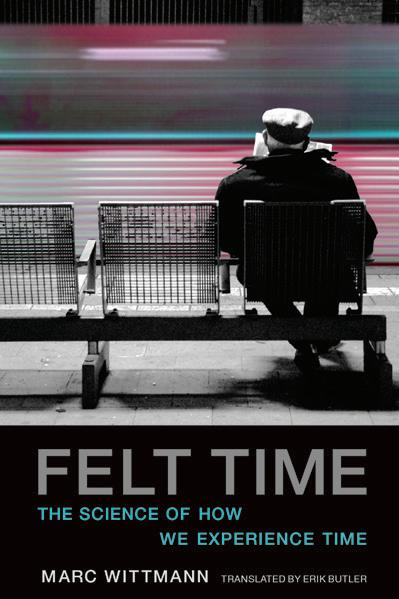



$15.95T/£13.95 paper 978-0-262-52986-0
$15.95T/£13.95 paper 978-1-58435-034-7

$33.95T/£27.95 paper 978-0-262-73154-6


$18.95T/£14.95 paper 978-0-262-02630-7
$15.95T/£13.95 paper 978-0-262-53354-6 19.95T/£14.95 paper 978-0-262-53452-9
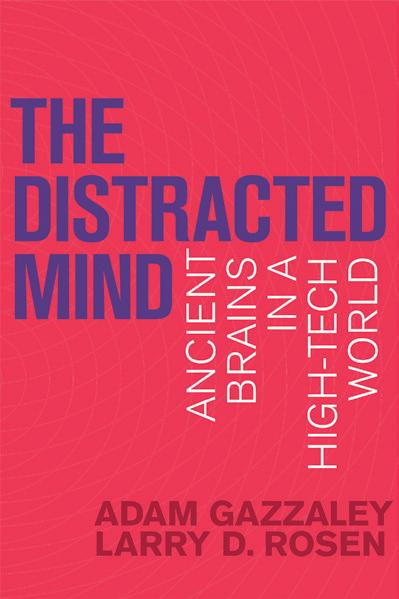




$17.95T/£14.95 paper 978-0-262-52996-9
$15.95T/ £13.95 paper 978-0-262-53349-2
SPRING 2018 | MITPRESS.MIT.EDU 128 JOURNALS PAPERBACK HIGHLIGHTS
$16.95T/£14.95 paper 978-0-262-52520-6 $16.95T/£14.95 paper 978-0-262-52548-0





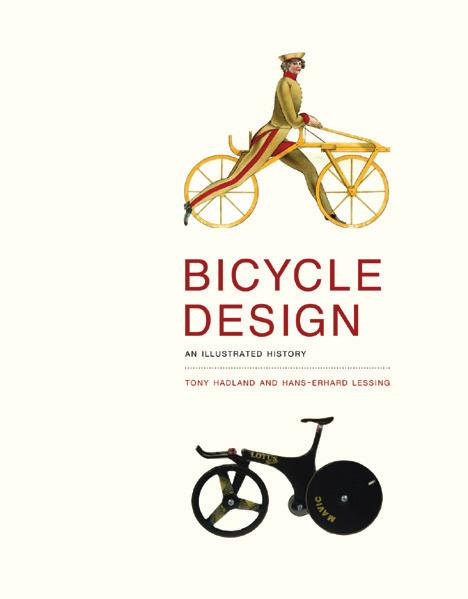


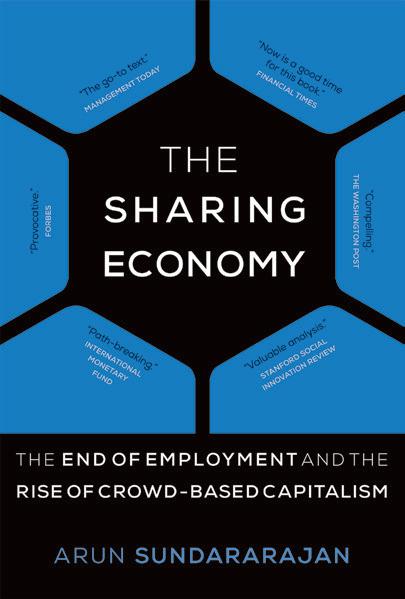
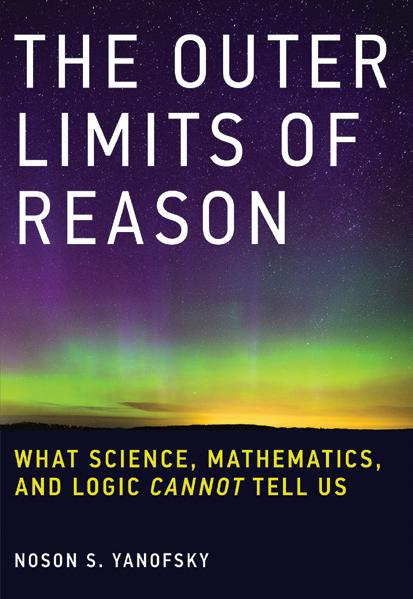


129 MITPRESS.MIT.EDU | SPRING 2018 PAPERBACK HIGHLIGHTS $16.95T/£14.95 paper
paper
paper
$25.95T/£20.95 paper 978-0-262-68150-6 $28.95T/£23.95 paper
$16.95T/£14.95 paper 978-0-262-53355-3 $17.95T paper
$16.95T/£14.95 paper
paper
paper
978-0-262-53350-8 $20.95T/£16.95
978-0-262-52713-2 $17.95T/£14.95
978-0-262-52980-8
978-0-262-61106-0 $19.95T/£14.95 paper 978-0-262-52984-6
978-0-262-53341-6
978-0-262-51699-0 $18.95T/£14.95
978-0-262-53352-2 $19.95T/£14.95
978-0-262-52998-3 $26.95T/£21.95 paper 978-0-262-52970-9
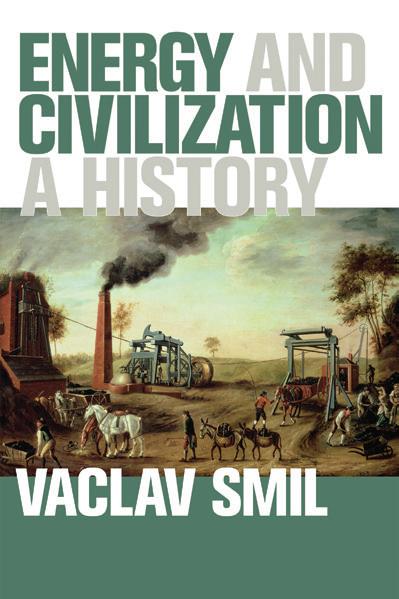


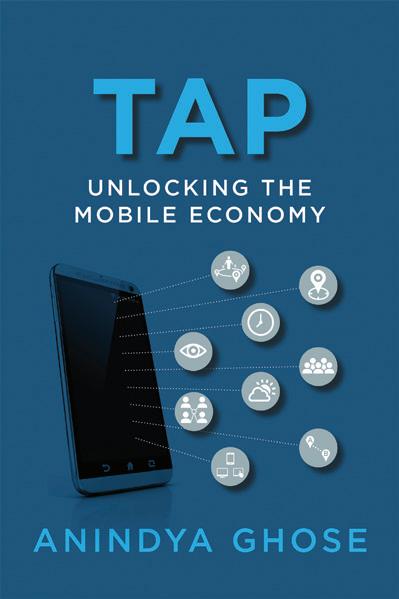


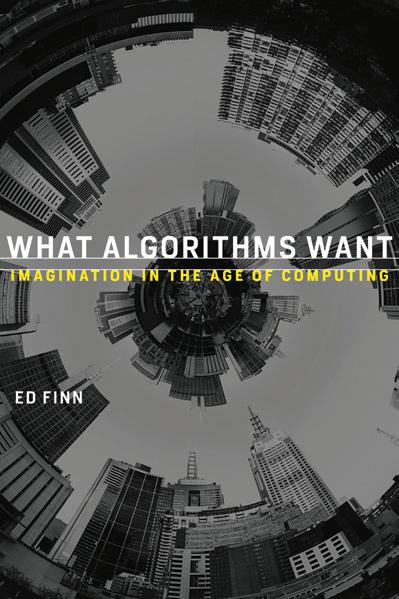




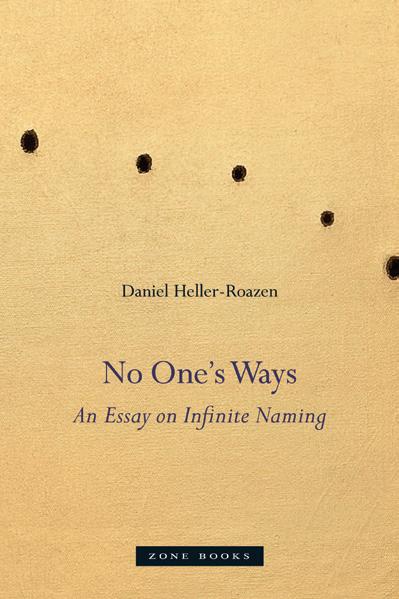
SPRING 2018 | MITPRESS.MIT.EDU 130 JOURNALS RECENT HIGHLIGHTS $29.95T/£24.95 cloth 978-0-262-03571-2 $34.95T/£27.95 cloth 978-0-262-03574-3 $39.95T/$32.95 cloth 978-0-262-03577-4 $29.95T/£24.95 cloth 978-0-262-03592-7 $29.95T/£24.95 cloth 978-0-262-03627-6 $19.95T/$14.95 paper 978-0-262-53347-8 $12.95/£9.50 paper 978-0-262-53337-9 $19.95T/$14.95 paper 978-0-262-03569-9 $24.95T/£19.95 paper 978-0-262-53348-5 $32.95T/£27.95 cloth 978-1-935408-88-8 $17.95T/£14.95 paper 978-1-58435-196-2 $24.95T/£19.95 paper 978-0-262-03635-1





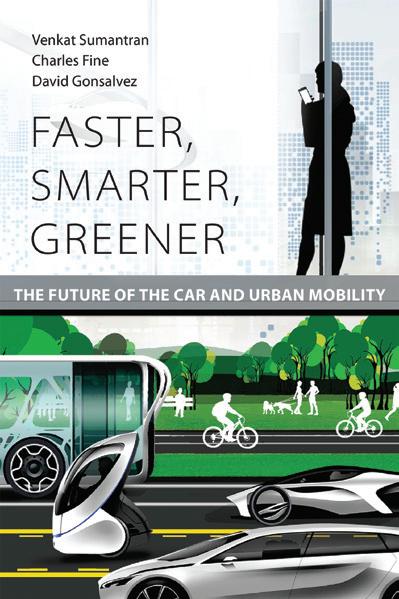





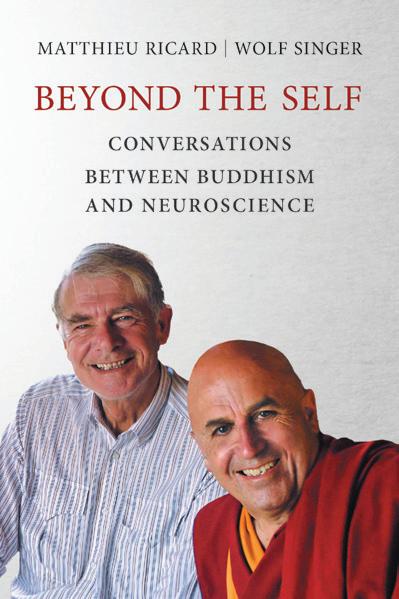
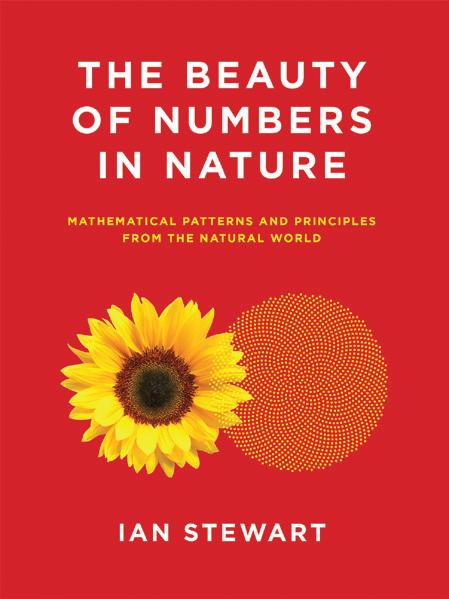

131 MITPRESS.MIT.EDU | SPRING 2018
RECENT HIGHLIGHTS
$100.00T/£83.95 cloth 978-0-262-03696-2 $29.95T/£24.95 978-0-262-03719-8 $60.00T/£49.95 cloth 978-0-262-03650-4 $34.95T/£27.95 cloth 978-0-262-03636-8 $34.95T/£27.95 cloth 978-0-262-03623-8 $29.95T/£24.95 cloth 978-0-262-03648-1 $29.95T/£24.95 cloth 978-0-262-03666-5 $29.95T/£24.95 cloth 978-0-262-03723-5 $24.95T 978-0-262-53428-4 For sale in North America only $14.95T/£12.95 cloth 978-0-262-03711-2 $29.95T/£24.95 cloth 978-0-262-03694-8 $29.95T/£24.95 cloth 978-0-262-03727-3
$27.95T/£22.95 cloth 978-0-262-03663-4
$24.95T/£19.95 cloth 978-0-262-03729-7
$29.95T/£24.95 cloth 978-0-262-03681-8
$27.95T/£22.95 cloth 978-0-262-03631-3

$16.95T/£14.95 cloth 978-0-262-03684-9
$34.95T/£27.95 cloth 978-0-262-03678-8
$21.95T/£15.99 paper 978-1-907222-48-1

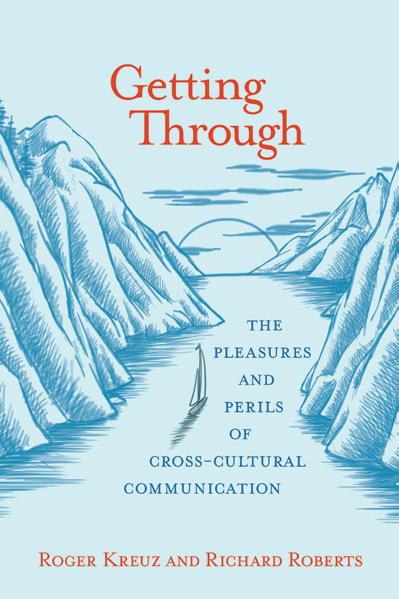




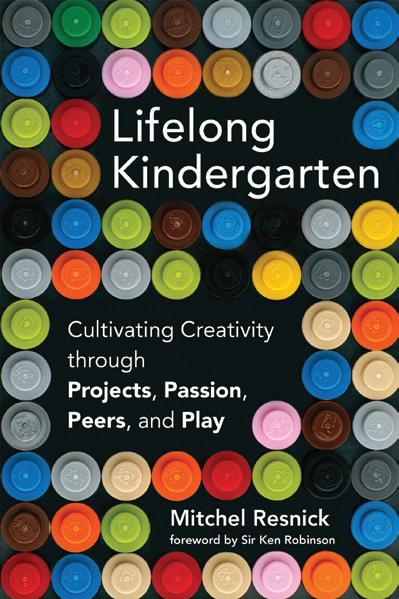



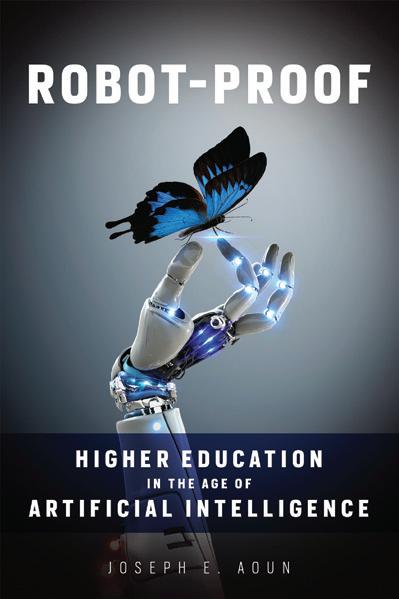
SPRING 2018 | MITPRESS.MIT.EDU 132
$38.00S/£31.95 cloth 978-0-262-03691-7 $29.95T/£24.95 cloth 978-0-262-03661-0 $24.95T/£19.95 cloth 978-0-262-03686-3 $24.95T/£19.95 cloth 978-0-262-03728-0 $19.95T/£14.95 cloth 978-0-262-03714-3
RECENT HIGHLIGHTS


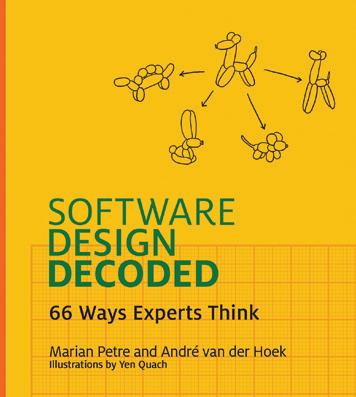









paper
BACKLIST HIGHLIGHTS
cloth
$17.95T/£10.95 cloth
cloth
cloth
$19.95T/£14.95 cloth 978-0-262-03518-7 $29.95T/£24.95 cloth 978-0-262-02760-1 $40.95T/£34.95 cloth 978-0-262-01520-2
cloth
$65.95T/£54.95 cloth 978-0-262-01607-0 $80.00X/£66.95 cloth
paper
$19.95T/£14.95
978-0-262-53328-7
$23.95T/£19.95
978-0-262-13472-9
978-0-262-06266-4 $17.95T/£10.95
978-0-262-01621-6 $43.95T/£36.95
978-0-262-01548-6
$49.95T/£41.95
978-0-262-03480-7
978-0-262-03561-3 $35.95T/£29.95
978-0-262-55042-0

NONPROFIT ORG. US POSTAGE PAID PERMIT NO. 54518 BOSTON, MA 02142 THE MIT PRESS One Rogers Street Cambridge, MA 02142-1209 USA 978-0-262-53553-3 Spring 2018 Essential MIT Press The MIT Press Essential Knowledge series Concise, accessible overviews of compelling topics, written by leading thinkers, on topics ranging from the cultural and historical to the scientific and technical.





 Michael Ohl is a biologist at the Natural History Museum of Berlin and an Associate Professor at Humboldt University in Berlin.
Michael Ohl is a biologist at the Natural History Museum of Berlin and an Associate Professor at Humboldt University in Berlin.









 Mark W. Scala is Chief Curator at the Frist Center for the Visual Arts in Nashville.
Mark W. Scala is Chief Curator at the Frist Center for the Visual Arts in Nashville.


































 Giorgio Agamben translated by Lorenzo Chiesa
Giorgio Agamben translated by Lorenzo Chiesa





















 Lillis
Lillis
 Rebecca Comay and Frank Ruda
Rebecca Comay and Frank Ruda







































































 Andrew Fisher foreword by Saru Jayaraman
Andrew Fisher foreword by Saru Jayaraman
 M.D.
M.D.




 Hector J. Levesque
Hector J. Levesque










 edited by Ingo Farin and Jeff Malpas
edited by Ingo Farin and Jeff Malpas













 Richard N. Aslin, editor
Richard N. Aslin, editor








 Thomas A. Kochan and Lee Dyer
Thomas A. Kochan and Lee Dyer





















































































